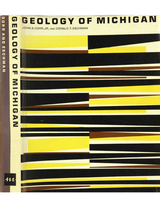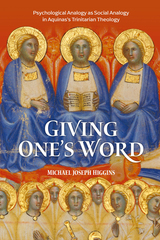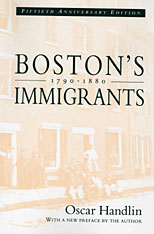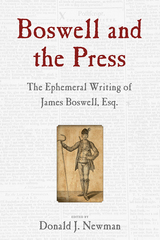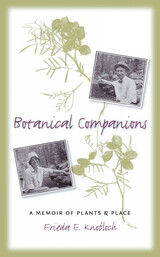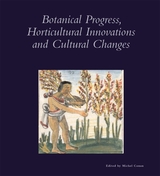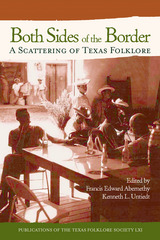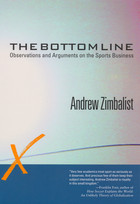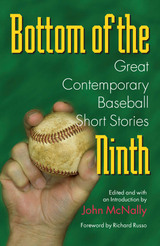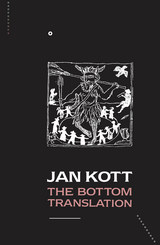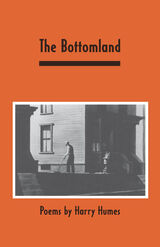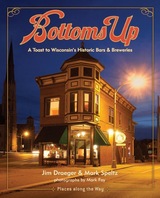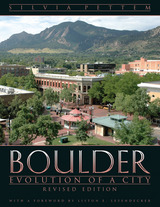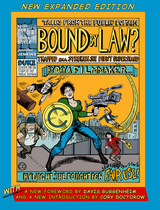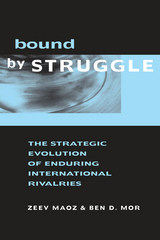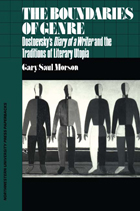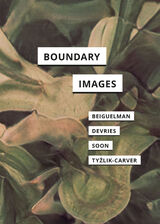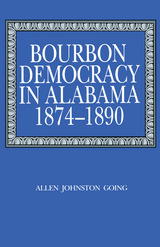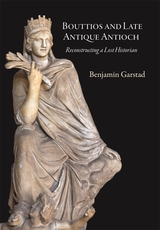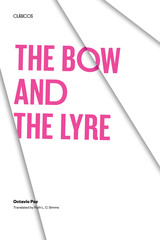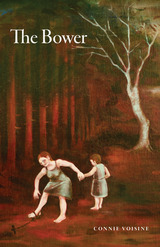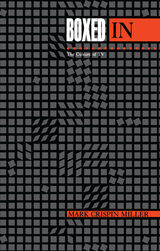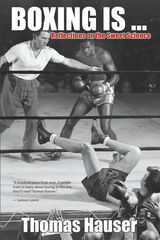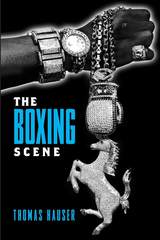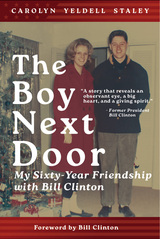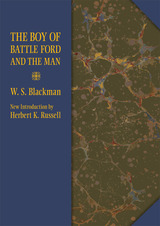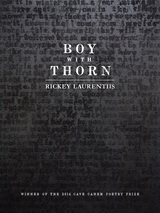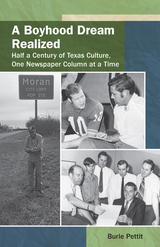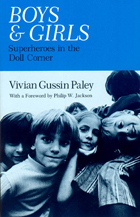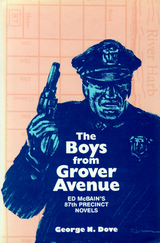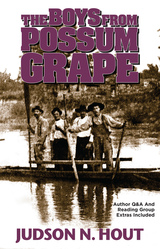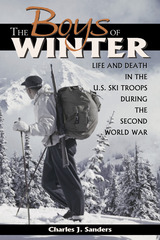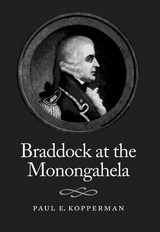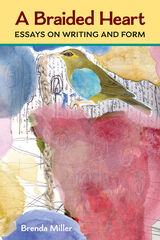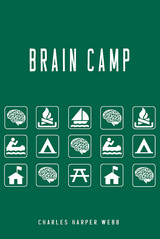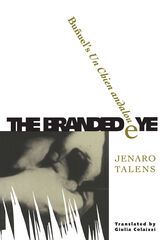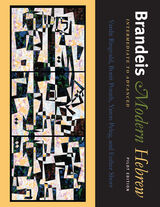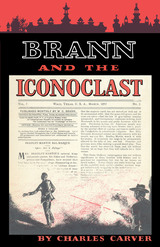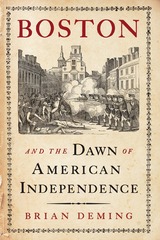 Boston and the Dawn of American Independence
Brian Deming
Westholme Publishing, 2013 How a New England Port City Became the Site of the Revolution That Changed the History of the World
In 1760, no one could imagine the American colonies revolting against Great Britain. The colonists were not hungry peasants groaning under the whip of a brute. They lived well. Land was cheap, wages were good, opportunities abounded. While many colonists had been in the New World for generations, they identified with Britain, and England was still “home.” Yet in the space of just fifteen years these sturdy bonds snapped. Boston—a town of just 16,000—lit the fire for American Independence. Brian Deming explains how and why in his lucid, lively, and deeply researched Boston and the Dawn of American Independence.
To dodge British taxes, Boston merchants for as long as anyone could remember had routinely smuggled in molasses from French and Spanish possessions in the Caribbean. Boston distillers transformed this sweet cargo into rum, the liquid gold traded around the world. But British authorities cracked down on smuggling and imposed the Sugar Act to help pay for the debts incurred during their wars against France. Then came the hated Stamp Act, a tax on documents, newspapers, and printed materials of all kinds. In courtrooms, in the press, and in the streets, Bostonians rallied in protest against taxation without representation. As anger swept America, Boston was at the center of the storm, which burst forth with the infamous massacre and the Boston Tea Party. By 1775, open warfare erupted at Lexington, Concord, and Bunker Hill. Boston and the Dawn of American Independence ties these scenes together with the people of the time, including John and Sam Adams, John Hancock, and Paul Revere, as well as Thomas Hutchinson, the beleaguered Massachusetts royal governor, and James Otis, the bombastic, unstable early patriot. Readers hear their voices, but also those of many amazing, colorful, and memorable personalities— feisty mob leaders, defiant Tories, terrified townspeople. Deming illuminates this epic story with views of everyday life inside taverns, outside newspaper offices, and along the wharves, and the political dramas in London and Philadelphia that shaped the destiny of an empire and gave rise to the world’s first modern democracy.
 Boston and the Making of a Global City
James C. O’Connell
University of Massachusetts Press, 2025 In the late twentieth century the American and global economy shifted from manufacturing toward a knowledge industry. Following an economic low point several decades earlier, the city of Boston took advantage of the new era of globalization, fueled by dramatic advances in telecommunications, computer power, and air and sea travel, as well as its own impressive intellectual capital.
Boston and the Making of a Global City pulls together scholarship, media stories, personal interviews, and city planning documents to tell the story of Boston’s historical trajectory, as it quickly became a competitive global hub. Starting with its role as a colonial port and nineteenth-century maritime power, but moving quickly forward, the book describes how Boston capitalized on its strengths in higher education and such innovation sectors as life sciences, healthcare, information technology, and finance. Author James O’Connell traces the historical sweep of global flows—trade and supply chains, innovation and the dissemination of knowledge, investment, transportation, tourism, telecommunications, and immigration—that have shaped the city and region’s development. This volume also addresses the economic, social, and environmental challenges that Boston currently faces and how it is strategically positioned to confront them going forward.
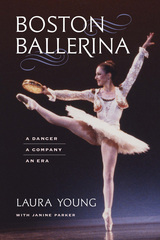 Boston Ballerina: A Dancer, a Company, an Era
Laura Young and Janine Parker
University Press of New England, 2017 As a charter member of Boston Ballet and its predecessor, New England Civic Ballet, Laura Young has been affiliated with the company longer than any other dancer in its history. This book is both a memoir of her personal journey and a fascinating account of Boston Ballet’s rise from a regional troupe to the internationally recognized company that it is today. It is interspersed with ruminations on the history of ballet, stories from the company’s Balanchine-influenced early years under founder E. Virginia Williams, and recollections from noteworthy tours, including those featuring the legendary Rudolf Nureyev, with whom Young was frequently paired. After retiring from the stage, Young has continued her affiliation with Boston Ballet, both as an administrator and a teacher. Working in collaboration with Janine Parker, Young has written a lively, informed, and entertaining memoir.
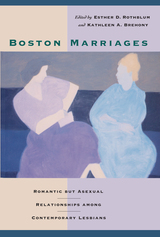 Boston Marriages: Romantic but Asexual Relationships among Contemporary Lesbians
Esther D. Rothblum
University of Massachusetts Press, 1993 For decades the term "Boston marriage" was used to describe single women who lived together and shared their lives. The presumption then was that these partnerships were nonsexual. In recent years, however, the opposite assumption has prevailed, causing some women involved in such relationships to hide the asexual nature of their attachments in the lesbian community.
Convinced that Boston marriages are both legitimate and important, Esther D. Rothblum and Kathleen A. Brehony argue that in a society that defines intimacy by the occurrence of sexual activity, we have no word for--and thus no understanding of--the intensely romantic but asexual relationships that some lesbians form. By bringing these relationships "out of the closet" and discussing them openly, the editors and other contributors to this volume challenge our views about lesbianism and address larger questions concerning the construction of sexuality and sexual identity. How, for example, do we define a lesbian relationship? What constitutes a romantic involvement? If a couple does not engage in sex, are they still considered lovers?
This book includes ten personal accounts by women involved in Boston marriages as well as theoretical essays by Lillian Faderman, Marnie Hall, JoAnn Loulan, Suzanna Rose, Debra Zand, Marie Cini, and Laura Brown.
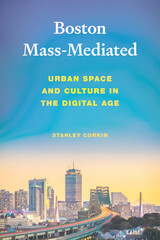 Boston Mass-Mediated: Urban Space and Culture in the Digital Age
Stanley Corkin
University of Massachusetts Press, 2024 In the mid-nineteenth century, Boston fashioned itself as a global hub. By the early 1970s, it was barely a dot on the national picture. It had gained a reputation as a decaying city rife with crime and dysfunctional politics, as well as decidedly retrograde race relations, prominently exemplified by white resistance to school integration. Despite this historical ebb in its national and international presence, it still possessed the infrastructure—superb educational institutions such as Harvard and MIT, world-class sports teams like the Celtics and Red Sox, powerful media outlets like The Boston Globe, and extensive shipping capacity—required to eventually thrive in an age of global trade and mass communication.
In Boston Mass-Mediated, Stanley Corkin explores the power of mass media to define a place. He examines the tensions between the emergent and prosperous city of the late twentieth and early twenty-first centuries and its representation in a range of media genres such as news journalism, professional sports broadcasting, and popular films like Mystic River and The Departed. This mass media, with its ever-increasing digital reach, has emphasized a city restricted by tropes suggestive of an earlier Boston—racism, white ethnic crime, Catholicism, and a pre-modern insularity—even as it becomes increasingly international and multicultural. These tropes mediate our understanding and experience of the city. Using Boston as a case study, Corkin contends that our contemporary sense of place occurs through a media saturated world, a world created by the explosion of digital technology that is steeped in preconceptions.
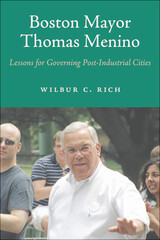 Boston Mayor Thomas Menino: Lessons for Governing Post-Industrial Cities
Wilbur C. Rich
University of Massachusetts Press, 2023 Hailed as one of Boston’s most beloved mayors and its longest serving, Thomas Menino (1942–2014) deftly managed the city’s finances and transformed Boston into the hub of innovation that it is today. During his time in office, Boston embraced modern industrial growth and moved forward with noteworthy developments that altered neighborhoods, while also facing ongoing racial strife, challenges of unaffordable housing, and significant public union negotiations. Mayors in modern American cities occupy unique positions as government leaders who need to remain active parts of their communities in addition to being tasked with fixing neighborhood issues, managing crises, and keeping schools and public infrastructure on course. Situating news coverage alongside interviews with the mayor and his administration, political scientist Wilbur C. Rich chronicles Menino’s time in office while also considering his personal and professional background, his larger-than-life personality, and his ambitions. Menino’s approach to these challenges and opportunities offers enduring lessons to anyone interested in urban government and political leadership.
 Boston Priests, 1848-1910: A Study of Social and Intellectual Change
Donna Merwick
Harvard University Press, 1973 Donna Merwick rejects the usual assumption that Boston Catholicism is, definitively, Irish Catholicism. In her penetrating study of three distinct generations of Boston priests in the late nineteenth century, the author shows that Irish Catholicism met with steady opposition. Her account of the struggle of Boston clerics and intellectuals to relate their faith to their experiences in the changing city provides a new interpretation of Boston Catholic culture.
In the 1840s Catholic influence in Boston was minimal and, therefore, accepted. The clergy, like other Bostonians, took pride in the city's history and colonial traditions. In measuring the impact of the massive Irish-Catholic immigration of the 1850s upon this first group of priests, the author traces in part the desperate efforts of Archbishop John J. Williams to maintain Boston's genteel traditions. The character of the clergy changed from the first generation, in which priests wrote novels and radical editorials, to a second generation, in which the influence of European Catholicism was strengthened. Immigrant priests and their Irish parishioners eventually outnumbered the Yankee Catholics, but they nevertheless failed to win genuine leadership in the diocese.
A third group of priests, emerging in the 1890s under the leadership of Cardinal William O'Connell, displaced not only two generations of clergymen, but also two ways of life: one which sought to leave a legacy of admiration for the Boston Protestant heritage, and one which never understood Boston and tried to replace its cultural ways with something Irish, European, and Jansenistic. O'Connell, who had the Progressive's instinct for organization, imposed a kind of intellectual martial law on the clergy which discouraged, even punished, nonconformity. It is only at this point that it becomes reasonable to consider the traditional view that Boston Catholic thought is monolithic.
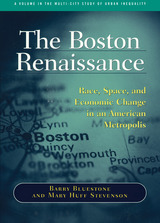 The Boston Renaissance: Race, Space, and Economic Change in an American Metropolis
Barry Bluestone
Russell Sage Foundation, 2000 This volume documents metropolitan Boston's metamorphosis from a casualty of manufacturing decline in the 1970s to a paragon of the high-tech and service industries in the 1990s. The city's rebound has been part of a wider regional renaissance, as new commercial centers have sprung up outside the city limits. A stream of immigrants have flowed into the area, redrawing the map of ethnic relations in the city. While Boston's vaunted mind-based economy rewards the highly educated, many unskilled workers have also found opportunities servicing the city's growing health and education industries. Boston's renaissance remains uneven, and the authors identify a variety of handicaps (low education, unstable employment, single parenthood) that still hold minorities back. Nonetheless this book presents Boston as a hopeful example of how America's older cities can reinvent themselves in the wake of suburbanization and deindustrialization. A Volume in the Multi-City Study of Urban Inequality
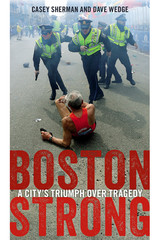 Boston Strong: A City's Triumph over Tragedy
Casey Sherman and Dave Wedge
University Press of New England, 2015 Veteran journalists Casey Sherman and Dave Wedge have written the definitive inside look at the Boston Marathon bombings with a unique, Boston-based account of the events that riveted the world. From the Tsarnaev brothers’ years leading up to the act of terror to the bomb scene itself (which both authors witnessed first-hand within minutes of the blast), from the terrifying police shootout with the suspects to the ultimate capture of the younger brother, Boston Strong: A City’s Triumph over Tragedy reports all the facts—and so much more. Based on months of intensive interviews, this is the first book to tell the entire story through the eyes of those who experienced it. From the cop first on the scene, to the detectives assigned to the manhunt, the authors provide a behind-the-scenes look at the investigation. More than a true-crime book, Boston Strong also tells the tragic but ultimately life-affirming story of the victims and their recoveries and gives voice to those who lost loved ones. With their extensive reporting, writing experience, and deep ties to the Boston area, Sherman and Wedge create the perfect match of story, place, and authors. If you’re only going to read one book on this tragic but uplifting story, this is it.
Boston Strong: The Poem to benefit The One Fund Boston
Richard Blanco
University of Pittsburgh Press, 2013
Boston Strong is a commemorative chapbook that beautifully reproduces Richard Blanco’s poignant poem presented May 30, 2013 at the benefit concert to help the people most affected by the tragic events that occured on April 15, 2013 during the Boston Marathon.
The net proceeds from the sale of this book benefit The One Fund Boston.
The One Fund Boston was established through the generosity of businesses, foundations, and individual donors. The Victim Relief Fund of The One Fund Boston will be used to assist those families of the victims who were killed and the victims who were most seriously affected as a result of the tragic events during the Boston Marathon on April 15, 2013, and related events on April 18 and April 19.
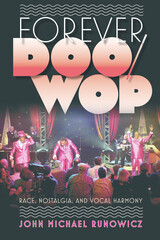 Boston: Voices and Visions
Shaun O'Connell
University of Massachusetts Press, 2010 "New England was founded consciously, and in no fit of absence of mind," observed historian Samuel Eliot Morison on the establishment of the Bay Colony in 1630 on the narrow, mountainous Shawmut peninsula of what became Massachusetts. That self-conscious presence of mind has endured for four centuries. Boston has been shaped and sustained by observation, imagination, and interpretation. As a result, the evolving vision of Boston has yielded a compelling literary record.
In this wide-ranging anthology, Shaun O'Connell includes a generous sampling of those who have recorded, revised, and redefined the vision of Boston. Anne Bradstreet, Nathaniel Hawthorne, Henry James, W. E. B. Du Bois, Mary Antin, Edwin O'Connor, John Updike, and many others eloquently evoke and explain Boston in these pages.
From John Winthrop's "city upon a hill" sermon, delivered aboard the Arbella before his followers landed in 1630 in the place they would call Boston, to Robert Lowell's "For the Union Dead," a poem delivered in Boston's Public Garden in 1960, writers have continued to invoke the high purposes for which the city was founded, sometimes in praise of the city, but often in what Robert Frost named a "lover's quarrel," in works that called attention to the city's failures to fulfill its promises. In the twenty-first century some writers continue to celebrate or to castigate the city, while others look back to Boston's origins to reassess its founders and renew its covenant of high purpose.
This is an interpretive anthology—one that includes commentary as well as writings. Section introductions provide historical and biographical context, offer analysis that stresses the thematic relevance of each selection, and explore the pattern of their relations. Rather than present a random array of writers who happen to have been Greater Bostonians, O'Connell focuses on those authors who possessed a commitment to the sense of place, those who addressed Boston not only as a geographical, social, and political entity but as an image, idea, and site of symbolic values
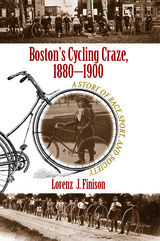 Boston's Cycling Craze, 1880-1900: A Story of Race, Sport, and Society
Lorenz J. Finison
University of Massachusetts Press, 2014 From 1877 to 1896, the popularity of bicycles increased exponentially, and Boston was in on it from the start. The Boston Bicycle Club was the first in the nation, and the city's cyclists formed the nucleus of a new national organization, the League of American Wheelmen. The sport was becoming a craze, and Massachusetts had the largest per capita membership in the league in the 1890s and the largest percentage of women members. Several prominent cycling magazines were published in Boston, making cycling a topic of press coverage and a growing cultural influence as well as a form of recreation.
Lorenz J. Finison explores the remarkable rise of Boston cycling through the lives of several participants, including Kittie Knox, a biracial twenty-year-old seamstress who challenged the color line; Mary Sargent Hopkins, a self-proclaimed expert on women's cycling and publisher of The Wheelwoman; and Abbot Bassett, a longtime secretary of the League of American Wheelman and a vocal cycling advocate for forty years. Finison shows how these riders and others interacted on the road and in their cycling clubhouses, often constrained by issues of race, class, religion, and gender. He reveals the challenges facing these riders, whether cycling for recreation or racing, in a time of segregation, increased immigration, and debates about the rights of women.
Boston’s Immigrants, 1790–1880: A Study in Acculturation, Fiftieth Anniversary Edition, With a New Preface by the Author
Oscar Handlin
Harvard University Press, 1991 As fresh today as when it was first published a half-century ago, Boston’s Immigrants illuminates the history of a particular city and an important phase of the American experience. Focusing on the life of people from the perspective of the social historian, the book explores a wide range of subjects: peasant society and the cause of European migration, population growth and industrial development, the ideology of progress and Catholic thought, and urban politics and the dynamic of prejudice. A generation of students and scholars has profited from its insights, and general readers have enjoyed its lively style. A new Preface by the author reflects upon the book’s intellectual origins.
Boston’s Immigrants, 1790–1880: A Study in Acculturation, Revised and Enlarged Edition, With a New Preface by the Author
Oscar Handlin
Harvard University Press, 1979 As fresh in 1991 as when it first published a half-century ago, Boston's Immigrants illuminates the history of a particular city and an important phase of the American experience. Focusing on the life of people from the perspective of the social historian, the book explores a wide range of subjects: peasants society and the cause of European migration, population growth and industrial development, the ideology of progress and Catholic thought, and urban politics and the dynamic of prejudice. A generation of students and scholars has profited from its insights, and general readers have enjoyed its lively style. A new preface by the author reflects upon the book's intellectual origins.
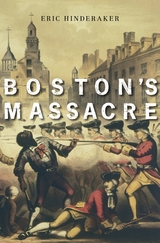 Boston’s Massacre
Eric Hinderaker
Harvard University Press, 2017 George Washington Prize Finalist
Winner of the Society of the Cincinnati Prize
“Fascinating… Hinderaker’s meticulous research shows that the Boston Massacre was contested from the beginning… [Its] meanings have plenty to tell us about America’s identity, past and present.”
—Wall Street Journal
On the night of March 5, 1770, British soldiers fired into a crowd gathered in front of Boston’s Custom House, killing five people. Denounced as an act of unprovoked violence and villainy, the event that came to be known as the Boston Massacre is one of the most famous and least understood incidents in American history. Eric Hinderaker revisits this dramatic confrontation, examining in forensic detail the facts of that fateful night, the competing narratives that molded public perceptions at the time, and the long campaign to transform the tragedy into a touchstone of American identity.
“Hinderaker brilliantly unpacks the creation of competing narratives around a traumatic and confusing episode of violence. With deft insight, careful research, and lucid writing, he shows how the bloodshed in one Boston street became pivotal to making and remembering a revolution that created a nation.”
—Alan Taylor, author of American Revolutions
“Seldom does a book appear that compels its readers to rethink a signal event in American history. It’s even rarer…to accomplish so formidable a feat in prose of sparkling clarity and grace. Boston’s Massacre is a gem.”
—Fred Anderson, author of Crucible of War
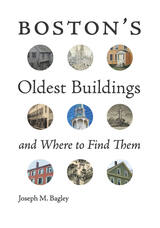 Boston's Oldest Buildings and Where to Find Them
Joseph M. Bagley
Brandeis University Press, 2021 As Boston approaches its four-hundredth anniversary, it is remarkable that it still maintains its historic character despite constant development. The fifty buildings featured in this book all pre-date 1800 and illustrate Boston’s early history. This is the first book to survey Boston’s fifty oldest buildings and does so through an approachable narrative which will appeal to nonarchitects and those new to historic preservation. Beginning with a map of the buildings’ locations and an overview of the historic preservation movement in Boston, the book looks at the fifty buildings in order from oldest to most recent. Geographically, the majority of the buildings are located within the downtown area of Boston along the Freedom Trail and within easy walking distance from the core of the city. This makes the book an ideal guide for tourists, and residents of the city will also find it interesting as it includes numerous properties in the surrounding neighborhoods. The buildings span multiple uses from homes to churches and warehouses to restaurants. Each chapter features a building, a narrative focusing on its historical significance, and the efforts made to preserve it over time. Full color photos and historical drawings illustrate each building and area. Boston’s Oldest Buildings and Where to Find Them presents the ideals of historic preservation in an approachable and easy-to-read manner appropriate for the broadest audience. Perfect for history lovers, architectural enthusiasts, and tourists alike.
 Boston's Oldest Buildings and Where to Find Them
Joseph M. Bagley
Brandeis University Press, 2025 A lavishly illustrated look at some of Boston’s most historic buildings, now available in a new, updated edition. Winner of the Historic New England Book Prize and a Boston Preservation Alliance Annual Achievement Award.
As Boston fast approaches its four-hundredth anniversary, the city’s architecture plays an important role in preserving its historic character. This book introduces readers to the city’s early history through fifty buildings, which all pre-date 1800. Employing an approachable narrative that will appeal to non-architects and those new to historic preservation, Joseph M. Bagley guides readers through an overview of the historic preservation movement in Boston before explaining the historical significance of these structures, which include homes, churches, warehouses, and restaurants.
The book begins with a map of the buildings’ locations and organizes entries from the oldest to the most recent. The majority of the properties are located within Boston’s downtown area, along the Freedom Trail, and within easy walking distance from the core of the city. While this makes the book an ideal guide for tourists, Boston residents will also discover buildings in the surrounding neighborhoods. Each chapter features a building, a story about its history, and the efforts made to preserve it over time. Fullcolor photos and historical drawings illustrate each structure and area.
Boston’s Oldest Buildings and Where to Find Them presents the ideals of historic preservation in an easy-to-read manner appropriate for the broadest audience. Perfect for history lovers, architectural enthusiasts, locals, and visitors alike.
This new edition features a foreword by Robert Allison, professor of history, language, and global culture at Suffolk University, and includes three new buildings identified by the author as being amongst the oldest in the city, which illustrates the dynamic nature of archaeology.
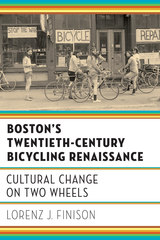 Boston's Twentieth-Century Bicycling Renaissance: Cultural Change on Two Wheels
Lorenz J. Finison
University of Massachusetts Press, 2019 At the end of the nineteenth century, cycling's popularity surged in the Boston area, but by 1900, the trend faded. Within the next few decades, automobiles became commonplace and roads were refashioned to serve them. Lorenz J. Finison argues that bicycling witnessed a renaissance in the 1970s as concerns over physical and environmental health coalesced. Whether cyclists hit the roads on their way to work or to work out, went off-road in the mountains or to race via cyclocross and BMX, or took part in charity rides, biking was back in a major way.
Finison traces the city's cycling history, chronicling the activities of environmental and social justice activists, stories of women breaking into male-dominated professions by becoming bike messengers and mechanics, and challenges faced by African American cyclists. Making use of newspaper archives, newly discovered records of local biking organizations, and interviews with Boston-area bicyclists and bike builders, Boston's Twentieth-Century Bicycling Renaissance brings these voices and battles back to life.
Boswell and the Press: Essays on the Ephemeral Writing of James Boswell
Donald J. Newman
Bucknell University Press, 2021 Boswell and the Press: Essays on the Ephemeral Writing of James Boswell is the first sustained examination of James Boswell’s ephemeral writing, his contributions to periodicals, his pamphlets, and his broadsides. The essays collected here enhance our comprehension of his interests, capabilities, and proclivities as an author and refine our understanding of how the print environment in which he worked influenced what he wrote and how he wrote it. This book will also be of interest to historians of journalism and the publishing industry of eighteenth-century Britain.
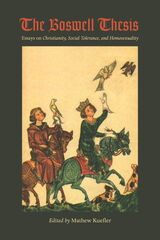 The Boswell Thesis: Essays on Christianity, Social Tolerance, and Homosexuality
Edited by Mathew Kuefler
University of Chicago Press, 2005 Few books have had the social, cultural, and scholarly impact of John Boswell's Christianity, Social Tolerance, and Homosexuality. Arguing that neither the Bible nor the Christian tradition was nearly as hostile to homoeroticism as was generally thought, its initial publication sent shock waves through university classrooms, gay communities, and religious congregations. Twenty-five years later, the aftershocks still reverberate. The Boswell Thesis brings together fifteen leading scholars at the intersection of religious and sexuality studies to comment on this book's immense impact, the endless debates it generated, and the many contributions it has made to our culture.
The essays in this magnificent volume examine a variety of aspects of Boswell's interpretation of events in the development of sexuality from Classical Antiquity through the Middle Ages, including a Roman emperor's love letters to another man; suspicions of sodomy among medieval monks, knights, and crusaders; and the gender-bending visions of Christian saints and mystics. Also included are discussions of Boswell's career, including his influence among gay and lesbian Christians and his role in academic debates between essentialists and social constructionists.
Elegant and thought-provoking, this collection provides a fitting twenty-fifth anniversary tribute to the incalculable influence of Christianity, Social Tolerance, and Homosexuality and its author.
 Boswell’s Enlightenment
Robert Zaretsky
Harvard University Press, 2015 Throughout his life, James Boswell struggled to fashion a clear account of himself, but try as he might, he could not reconcile the truths of his era with those of his religious upbringing. Boswell’s Enlightenment examines the conflicting credos of reason and faith, progress and tradition that pulled Boswell, like so many eighteenth-century Europeans, in opposing directions. In the end, the life of the man best known for writing Samuel Johnson’s biography was something of a patchwork affair. As Johnson himself understood: “That creature was its own tormentor, and I believe its name was BOSWELL.”
Few periods in Boswell’s life better crystallize this internal turmoil than 1763–1765, the years of his Grand Tour and the focus of Robert Zaretsky’s thrilling intellectual adventure. From the moment Boswell sailed for Holland from the port of Harwich, leaving behind on the beach his newly made friend Dr. Johnson, to his return to Dover from Calais a year and a half later, the young Scot was intent on not just touring historic and religious sites but also canvassing the views of the greatest thinkers of the age. In his relentless quizzing of Voltaire and Rousseau, Hume and Johnson, Paoli and Wilkes on topics concerning faith, the soul, and death, he was not merely a celebrity-seeker but—for want of a better term—a truth-seeker. Zaretsky reveals a life more complex and compelling than suggested by the label “Johnson’s biographer,” and one that 250 years later registers our own variations of mind.
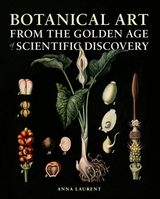 Botanical Art from the Golden Age of Scientific Discovery
Anna Laurent
University of Chicago Press, 2016 Throughout the nineteenth and twentieth centuries, wall charts were a familiar classroom component, displaying scientific images at a large scale, in full color. But it's only now that they've been superseded as a teaching tool that we have begun to realize something their ubiquity hid: they are stunning examples of botanical art at its finest.
This beautifully illustrated oversized book gives the humble wall chart its due, reproducing more than two hundred of them in dazzling full color. Each wall chart is accompanied by captions that offer accessible information about the species featured, the scientists and botanical illustrators who created it, and any particularly interesting or innovative features the chart displays. And gardeners will be pleased to discover useful information about plant anatomy and morphology and species differences. We see lilies and tulips, gourds, aquatic plants, legumes, poisonous plants, and carnivorous plants, all presented in exquisite, larger-than-life detail.
A unique fusion of art, science, and education, the wall charts gathered here offer a glimpse into a wonderful scientific heritage and are sure to thrill naturalists, gardeners, and artists alike.
Botanical Companions: A Memoir of Plants and Place
Frieda Knobloch
University of Iowa Press, 2005 In her luminous inquiry into the intricate connections among work, place, and people, Frieda Knobloch explores the lives of two Rocky Mountain botanists, Aven Nelson (1859-1952) and Ruth Ashton Nelson (1896-1987). Aven was a professor of botany at the University of Wyoming for many years; Ruth compiled field guides to Rocky Mountain plants and wrote articles on botany for magazines. The two met and married when Aven was in his seventies and Ruth was in her mid thirties, and they developed a symbiotic partnership that joined work and play, learning and companionship. Into this relatively straightforward reconstruction of two lives Knobloch blends the history of her own life as a scholar and an amateur naturalist, her own journal entries, and her letters written to Ruth to create a transformative environmental auto/biography.
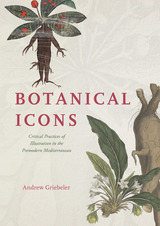 Botanical Icons: Critical Practices of Illustration in the Premodern Mediterranean
Andrew Griebeler
University of Chicago Press, 2024 A richly illustrated account of how premodern botanical illustrations document evolving knowledge about plants and the ways they were studied in the past.
This book traces the history of botanical illustration in the Mediterranean from antiquity to the early modern period. By examining Greek, Latin, and Arabic botanical inquiry in this early era, Andrew Griebeler shows how diverse and sophisticated modes of plant depiction emerged and ultimately gave rise to practices now recognized as central to modern botanical illustration. The author draws on centuries of remarkable and varied documentation from across Europe and the Mediterranean.
Lavishly illustrated, Botanical Icons marshals ample evidence for a dynamic and critical tradition of botanical inquiry and nature observation in the late antique and medieval Mediterranean. The author reveals that many of the critical practices characteristic of modern botanical illustrations began in premodern manuscript culture. Consequently, he demonstrates that the distinctions between pre- and early modern botanical illustration center more on the advent of print, the expansion of collections and documentation, and the narrowing of the range of accepted forms of illustration than on the invention of critical and observational practices exclusive to modernity.
Griebeler’s emphasis on continuity, intercultural collaboration, and the gradual transformation of Mediterranean traditions of critical botanical illustration persuasively counters previously prevalent narratives of rupture and Western European exceptionalism in the histories of art and science.
Botanical Progress, Horticultural Innovations and Cultural Changes
Michel Conan
Harvard University Press, 2007 From Roman times to the present, knowledge of plants and their cultivation have exerted a deep impact on cultural changes. This book highlights the religious, artistic, political, and economic consequences of horticultural pursuits.
Far from a mere trade, horticulture profoundly affected Jewish and Persian mystical poetry and caused deep changes in Ottoman arts. It contributed to economic and political changes in Judea, Al Andalus, Japan, Yuan China, early modern Mexico, Europe, and the United States. This book explores the roles of peasants, botanists, horticulturists, nurserymen and gentlemen collectors in these developments, and concludes with a reflection on the future of horticulture in the present context of widespread environmental devastation and ecological uncertainty.
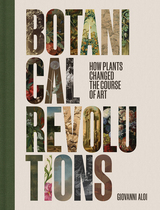 Botanical Revolutions: How Plants Changed the Course of Art
Giovanni Aloi
J. Paul Getty Trust, The, 2025 This groundbreaking volume unearths the representation of plants and their vital impact on art, thereby advocating for the botanical world’s legitimate place in art history.
Desired for their aesthetic beauty, sought after for their medicinal properties, harvested for their scents and flavors, or grown as essential material resources, plants are indissolubly entwined with our existence. In art it is no different: plants have played a critical role. Yet despite their significant material and conceptual contributions, plants have been sidelined in the commentary of art historians and critics.
Botanical Revolutions presents a global history of plants in art, focusing on the crucial moments that signaled the formation of new movements and styles, as well as the creation of media that could not have occurred without the involvement of and interaction with the vegetal world. In this fascinating and beautifully illustrated book, author Giovanni Aloi delves deeply into the history and representation of plants in art, advocates for a change in our relationship with the botanical world, and presents an alternative history of art that foregrounds the truly indispensable contributions of plants.
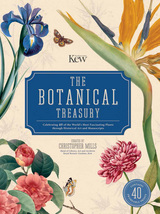 The Botanical Treasury: Celebrating 40 of the World’s Most Fascinating Plants through Historical Art and Manuscripts
Edited by Christopher Mills
University of Chicago Press, 2016 For centuries, an eclectic group of plants have captivated the world and propelled explorers to extraordinary lengths to collect them. Now, The Botanical Treasury brings together centuries of botanical adventures and discoveries in one sumptuous collection.
This treasury features a full-color exploration of our most important and interesting plants; facsimiles of rarely seen letters, maps, and journals from the Royal Botanic Gardens, Kew; and forty beautifully reproduced, frameable prints. Together they offer a fascinating look at the world of plant hunting and the cultivation of our knowledge about the plant world.
Every one of the featured plants is extraordinary in some way, be it for its appearance, biology, medicinal properties, or importance to economics, politics, or the arts. Equally extraordinary are the stories associated with the discovery of these plants, revealing the lengths to which collectors and growers would go to find them. The entries build a history of botany and paint a larger picture of the age of exploration.
The Botanical Treasury is a rare treat. Looking through its pages and relishing its prints allows us to fully understand why we are so driven to learn all we can about the natural world. It is an exceptional gift that will wow gardeners, and anyone else fascinated by the greenery that sustains and inspires us.
 Botany and Healing: Medicinal Plants of New Jersey and the Region
Cecil C. Still
Rutgers University Press, 1998 Could that weed you just pulled have provided a cure for cancer? Scientists have warned that the destruction of the world’s rain forests may mean that plant species are being lost before we recognize their potential as sources of new medicines. This is equally true for the plants much closer to home. New Jersey, while heavily industrialized and densely populated, is extraordinarily rich in plant resources. Botany and Healing: Medicinal Plants of New Jersey and the Region describes nearly 500 species of plants found in the Garden State and in nearby areas that have been used medicinally. Cecil Still lists plants by family and, within each family, by genus and species, to underscore the close relationships among medicinally valuable species. This arrangement is familiar to every botanist and easy for the amateur naturalist and herbalist to use as well. For each entry, Still discusses both the natural history and the historical and modern medicinal uses of the plant: scientific and common names, description, habitat, geographic range, and preparations and applications in Native American, European, African, and Asian herbal traditions. Most species are illustrated with Still’s line drawings. The book also contains a helpful index (with cross references by usage, common or scientific name), a glossary of terms, and a list of resources for further reading. Botany and Healing explains the history and present status of the uses of herbal medicines, explains what makes a plant medicinal (or poisonous), how herbal medicines are prepared for use, and why they should be used only with great caution.
 The Botany of Empire in the Long Eighteenth Century
Yota Batsaki
Harvard University Press This book brings together an international body of scholars working on eighteenth-century botany within the context of imperial expansion. The eighteenth century saw widespread exploration, a tremendous increase in the traffic in botanical specimens, taxonomic breakthroughs, and horticultural experimentation. The contributors to this volume compare the impact of new developments and discoveries across several regions, broadening the geographical scope of their inquiries to encompass imperial powers that did not have overseas colonial possessions—such as the Russian, Ottoman, and Qing empires and the Tokugawa shogunate—as well as politically borderline regions such as South Africa, Yemen, and New Zealand.
The essays in this volume examine the botanical ambitions of eighteenth-century empires; the figure of the botanical explorer; the links between imperial ambition and the impulse to survey, map, and collect botanical specimens in “new” territories; and the relationships among botanical knowledge, self-representation, and material culture.
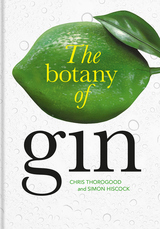 The Botany of Gin
Chris Thorogood and Simon Hiscock
Bodleian Library Publishing, 2020 From its roots in ancient Greek herbal medicine, the popular spirit we now know as gin was first established by the Dutch in the sixteenth century as a juniper-infused tincture to cure fevers. During London’s “gin craze” in the eighteenth century, the spirit gained popularity—and notoriety—as consumption increased rapidly. In recent years, gin has enjoyed a resurgence, with botanical flavorings offering refined new ways to enjoy the classic cocktail.
With this volume, Chris Thorogood and Simon Hiscock provide an account of how gin has been developed and produced. A diverse assortment of aromatic plants from around the world have been used in the production of gin over the course of several centuries, and each combination of botanicals yields a unique flavor profile that equates to more than the sum of its parts. Understanding the different types of formulation, and the main groups of plants used therein, is central to appreciating the drink’s complexities and subtleties. Garnished with sumptuous illustrations of the plants that tell the story of this complex drink, this enticing book delves into the botany of gin from root to branch. As this book’s extraordinary range of featured ingredients shows, gin is a quintessentially botanical beverage with a rich history like no other.
 Both, Apollo
Mary Wilson
Omnidawn, 2022 A poetry collection that employs intuition, humor, and celebration while seeking to break out of restrictive social structures.
Mary Wilson’s Both, Apollo speaks from inside the bodies and binaries that so often act as constraints. It sometimes tries to negotiate its way out. It laments, celebrates, reasons, jokes, and occasionally begs. It runs into a wall and hugs it, offers it pizza, and speeds through grammars and cities until dizziness catapults it from the grid. It tries to queer the echoes of its language in the hope that a rhyme might break the logic of “either/or” and give rise to “both/and.”
Both, Apollo is a love poem to whatever has the grace to appear, quietly finding hope. Moments of humor and tenderness accompany the speaker with each act of crossing and circling back. The poems in Both, Apollo are constantly in flux, and Wilson’s lyricism acts as a teaching tool for using both the real and the imagination to guide us in moment-by-moment navigation of our world.
Both, Apollo won the Omnidawn Chapbook contest, selected by Victoria Chang.
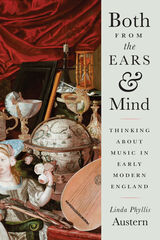 Both from the Ears and Mind: Thinking about Music in Early Modern England
Linda Phyllis Austern
University of Chicago Press, 2020 Both from the Ears and Mind offers a bold new understanding of the intellectual and cultural position of music in Tudor and Stuart England. Linda Phyllis Austern brings to life the kinds of educated writings and debates that surrounded musical performance, and the remarkable ways in which English people understood music to inform other endeavors, from astrology and self-care to divinity and poetics. Music was considered both art and science, and discussions of music and musical terminology provided points of contact between otherwise discrete fields of human learning. This book demonstrates how knowledge of music permitted individuals to both reveal and conceal membership in specific social, intellectual, and ideological communities. Attending to materials that go beyond music’s conventional limits, these chapters probe the role of music in commonplace books, health-maintenance and marriage manuals, rhetorical and theological treatises, and mathematical dictionaries. Ultimately, Austern illustrates how music was an indispensable frame of reference that became central to the fabric of life during a time of tremendous intellectual, social, and technological change.
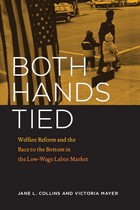 Both Hands Tied: Welfare Reform and the Race to the Bottom in the Low-Wage Labor Market
Jane L. Collins and Victoria Mayer
University of Chicago Press, 2010 Both Hands Tied studies the working poor in the United States, focusing in particular on the relation between welfare and low-wage earnings among working mothers. Grounded in the experience of thirty-three women living in Milwaukee and Racine, Wisconsin, it tells the story of their struggle to balance child care and wage-earning in poorly paying and often state-funded jobs with inflexible schedules—and the moments when these jobs failed them and they turned to the state for additional aid. Jane L. Collins and Victoria Mayer here examine the situations of these women in light of the 1996 national Personal Responsibility and Work Opportunity Reconciliation Act and other like-minded reforms—laws that ended the entitlement to welfare for those in need and provided an incentive for them to return to work. Arguing that this reform came at a time of gendered change in the labor force and profound shifts in the responsibilities of family, firms, and the state, Both Hands Tied provides a stark but poignant portrait of how welfare reform afflicted poor, single-parent families, ultimately eroding the participants’ economic rights and affecting their ability to care for themselves and their children.
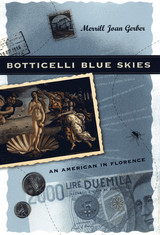 Botticelli Blue Skies: An American in Florence
Merrill Joan Gerber
University of Wisconsin Press, 2002
When writer Merrill Joan Gerber is invited to join her husband, a history professor, as he takes a class of American college students to study in Florence, Italy, she feels terrified at the idea of leaving her comforts, her friends, and her aged mother in California. Her husband tries to assure her that her fear of Italy—and her lack of knowledge of the Italian language—will be offset by the discoveries of travel. "I can’t tell you exactly what will happen, but something will. And it will all be new and interesting." Botticelli Blue Skies is the tale of a woman who readily admits to fear of travel, a fear that many experience but are embarrassed to admit. When finally she plunges into the new adventure, she describes her experiences in Florence with wit, humor, and energy.
Instead of sticking to the conventional tourist path, Gerber follows her instincts. She makes discoveries without tour guides droning in her ear and reclaims the travel experience as her own, taking time to shop in a thrift shop, eat in a Chinese restaurant that serves "Dragon chips," make friends with her landlady who turns out to be a Countess, and visit the class of a professor at the university. She discovers a Florence that is not all museums and wine. With newfound patience and growing confidence, Gerber makes her way around Florence, Venice, and Rome. She visits famous places and discovers obscure ones—in the end embracing all that is Italian. Botticelli Blue Skies (accompanied by the author’s own photographs) is an honest, lyrical, touching account of the sometimes exhausting, often threatening, but always enriching physical and emotional challenge that is travel.
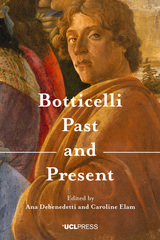 Botticelli Past and Present
Edited by Ana Debenedetti and Caroline Elam
University College London, 2019 Botticelli gave us some of the most stunning Renaissance masterpieces. Paintings like Primavera and The Birth of Venus are as beloved today as at the time of their creation, as evidenced by recent exhibitions around the world. Botticelli’s influence and innovations also continue to inspire interest and passionate debate among art historians and lovers of art.
In four chapters, spanning centuries of Botticelli’s artistic fame and reception, Botticelli Past and Present engages with the significant debates about Botticelli. Each chapter collects several essays and includes a short introduction that positions them within the wider scholarly literature on Botticelli. The chapters are organized chronologically, beginning with discussion of the artist and his work in his own time, moving on to the progressive rediscovery of his work from the late eighteenth to the turn of the twentieth century, through to his enduring impact on contemporary art and design.
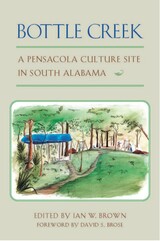 Bottle Creek: A Pensacola Culture Site in South Alabama
Edited by Ian W. Brown, with a foreword by David S. Brose
University of Alabama Press, 2002 The first comprehensive study and analysis of the most important Mississippian mound site on the north-central Gulf coast
Consisting of 18 earthen mounds and numerous additional habitation areas dating to A.D. 1250-1550, the Bottle Creek site was first professionally investigated in 1932 when David L. DeJarnette of the Alabama Museum of Natural History began work there to determine if the site had a cultural relationship with Moundville, connected to the north by a river system. Although partially mapped in the 1880s, Bottle Creek's location in the vast Mobile-Tensaw Delta of Baldwin County completely surrounded by swamp made it inaccessible and protected it from most of the plunder experienced by similar sites in the Southeast. This volume builds on earlier investigations to present extensive recent data from major excavations conducted from 1991 to 1994 and supported in part by an NEH grant. Ten anthropologists examine various aspects of the site, including mound architecture, prehistoric diet, pottery classification, vessel forms, textiles used to make pottery impressions, a microlithic stone tool industry, water travel, the persistence of mound use into historic times, and the position of Bottle Creek in the protohistoric world. The site is concluded to be the best remaining example of Pensacola culture, an archaeological variant of the widespread Mississippian tradition identified by a shell-tempered pottery complex and by its geographic association with the north-central coast of the Gulf of Mexico. Occupied for three centuries by a thriving native culture, Bottle Creek is an important remnant of North American peoples and as such is designated a National Historic Landmark. This published compilation of the research data should establish a base for future scholarly investigation and interpretation.
A Dan Josselyn Memorial Publication
 Bottled and Sold: The Story Behind Our Obsession with Bottled Water
Peter H. Gleick
Island Press, 2012 Peter Gleick knows water. A world-renowned scientist and freshwater expert, Gleick is a MacArthur Foundation "genius," and according to the BBC, an environmental visionary. And he drinks from the tap. Why don’t the rest of us?
Bottled and Sold shows how water went from being a free natural resource to one of the most successful commercial products of the last one hundred years—and why we are poorer for it. It’s a big story and water is big business. Every second of every day in the United States, a thousand people buy a plastic bottle of water, and every second of every day a thousand more throw one of those bottles away. That adds up to more than thirty billion bottles a year and tens of billions of dollars of sales.
Are there legitimate reasons to buy all those bottles? With a scientist’s eye and a natural storyteller’s wit, Gleick investigates whether industry claims about the relative safety, convenience, and taste of bottled versus tap hold water. And he exposes the true reasons we’ve turned to the bottle, from fearmongering by business interests and our own vanity to the breakdown of public systems and global inequities.
"Designer" H2O may be laughable, but the debate over commodifying water is deadly serious. It comes down to society’s choices about human rights, the role of government and free markets, the importance of being "green," and fundamental values. Gleick gets to the heart of the bottled water craze, exploring what it means for us to bottle and sell our most basic necessity.
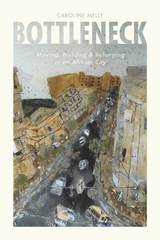 Bottleneck: Moving, Building, and Belonging in an African City
Caroline Melly
University of Chicago Press, 2017 In Bottleneck, anthropologist Caroline Melly uses the problem of traffic bottlenecks to launch a wide-ranging study of mobility in contemporary urban Senegal—a concept that she argues is central to both citizens' and the state's visions of a successful future.
Melly opens with an account of the generation of urban men who came of age on the heels of the era of structural adjustment, a diverse cohort with great dreams of building, moving, and belonging, but frustratingly few opportunities to do so. From there, she moves to a close study of taxi drivers and state workers, and shows how bottlenecks—physical and institutional—affect both. The third section of the book covers a seemingly stalled state effort to solve housing problems by building large numbers of concrete houses, while the fourth takes up the thousands of migrants who attempt, sometimes with tragic results, to cross the Mediterranean on rickety boats in search of new opportunities. The resulting book offers a remarkable portrait of contemporary Senegal and a means of theorizing mobility and its impossibilities far beyond the African continent.
The Bottom Line: Observations and Arguments on the Sports Business
Andrew Zimbalist
Temple University Press, 2006 In The Bottom Line, one of the foremost sports economists writing today, Andrew Zimbalist (National Pastime), analyzes the "net value" of sports. He examines motives for why owners buy franchises, the worth of the players and the profitability of teams, and the importance of publicly funded stadiums. In the essays collected here—which appeared in publications like The New York Times, Sports Business Journal, and The Wall Street Journal from 1998-2006—Zimbalist considers the current state of organized sports, from football and baseball to basketball, hockey, and soccer. He also addresses antitrust and labor relations issues, gender equity concerns, collegiate athletics, and the regulation of steroid use, providing readers with a better understanding of the business of sports and the sports business—and what makes both tick.
Bottom of the Ninth: Great Contemporary Baseball Short Stories
Edited and with an Introduction by John McNally. Foreword by Richard Russo
Southern Illinois University Press, 2003 Skillfully edited by John McNally, Bottom of the Ninth: Great Contemporary Baseball Short Stories collects nineteen contemporary baseball short stories from a successful mix of well-established writers, lesser-knowns, and a few up-and-comers. These stories are characterized by the same dramatic elements that draw people to the sport itself—the mythologizing of players, the obsessions and romance of the game, the bonds between players and fans, parents and children. From a key play, a missed catch, a chance lost, these are tales of characters facing high stakes and calls to action, metaphorically and literally, in the bottom of the ninth.
 The Bottom Rung: African American Family Life on Southern Farms
Stewart E. Tolnay
University of Illinois Press, 1999 The Bottom Rung presents an in-depth investigation of a population that is becoming extinct in American society: the black farmer.
Tracing patterns of marriage and childbearing among both whites and blacks during the first decades of this century, Stewart Tolnay pursues questions about how black southern farm families were formed and dissolved, how they educated their children or put them to work in the fields, and how they migrated in search of opportunity. Further, he considers the possible legacy of these experiences for family life in contemporary urban environments.
Making revealing and innovative use of public records from the early part of the twentieth century, Tolnay challenges the widely held idea that southern migrants to northern cities carried with them a dysfunctional family culture. He demonstrates the powerful impact of economic conditions on family life and views patterns of marriage and childbearing as responsive to prevailing social, economic, and political conditions. In a provocative extension of this perspective, Tolnay argues that current high levels of single-parenthood among urban African American families likewise reflect rational responses to the socio-economic environment and government policies.
By placing post-World War II demographic developments in a wider historical perspective, The Bottom Rung sheds new light on recent discussions of the difficulties faced by the modern black urban family. The text is enhanced by Dorothea Lange's and Russell Lee's poignant photographs.
The Bottom Translation: Marlowe and Shakespeare and the Carnival Tradition
Jan Kott
Northwestern University Press, 1987 The Bottom Translation represents the first critical attempt at applying the ideas and methods of the great Russian critic, Mikhail Bakhtin, to the works of Shakespeare and other Elizabethans. Professor Kott uncovers the cultural and mythopoetic traditions underlying A Midsummer Night's Dream, The Tempest, Dr. Faustus, and other plays. His method draws him to interpret these works in the light of the carnival and popular tradition as it was set forth by Bakhtin. The Bottom Translation breaks new ground in critical thinking and theatrical vision and is an invaluable source of new ideas and perspectives. Included in this volume is also an extraordinary essay on Kurosawa's "Ran" in which the Japanese filmmaker recreates King Lear.
The Bottomland: Poems
Harry Humes
University of Arkansas Press, 1995 Harry Humes’s first collection of poetry, Winter Weeds, won the 1983 Devins Award from the University of Missouri Press. Ridge Music was an Associated Writing Programs Contest finalist. In 1993 he won the Eighth Annual World’s Greatest Short Short Story Competition for “The Cough.” Humes, born in Girardville, Pennsylvania, in 1935, is the recipient of the Theodore Roethke Poetry Award and a grant from the National Endowment for the Arts. He teaches English at Kutztown University and lives in Lenhartsville, Pennsylvania.
Bottoms Up: A Toast to Wisconsin's Historic Bars and Breweries
Jim Draeger
Wisconsin Historical Society Press, 2017 Bottoms Up showcases the architecture and history of 70 Wisconsin breweries and bars. Beginning with inns and saloons, the book explores the rise of breweries, the effects of temperance and Prohibition, and attitudes about gender, ethnicity, and morality. It traces the development of the megabreweries, dominance of the giants, and the emergence of microbreweries. Contemporary photographs of unusual and distinctive bars of all eras, historic photos, postcards, advertisements, and breweriana help tell the story of how Wisconsin came to dominate brewing—and the place that bars and taverns hold in our social and cultural history.
Boulder: Evolution of a City, Revised Edition
Silvia Pettem
University Press of Colorado, 2006 Boulder: Evolution of a City has captivated newcomers, tourists, and longtime residents for years with its dramatic visual and narrative presentation of the birth and development of Boulder. In this updated edition, 322 photographs - more than 90 of them current - capture landmarks, buildings, major events, and quiet moments from the 1860s to 2006. Photographs showing the same locations at several intervals in history reveal Boulder's continuum from past to present. Pettem devotes the first chapter to an introduction of the early photographers whose work appears throughout the book. Moving outward from the central business district as development did, each subsequent chapter focuses on a particular area in Boulder, with an introductory essay followed by historic and contemporary photographs with detailed captions.
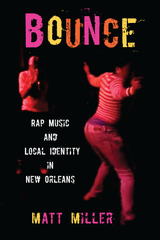 Bounce: Rap Music and Local Identity in New Orleans
Matt Miller
University of Massachusetts Press, 2012 Over the course of the twentieth century, African Americans in New Orleans helped define the genres of jazz, rhythm and blues, soul, and funk. In recent decades, younger generations of New Orleanians have created a rich and dynamic local rap scene, which has revolved around a dance-oriented style called "bounce."
Hip-hop has been the latest conduit for a "New Orleans sound" that lies at the heart of many of the city's best-known contributions to earlier popular music genres. Bounce, while globally connected and constantly evolving, reflects an enduring cultural continuity that reaches back and builds on the city's rich musical and cultural traditions.
In this book, the popular music scholar and filmmaker Matt Miller explores the ways in which participants in New Orleans's hip-hop scene have collectively established, contested, and revised a distinctive style of rap that exists at the intersection of deeply rooted vernacular music traditions and the modern, globalized economy of commercial popular music. Like other forms of grassroots expressive culture in the city, New Orleans rap is a site of intense aesthetic and economic competition that reflects the creativity and resilience of the city's poor and working-class African Americans.
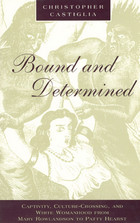 Bound and Determined: Captivity, Culture-Crossing, and White Womanhood from Mary Rowlandson to Patty Hearst
Christopher Castiglia
University of Chicago Press, 1996 In Bound and Determined, Christopher Castiglia gives shape for the first time to a tradition of American women's captivity narrative that ranges across three centuries, from Puritan colonist Mary Rowlandson's abduction by Narragansett Indians to Patty Hearst's kidnapping by the Symbionese Liberation Army.
Examining more than sixty accounts by women captives, as well as novels ranging from Susanna Rowson's eighteenth-century classic Rueben and Rachel to today's mass-market romances, Castiglia investigates paradoxes central to the genre. In captivity, women often find freedom from stereotypical roles as helpless, dependent, sexually vulnerable, and xenophobic. In their condemnations of their non-white captors, they defy assumptions about race that undergird their own societies. Castiglia questions critical conceptions of captivity stories as primarily an appeal to racism and misogyny, and instead finds in them an appeal of a much different nature: as all-too-rare stories of imaginative challenges to rigid gender roles and racial ideologies.
Whether the women of these stories resist or escape captivity, endure until they are released, or eventually choose to live among their captors, they end up with the power to be critical of both cultures. Castiglia shows that these compelling narratives, with their boundary crossings and persistent explorations of cultural divisions and differences, have significant implications for current critical investigations into the construction of gender, race, and nation.
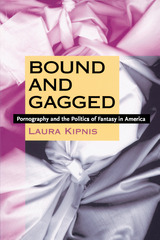 Bound and Gagged: Pornography and the Politics of Fantasy in America
Laura Kipnis
Duke University Press, 1998 In a book that completely changes the terms of the pornography debate, Laura Kipnis challenges the position that porn perpetuates misogyny and sex crimes. First published in 1996, Bound and Gagged opens with the chilling case of Daniel DePew, a man convicted—in the first computer bulletin board entrapment case—of conspiring to make a snuff film and sentenced to thirty-three years in prison for merely trading kinky fantasies with two undercover cops.
Using this textbook example of social hysteria as a springboard, Kipnis argues that criminalizing fantasy—even perverse and unacceptable fantasy—has dire social consequences. Exploring the entire spectrum of pornography, she declares that porn isn’t just about gender and that fantasy doesn’t necessarily constitute intent. She reveals Larry Flynt’s Hustler to be one of the most politically outspoken and class-antagonistic magazine in the country and shows how fetishes such as fat admiration challenge our aesthetic prejudices and socially sanctioned disgust. Kipnis demonstrates that the porn industry—whose multibillion-dollar annual revenues rival those of the three major television networks combined—know precisely how to tap into our culture’s deepest anxieties and desires, and that this knowledge, more than all the naked bodies, is what guarantees its vast popularity.
Bound and Gagged challenges our most basic assumptions about America’s relationship with pornography and questions what the calls to eliminate it are really attempting to protect.
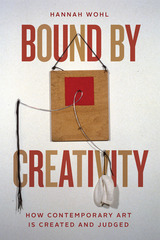 Bound by Creativity: How Contemporary Art Is Created and Judged
Hannah Wohl
University of Chicago Press, 2021 What is creativity? While our traditional view of creative work might lead us to think of artists as solitary visionaries, the creative process is profoundly influenced by social interactions even when artists work alone. Sociologist Hannah Wohl draws on more than one hundred interviews and two years of ethnographic research in the New York contemporary art market to develop a rich sociological perspective of creativity. From inside the studio, we see how artists experiment with new ideas and decide which works to abandon, destroy, put into storage, or exhibit. Wohl then transports readers into the art world, where we discover how artists’ understandings of their work are shaped through interactions in studio visits, galleries, international art fairs, and collectors’ homes.
Bound by Creativity reveals how artists develop conceptions of their distinctive creative visions through experimentation and social interactions. Ultimately, we come to appreciate how judgment is integral to the creative process, both resulting in the creation of original works while also limiting an artist’s ability to break new ground. Exploring creativity through the lens of judgment sheds new light on the production of cultural objects, markets, and prestige.
Bound by Law?: Tales from the Public Domain, New Expanded Edition
Keith Aoki, James Boyle, and Jennifer Jenkins
Duke University Press, 2008 A documentary is being filmed. A cell phone rings, playing the Rocky theme song. The filmmaker is told she must pay $10,000 to clear the rights to the song. Can this be true? Eyes on the Prize, the great civil rights documentary, was pulled from circulation because the filmmakers’ rights to music and footage had expired. What’s going on here? It’s the collision of documentary filmmaking and intellectual property law, and it’s the inspiration for this comic book. Follow its heroine Akiko as she films her documentary and navigates the twists and turns of intellectual property. Why do we have copyrights? What’s “fair use”? Bound by Law? reaches beyond documentary film to provide a commentary on the most pressing issues facing law, art, property, and an increasingly digital world of remixed culture. Readers can download a pdf of the book here.
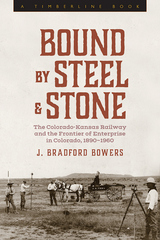 Bound by Steel and Stone: The Colorado-Kansas Railway and the Frontier of Enterprise in Colorado, 1890-1960
J. Bradford Bowers
University Press of Colorado, 2022 Bound by Steel and Stone analyzes the Colorado-Kansas Railway through the economic enterprise in the American West in the decades after the supposed 1890 closing of the frontier. In it, J. Bradford Bowers weaves a tale of reinvention against the backdrop of the newly settled West, showing how the railway survived in one form or another for nearly fifty years, overcoming competition from other railroads, a limited revenue base, and even more limited capital financing.
Offering the Colorado-Kansas Railway as an example of how shortline railroads helped to integrate the rural landscape with the larger urban and economic world, Bowers reveals the constant adaptations driven by changing economic forces and conditions. He puts the railway in context of the wider environmental and political landscapes, the growing quarrying and mining business, the expansion of agriculture and irrigation, Progressive-era political reforms, and land development. In the new frontier of enterprise in the early twentieth-century American West, the railroad highlights the successes and failures of the men inspired to pursue these new opportunities as well as the story of one woman who held these fragile industries together well into the second half of the twentieth century.
Bound by Steel and Stone is an insightful addition to the history of industrialization and economic development in Colorado and the American West.
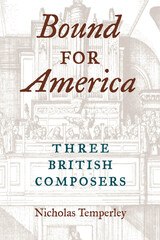 Bound for America: Three British Composers
Nicholas Temperley
University of Illinois Press, 2002 Nicholas Temperley documents the lives, careers, and music of three British composers who emigrated from England in mid-career and became leaders in the musical life of the early United States. William Selby of London and Boston (1738-98), Rayner Taylor of London and Philadelphia (1745-1825), and George K. Jackson of London, New York, and Boston (1757-1822) were among the first trained professional composers to make their home in America and to pioneer the building of an art music tradition in the New World akin to the esteemed European classical music. Why, in middle age, would they emigrate and start over in uncertain and unfavorable conditions? How did the new environment affect them personally and musically? Temperley compares their lives, careers, and compositional styles in the two countries and reflects on American musical nationalism and the changing emphasis in American musical historiography.
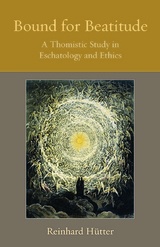 Bound for Beatitude A Thomistic Study in Eschatology and Ethics
Reinhard Hütter
Catholic University of America Press, 2019 Bound for Beatitude is about St. Thomas Aquinas’s theology of beatitude and the journey thereto. Consequently, the work’s topic is the meaning and purpose of human life embedded in that of the whole cosmos. This study is not an antiquarian exercise in the thought of some sundry medieval thinker, but an exercise of ressourcement in the philosophical and theological wisdom of one of the most profound theologians of the Catholic Church, one whom the Church has canonized, granted the title “Doctor of the Church,” and for a long time regarded as the common doctor. This exercise of ressourcement takes its methodological cues from the common doctor; hence, it is an integrated exercise of philosophical, dogmatic, and moral theology. Its specific theological topic, the ultimate human end, perfect happiness, beatitude, and the journey thereto—stands at the very heart of St. Thomas’s theology. Far from being passé, his theology of beatitude is of urgent pertinence as the crisis of humanity and of creation and the exile of God seems to approach its apogee.
By way of a presentation, interpretation, and defense of Thomas Aquinas’s doctrine of beatitude and the journey thereto, Bound for Beatitude advances an argument based on four theses: (1) The loss of a theology of beatitude has greatly impoverished contemporary theology. In order to succeed and flourish, theology must recover a sound teleological orientation. (2) In order to recover a sound teleological orientation, theology must recover metaphysics as its privileged instrument. (3) Thomas Aquinas provides a still pertinent model for how theology might achieve these goals in a metaphysically profound theology of beatitude and the beatific vision. Finally, (4) Aquinas’s rich and sophisticated account of the virtues charts the journey to beatitude in a way that still has analytic force and striking relevance in the early twenty-first century.
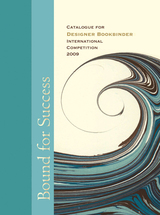 Bound for Success: Catalogue for Designer Bookbinders International Competition 2009
Edited by Jeanette Koch
Bodleian Library Publishing, 2009 Published to celebrate the winning entries in the prestigious 2009 Designer Bookbinders International Bookbinding Competition held at the Bodleian Library, Bound for Success presents nearly four hundred of the most skillful and creative examples of contemporary bookbinding across the world. Designer Bookbinders is one of the foremost international bookbinding societies, and this competition catalog features a remarkable range of styles, materials, and approaches to an ancient technique, attracting top binders from around the world. Beautifully designed, Bound for Success is as stunning a book as the bindings it displays. This showcase of the best in modern bookbinding is likely to become a collector’s item among aficionados of bookbinding--as well as a handsome addition to any personal library. Exhibition Dates: 12 June - 1 August 2009 Bodleian Library, Oxford 18 September - 13 December 2009 Boston Public Library 12 February - 6 March 2010 Bonhams & Butterfields, San Francisco 19 May - 31 July 2010 The Grolier Club of New York
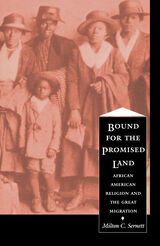 Bound For the Promised Land: African American Religion and the Great Migration
Milton C. Sernett
Duke University Press, 1997 Bound for the Promised Land is the first extensive examination of the impact on the American religious landscape of the Great Migration—the movement from South to North and from country to city by hundreds of thousands of African Americans following World War I. In focusing on this phenomenon’s religious and cultural implications, Milton C. Sernett breaks with traditional patterns of historiography that analyze the migration in terms of socioeconomic considerations.
Drawing on a range of sources—interviews, government documents, church periodicals, books, pamphlets, and articles—Sernett shows how the mass migration created an institutional crisis for black religious leaders. He describes the creative tensions that resulted when the southern migrants who saw their exodus as the Second Emancipation brought their religious beliefs and practices into northern cities such as Chicago, and traces the resulting emergence of the belief that black churches ought to be more than places for "praying and preaching." Explaining how this social gospel perspective came to dominate many of the classic studies of African American religion, Bound for the Promised Land sheds new light on various components of the development of black religion, including philanthropic endeavors to "modernize" the southern black rural church. In providing a balanced and holistic understanding of black religion in post–World War I America, Bound for the Promised Land serves to reveal the challenges presently confronting this vital component of America’s religious mosaic.
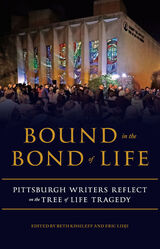 Bound in the Bond of Life: Pittsburgh Writers Reflect on the Tree of Life Tragedy
Eric Slidji and Beth Kissileff
University of Pittsburgh Press, 2020 On October 27, 2018, three congregations were holding their morning Shabbat services at the Tree of Life Synagogue in Pittsburgh’s Squirrel Hill neighborhood when a lone gunman entered the building and opened fire. He killed eleven people and injured six more in the deadliest anti-Semitic attack in American history. The story made international headlines for weeks following the shooting, but Pittsburgh and the local Jewish community could not simply move on when the news cycle did.
The essays in this anthology, written by local journalists, academics, spiritual leaders, and other community members, reveal a city’s attempts to come to terms with an unfathomable horror. Here, members from each of the three impacted congregations are able to reflect on their experiences in a raw, profound way. Local journalists who covered the story as it unfolded explore the personal and public aspects of reporting the news. Activists consider their work at a calm distance from the chaotic intensity of their daily efforts. Academics mesh their professional expertise with their personal experiences of this shattering event in their hometown. A local rabbi shares his process for crafting messages of comfort even as he attempts to reckon with his own feelings.
Bringing these local voices together into a chorus raises them over the din of international chroniclers who offer important contributions but cannot feel the intensity of this tragedy in the same way as Pittsburghers. The essays in this anthology tell a collective story of city shaken to its very core, but determined that love will ultimately win.
A portion of the proceeds from the sale of this book will go to Jewish Family and Community Service of Pittsburgh (https://www.jfcspgh.org/), which serves individuals and families of all faiths throughout the Greater Pittsburgh community.
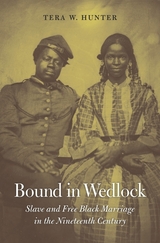 Bound in Wedlock: Slave and Free Black Marriage in the Nineteenth Century
Tera W. Hunter
Harvard University Press, 2017 Winner of the Stone Book Award, Museum of African American History
Winner of the Joan Kelly Memorial Prize
Winner of the Littleton-Griswold Prize
Winner of the Mary Nickliss Prize
Winner of the Willie Lee Rose Prize
Americans have long viewed marriage between a white man and a white woman as a sacred union. But marriages between African Americans have seldom been treated with the same reverence. This discriminatory legacy traces back to centuries of slavery, when the overwhelming majority of black married couples were bound in servitude as well as wedlock, but it does not end there. Bound in Wedlock is the first comprehensive history of African American marriage in the nineteenth century. Drawing from plantation records, legal documents, and personal family papers, it reveals the many creative ways enslaved couples found to upend white Christian ideas of marriage.
“A remarkable book… Hunter has harvested stories of human resilience from the cruelest of soils… An impeccably crafted testament to the African-Americans whose ingenuity, steadfast love and hard-nosed determination protected black family life under the most trying of circumstances.”
—Wall Street Journal
“In this brilliantly researched book, Hunter examines the experiences of slave marriages as well as the marriages of free blacks.”
—Vibe
“A groundbreaking history… Illuminates the complex and flexible character of black intimacy and kinship and the precariousness of marriage in the context of racial and economic inequality. It is a brilliant book.”
—Saidiya Hartman, author of Lose Your Mother
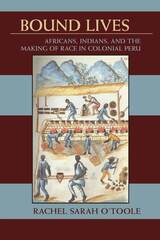 Bound Lives: Africans, Indians, and the Making of Race in Colonial Peru
Rachel Sarah O'Toole
University of Pittsburgh Press, 2012
Bound Lives chronicles the lived experience of race relations in northern coastal Peru during the colonial era. Rachel Sarah O’Toole examines the construction of a casta (caste) system under the Spanish government, and how this system was negotiated and employed by Andeans and Africans.
Royal and viceregal authorities defined legal identities of “Indian” and “Black” to separate the two groups and commit each to specific trades and labor. Although they were legally divided, Andeans and Africans freely interacted and depended on each other in their daily lives. Thus, the caste system was defined at both the top and bottom of society. Within each caste, there were myriad subcategories that also determined one’s standing.
The imperial legal system also strictly delineated civil rights. Andeans were afforded greater protections as a “threatened” native population. Despite this, with the crown’s approval during the rise of the sugar trade, Andeans were driven from their communal property and conscripted into a forced labor program. They soon rebelled, migrating away from the plantations to the highlands. Andeans worked as artisans, muleteers, and laborers for hire, and used their legal status as Indians to gain political representation.
As slaves, Africans were subject to the judgments of local authorities, which nearly always sided with the slaveholder. Africans soon articulated a rhetoric of valuation, to protect themselves in disputes with their captors and in slave trading negotiations. To combat the ongoing diaspora from Africa, slaves developed strong kinship ties and offered communal support to the newly arrived.
Bound Lives offers an entirely new perspective on racial identities in colonial Peru. It highlights the tenuous interactions of an imperial power, indigenous group, and enslaved population, and shows how each moved to establish its own power base and modify the existing system to its advantage, while also shaping the nature of colonialism itself.
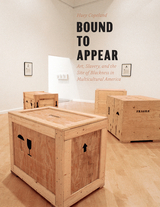 Bound to Appear: Art, Slavery, and the Site of Blackness in Multicultural America
Huey Copeland
University of Chicago Press, 2013 At the close of the twentieth century, black artists began to figure prominently in the mainstream American art world for the first time. Thanks to the social advances of the civil rights movement and the rise of multiculturalism, African American artists in the late 1980s and early ’90s enjoyed unprecedented access to established institutions of publicity and display. Yet in this moment of ostensible freedom, black cultural practitioners found themselves turning to the history of slavery. Bound to Appear focuses on four of these artists—Renée Green, Glenn Ligon, Lorna Simpson, and Fred Wilson—who have dominated and shaped the field of American art over the past two decades through large-scale installations that radically departed from prior conventions for representing the enslaved. Huey Copeland shows that their projects draw on strategies associated with minimalism, conceptualism, and institutional critique to position the slave as a vexed figure—both subject and object, property and person. They also engage the visual logic of race in modernity and the challenges negotiated by black subjects in the present. As such, Copeland argues, their work reframes strategies of representation and rethinks how blackness might be imagined and felt long after the end of the “peculiar institution.” The first book to examine in depth these artists’ engagements with slavery, Bound to Appear will leave an indelible mark on modern and contemporary art.
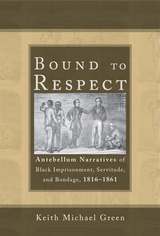 Bound to Respect: Antebellum Narratives of Black Imprisonment, Servitude, and Bondage, 1816–1861
Keith Michael Green
University of Alabama Press, 2015 Winner of the Elizabeth Agee Prize in American Literature
Challenges the commonplace narrative that the African American experience of captivity in the United States is reducible to the legal institution of slavery, a status remedied through emancipation
In Bound to Respect: Antebellum Narratives of Black Imprisonment, Servitude, and Bondage, 1816–1861, Keith Michael Green examines key texts that illuminate forms of black bondage and captivity that existed within and alongside slavery. In doing so, he restores to antebellum African American autobiographical writing the fascinating heterogeneity lost if the historical experiences of African Americans are attributed to slavery alone.
The book’s title is taken from the assertion by US Supreme Court chief justice Roger B. Taney in his 1857 Dred Scott decision that blacks had no rights that whites were “bound to respect.” This allusion highlights Green’s critical assertion that the dehumanizing absurdities to which defenders of slavery resorted to justify slavery only brought into more stark relief the humanity of African Americans.
A gifted storyteller, Green examines four forms of captivity: incarceration, enslavement to Native Americans, child indentured servitude, and maritime capture. By illuminating this dense penumbra of captivity beyond the strict definitions of slavery, he presents a fluid and holistic network of images, vocabulary, narratives, and history. By demonstrating how these additional forms of confinement flourished in the era of slavery, Green shows how they persisted beyond emancipation, in such a way that freed slaves did not in fact partake of “freedom” as white Americans understood it. This gap in understanding continues to bedevil contemporary American society, and Green deftly draws persuasive connections between past and present.
A vital and convincing offering to readers of literary criticism, African American studies, and American history, Green’s Bound to Respect brings fresh and nuanced insights to this fundamental chapter in the American story.
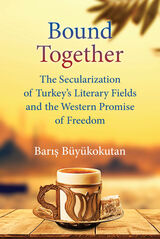 Bound Together: The Secularization of Turkey’s Literary Fields and the Western Promise of Freedom
Baris Büyükokutan
University of Michigan Press, 2021 Bound Together takes a new look at twentieth-century Turkey, asking what it will take for Turkish women and men to regain their lost freedoms, and what the Turkish case means for the prospects of freedom and democracy elsewhere. Contrasting the country’s field of poetry, where secularization was the joint work of pious and nonpious people, with that of the novel, this book inquires into the nature of western-nonwestern difference.
Turkey’s poets were more fortunate than its novelists for two reasons. Poets were slightly better at developing the idea of the autonomy of art from politics. While piety was a marker of political identity everywhere, poets were better able than novelists to bracket political differences when assessing their peers as the country was bitterly polarized politically and as the century wore on. Second, and more important, poets of all stripes were more connected to each other than were novelists. Their greater ability to find and keep one another in coffeehouses and literary journals made it less likely for prospective cross-aisle partnerships to remain untested propositions.
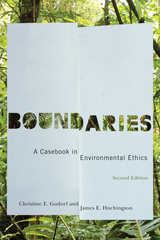 Boundaries: A Casebook in Environmental Ethics, Second Edition
Christine E. Gudorf and James E. Huchingson
Georgetown University Press, 2010 In this expanded and revised edition of a fresh and original case-study textbook on environmental ethics, Christine Gudorf and James Huchingson continue to explore the line that separates the current state of the environment from what it should be in the future. Boundaries begins with a lucid overview of the field, highlighting the key developments and theories in the environmental movement. Specific cases offer a rich and diverse range of situations from around the globe, from saving the forests of Java and the use of pesticides in developing countries to restoring degraded ecosystems in Nebraska. With an emphasis on the concrete circumstances of particular localities, the studies continue to focus on the dilemmas and struggles of individuals and communities who face daunting decisions with serious consequences. This second edition features extensive updates and revisions, along with four new cases: one on water privatization, one on governmental efforts to mitigate global climate change, and two on the obstacles that teachers of environmental ethics encounter in the classroom. Boundaries also includes an appendix for teachers that describes how to use the cases in the classroom.
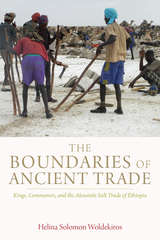 The Boundaries of Ancient Trade: Kings, Commoners, and the Aksumite Salt Trade of Ethiopia
Helina Solomon Woldekiros
University Press of Colorado, 2023 Drawing on rich ethnographic data as well as archaeological evidence, The Boundaries of Ancient Trade challenges long-standing conceptions of highly centralized sociopolitical and economic organization and trade along the Afar salt trail—one of the last economically significant caravan-based
trade routes in the world.
For thousands of years, farmers in the Tigray, Amhara, and Afar regions of Ethiopia and Eritrea have run caravans of nearly 250,000 people and pack animals annually along an eighty-mile route through both cold, high-altitude farmlands and some of the hottest volcanic desert terrain on earth. In her fieldwork, archaeologist Helina Solomon Woldekiros followed the route with her own donkey and camel caravan, observing and interviewing over 150 Arho (caravaners), salt miners, salt cutters, warehouse owners, brokers, shop owners, and salt village residents to model the political economy of the ancient Aksumite state. The first integrated ethnoarchaeological and archaeological research on this legendary route, this volume provides evidence that informal economies and local participation have played a critical role in regional trade and, ultimately, in maintaining the considerable power of the Aksumite state. Woldekiros also contributes new insights into the logistics of pack animal–based trade and variability in the central and regional organization of global ancient trade.
Using a culturally informed framework for understanding the organization of the ancient salt route and its role in linking the Aksumite state to rural highland agricultural and lowland mobile pastoralist populations, The Boundaries of Ancient Trade makes a key contribution to theoretical discussions of hierarchy and more diffuse power structures in ancient states. This work generates new interest in the region as an area of global relevance in archaeological and anthropological debates on landscape, social interaction, and practice theories.
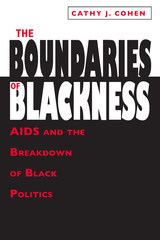 The Boundaries of Blackness: AIDS and the Breakdown of Black Politics
Cathy Cohen
University of Chicago Press, 1999 Last year, more African Americans were reported with AIDS than any other racial or ethnic group. And while African Americans make up only 13 percent of the U.S. population, they account for more than 55 percent of all newly diagnosed HIV infections. These alarming developments have caused reactions ranging from profound grief to extreme anger in African-American communities, yet the organized political reaction has remained remarkably restrained.
The Boundaries of Blackness is the first full-scale exploration of the social, political, and cultural impact of AIDS on the African-American community. Informed by interviews with activists, ministers, public officials, and people with AIDS, Cathy Cohen unflinchingly brings to light how the epidemic fractured, rather than united, the black community. She traces how the disease separated blacks along different fault lines and analyzes the ensuing struggles and debates.
More broadly, Cohen analyzes how other cross-cutting issues—of class, gender, and sexuality—challenge accepted ideas of who belongs in the community. Such issues, she predicts, will increasingly occupy the political agendas of black organizations and institutions and can lead to either greater inclusiveness or further divisiveness.
The Boundaries of Blackness, by examining the response of a changing community to an issue laced with stigma, has much to teach us about oppression, resistance, and marginalization. It also offers valuable insight into how the politics of the African-American community—and other marginal groups—will evolve in the twenty-first century.
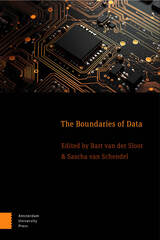 The Boundaries of Data
Bart van der Sloot
Amsterdam University Press, 2024 The legal domain distinguishes between different types of data and attaches a different level of protection to each of them. Thus, non-personal data are left largely unregulated, while privacy and data protection rules apply to personal data or personal information. There are stricter rules for processing sensitive personal data than for ‘ordinary’ personal data, and metadata or communications data are regulated differently than content communications data. Technological developments challenge these legal categorisations on at least three fronts: First, the lines between the categories are becoming harder to draw and more fluid. Second, working with various categories of data works well when the category a datum or dataset falls into is relatively stable. However, this is less and less so. Third, scholars increasingly question the rationale behind the various legal categorisations. This book assesses to what extent either of these strategies is feasible and to what extent alternative approaches could be developed by combining insights from three fields: technology, practice and law.
Boundaries of Genre
Gary Saul Morson
Northwestern University Press, 1989 Using Dostoevsky's Diary of a Writer as a springboard, Gary Saul Morson examines a number of key topics in contemporary literary theory, including the nature of literary genres and their relation to interpretation. He convincingly argues that genre is not a property of texts alone but arises from the interaction between texts and readers.
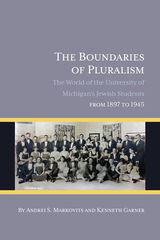 The Boundaries of Pluralism: The World of the University of Michigan’s Jewish Students from 1897 to 1945
Andrei S. Markovits & Kenneth Garner
Michigan Publishing, 2020 This is a highly original and intriguing book which should attract a good deal of interest. It is based on exhaustive, quite remarkable archival research and includes a sophisticated prosopographical analysis of Jewish enrollment over several decades. Most intriguing, the book unearths hitherto unknown information about the growing influence on University policy of the famously anti-Semitic Henry Ford and figures in Ford’s orbit. Despite the contentious nature of their research topic, the authors maintain a consistently detached, non-judgmental, yet intellectually incisive perspective. The result is an entirely credible, well written, often quite exciting chronicle of a minority, most of whose families had been in America for only one or two generations, striving to define themselves, and the response of the Gentile community to those aspirations. Given the centrality of immigration politics in the US and Europe at the present moment, this story has wide contemporary relevance. Victor Lieberman,
Raoul Wallenberg Distinguished University Professor of History,
University of Michigan
This is a deeply researched and strikingly original study of Jewish students at an important place in an important time. Its focus on both the lives of the students and their institutional situation yields deep insight and new, subtle understandings of the complicated interactions of Jewish identity and anti-semitism in a state which, in those years, was the virtual capital of the latter and at a university which struggled with both. Required reading for anyone interested in this topic. Terrence J. McDonald,
Arthur F. Thurnau Professor, University of Michigan,
and Director, Bentley Historical Library
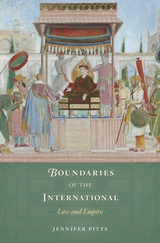 Boundaries of the International: Law and Empire
Jennifer Pitts
Harvard University Press, 2018 It is commonly believed that international law originated in relations among European states that respected one another as free and equal. In fact, as Jennifer Pitts shows, international law was forged at least as much through Europeans’ domineering relations with non-European states and empires, leaving a legacy still visible in the unequal structures of today’s international order.
Pitts focuses on the eighteenth and nineteenth centuries, the great age of imperial expansion, as European intellectuals and administrators worked to establish and justify laws to govern emerging relationships with non-Europeans. Relying on military and commercial dominance, European powers dictated their own terms on the basis of their own norms and interests. Despite claims that the law of nations was a universal system rooted in the values of equality and reciprocity, the laws that came to govern the world were parochial and deeply entangled in imperialism. Legal authorities, including Emer de Vattel, John Westlake, and Henry Wheaton, were key figures in these developments. But ordinary diplomats, colonial administrators, and journalists played their part too, as did some of the greatest political thinkers of the time, among them Montesquieu and John Stuart Mill.
Against this growing consensus, however, dissident voices as prominent as Edmund Burke insisted that European states had extensive legal obligations abroad that ought not to be ignored. These critics, Pitts shows, provide valuable resources for scrutiny of the political, economic, and legal inequalities that continue to afflict global affairs.
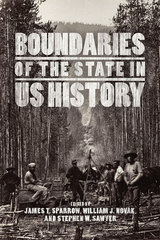 Boundaries of the State in US History
Edited by James T. Sparrow, William J. Novak, and Stephen W. Sawyer
University of Chicago Press, 2015 The question of how the American state defines its power has become central to a range of historical topics, from the founding of the Republic and the role of the educational system to the functions of agencies and America’s place in the world. Yet conventional histories of the state have not reckoned adequately with the roots of an ever-expanding governmental power, assuming instead that the American state was historically and exceptionally weak relative to its European peers.
Here, James T. Sparrow, William J. Novak, and Stephen W. Sawyer assemble definitional essays that search for explanations to account for the extraordinary growth of US power without resorting to exceptionalist narratives. Turning away from abstract, metaphysical questions about what the state is, or schematic models of how it must work, these essays focus instead on the more pragmatic, historical question of what it does. By historicizing the construction of the boundaries dividing America and the world, civil society and the state, they are able to explain the dynamism and flexibility of a government whose powers appear so natural as to be given, invisible, inevitable, and exceptional.
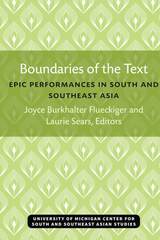 Boundaries of the Text: Epic Performances in South and Southeast Asia
Joyce Burkhalter Flueckiger and Laurie Sears, Editors
University of Michigan Press, 1991 When the Mahabharata and Ramayana are performed in South and Southeast Asia, audiences may witness a variety of styles. A single performer may deliver a two-hour recitation, women may meet in informal singing groups, shaddow puppets may host an all-night play, or professional theaters may put on productions lasting thirty nights. Performances often celebrate ritual passages: births, deaths, marriages, and religious observances. The stories live and are transmitted through performance; their characters are well known and well loved. Yet written versions of the Mahabharata and Ramayana have existed in both South and Southeast Asia for hundreds of years. Rarely have these texts been intended for private reading. What is the relationship between written text and oral performance? What do performers and audiences mean when they identify something as “Ramayana” or “Mahabharata”? How do they conceive of texts? What are the boundaries of the texts? By analyzing specific performance traditions, Boundaries of the Text addresses questions of what happens to written texts when they are preformed and how performance traditions are affected when they interact with written texts. The dynamics of this interaction are of particular interest in South and Southeast Asia where oral performance and written traditions share a long, interwoven history. The contributors to Boundaries of the Text show the difficulty of maintaining sharp distinctions between oral and written patterns, as the traditions they consider defy a unidirectional movement from oral to written. The boundaries of epic traditions are in a state of flux, contracting or expanding as South and Southeast Asian societies respond to increasing access to modern education, print technology, and electronic media.
 Boundaries of the Universe
John S. Glasby
Harvard University Press, 1971 The age of merely looking at the heavens, of mapping and cataloguing the positions of the stars down to fainter and fainter limits, is past. Throughout that long period the pace of astronomical discovery was necessarily very slow and for centuries it remained virtually static. The invention of the telescope and then the spectroscope brought about an acceleration in the rate of progress which has continued unabated to the present day. Scarcely a year now passes without some spectacular advance being made, so that today, with the co-operation of modern techniques in physics, chemistry, rocket technology and biology, many of the older notions have been completely overthrown and new ideas set up in their place. And now the rapidly developing techniques of rocket research have made it possible to carry astronomical instruments beyond the atmosphere which confines our visual and photographic observations to an extremely narrow band of the electromagnetic spectrum. Now we are able to view the universe in ultra-violet and infra-red light, and by X-rays and radio emissions which are otherwise almost completely absorbed by the atmosphere.
Each problem that is solved, however, only serves to present us with a host of others in increasing complexity. The boundaries are being pushed back steadily, it is true, but the realm of the partially understood and the totally unknown is still as great as ever, and it is with this vast no-man's-land of astronomy that this book is concerned. It deals, amongst other subjects, with astronomical instruments and their application, recent discoveries in the solar system, stellar evolution, the exploding stars, the galaxies, quasars, pulsars, the possibilities of extraterrestial life, relativity, etc. With this book as a guide, the reader cannot fail to experience some of the tremendous fascination of present-day astronomy and its innumerable unsolved problems.
 The Boundaries of Their Dwelling
Sanz, Blake
University of Iowa Press, 2021 Moving between the American South and Mexico, these stories explore how immigrant and native characters are shaped by absent family and geography. A Chilanga teen wins a trip to Miami to film a reality show about family while pining for the American brother she’s never met. A Louisiana carpenter tends to his drug-addicted son while rebuilding his house after a slew of hurricanes. A New Orleans ne’er-do-well opens a Catholic-themed bar in the wake of his devout mother’s death. A village girl from Chiapas baptizes her infant on a trek toward the U.S. border.
In the collection’s second half, we follow a Veracruzan-born drifter, Manuel, and his estranged American son, Tommy. Over decades, they negotiate separate nations and personal tragicomedies on their journeys from innocence to experience. As Manuel participates in student protests in Mexico City in 1968, he drops out to pursue his art. In the 1970s, he immigrates to Louisiana, but soon leaves his wife and infant son behind after his art shop fails. Meanwhile, Tommy grows up in 1980s Louisiana, sometimes escaping his mother’s watchful eye to play basketball at a park filled with the threat of violence. In college, he seeks acceptance from teammates by writing their term papers. Years later, as Manuel nears death and Tommy reaches middle age, they reconnect, embarking on a mission to jointly interview a former riot policeman about his military days; in the process, father and son discover what it has meant to carry each other’s stories and memories from afar.
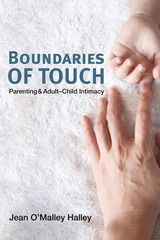 Boundaries of Touch: Parenting and Adult-Child Intimacy
Jean O'Malley Halley
University of Illinois Press, 2006 A history of the shifting and conflicting ideas about when, where, and how we should touch our children Discussing issues of parent-child contact ranging from breastfeeding to sexual abuse, Jean O'Malley Halley traces the evolution of mainstream ideas about touching between adults and children over the course of the twentieth century in the United States. Debates over when a child should be weaned and whether to allow a child to sleep in the parent's bed reveal deep differences in conceptions of appropriate adult-child contact. Boundaries of Touch shows how arguments about adult-child touch have been politicized, simplified, and bifurcated into "naturalist" and "behaviorist" viewpoints, thereby sharpening certain binary constructions such as mind/body and male/female. Halley discusses the gendering of ideas about touch that were advanced by influential social scientists and parenting experts including Benjamin Spock, Alfred C. Kinsey, and Luther Emmett Holt. She also explores how touch ideology fared within and against the post-World War II feminist movements, especially with respect to issues of breastfeeding and sleeping with a child versus using a crib. In addition to contemporary periodicals and self-help books on child rearing, Halley uses information gathered from interviews she conducted with mothers ranging in age from twenty-eight to seventy-three. Throughout, she reveals how the parent-child relationship, far from being a private or benign subject, continues as a highly contested, politicized affair of keen public interest.
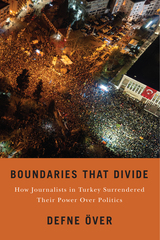 Boundaries That Divide: How Journalists in Turkey Surrendered Their Power over Politics
Defne Över
Rutgers University Press, 2026 Turkey presents a striking example of the most recent wave of global authoritarian turns. The two-decade long transition in the country’s political system also transformed its media environment. As mainstream journalists gradually yielded their places to sycophants, much more willing to praise the government in their news, the mainstream media that once oversaw–however imperfectly—political decisions started devoting its full service to cheerleading the government. Simultaneously, a new sphere of critical journalism began to emerge, with mainstream media journalists joining their fellows in the peripheries of the media. Considering the transformation of Turkey’s news media as the decay of a democratic institution, this book asks: How does the media break down under the rule of an elected government?
Drawing on fieldwork and in-depth interviews, the book traces the ruling AKP’s manipulation of social divides to consolidate power, and journalists’ navigation of the resulting climate of fear, hope, doubt, and anger. The book shows how Turkey’s news media surrendered its power over politics as some journalists embraced disinformation as a path to heightened status, others turned to self-censorship for protection, and still others resisted capture through continuous but fragmented efforts.
The book portrays journalists as central actors in media decay, while also revealing that resilience to decay emerges where rising demand for “news” meets the contentious mobilization of journalists. Although focused on Turkey, the book’s insights extend far beyond, offering urgent lessons about the future of journalism in an age of populism, polarization, and institutional erosion.
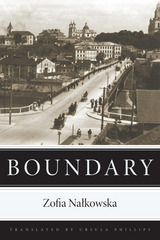 Boundary
Zofia Nalkowska
Northern Illinois University Press, 2016 Available for the first time in English, Zofia Nalkowska’s Boundary was originally published as Granica in Poland in 1935. The modernist novel was widely discussed upon its publication and praised for its psychological realism and stylistic and compositional artistry. Over the years, it has been translated into several languages and made into a feature film, and remains a standard text in the Polish secondary school curriculum.
Nalkowska was a pioneer of feminist fiction in Central Europe. Her observation of inequality in the treatment of men and women is at the heart of Boundary, which explores a transgressive love affair and its repercussions. She perceived that men—especially of the upper and middle classes—felt free to have sexual relations with lower class women, whereas it was not socially acceptable for women of any class to have sexual relations outside of marriage, or even admit to enjoying sex. This meant that working class women were seduced and then abandoned when they became pregnant, leaving them with the stigma of illegitimate children and the problem of finding work. Meanwhile, the higher class wives found themselves betrayed.
While Boundary can be interpreted as a novel about power and its abuses, it contains several dimensions—philosophical, emotional, existential, moral—that render it a consummate piece of social criticism. An elegantly composed work of imaginative fiction, it does not preach or offer solutions. Ursula Phillips’s excellent translation will interest readers of early twentieth century novels and scholars and students of Polish literature, feminist studies, and European modernism.
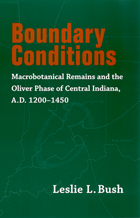 Boundary Conditions: Macrobotanical Remains and the Oliver Phase of Central Indiana, A.D. 1200-1450
Leslie L. Bush
University of Alabama Press, 2004 Prehistoric plant use in the Late Woodland Period of central Indiana This book explores the extent to which foodways, an important marker of group identity, can be recognized in charred macrobotanical remains from archaeological sites. From analysis of mere bits of burned plants we can discern what ancient people chose to eat, and how they cooked it, stored it, and preserved it. Leslie Bush compares archaeobotanical remains from 13 Oliver Phase sites in Indiana to other late prehistoric sites through correspondence analysis. The Oliver area is adjacent to the territories of three of the largest and best-known archaeological cultures of the region—Mississippian, Fort Ancient, and Oneota—so findings about Oliver foodways have implications for studies of migration, ethnogenesis, social risk, and culture contact. Historical records of three Native American tribes (Shawnee, Miami, and Huron) are also examined for potential insights into Oliver foodways. The study determines that people who inhabited central Indiana during late prehistoric times had a distinctive signature of plant use that separates them from other archaeological groups, not just in space and time but also in ideas about appropriate uses of plants. The uniqueness of the Oliver botanical pattern is found to lie in the choice of particular crops, the intensity of growing versus gathering, and the use of a large number of wild resources.
Boundary Images
Giselle Beiguelman
University of Minnesota Press, 2024 How are images made, and how should we understand their limits, capacities, and forces in digital media?
While functioning as representations or mediations of the political, images also act through the technologies and social processes that they claim only to represent. In both capacities, images can be innovative, but they can also reproduce harmful phenomena such as racism, misogyny, and conspiracy. Boundary Images investigates the political, material, and visual work that images do to cross and blur the boundaries between the technological and biological and between humans, machines, and nature. Exploring the limits of the visual and beyond what can be seen, Boundary Images posits these boundaries as starting points for the production of new and radically different ways of knowing about the world.
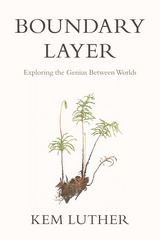 Boundary Layer: Exploring the Genius Between Worlds
Kem Luther
Oregon State University Press, 2016 In atmospheric science, a boundary layer is the band of air nearest the ground. In the Pacific Northwest, the boundary layer teems with lichens, mosses, ferns, fungi, and diminutive plants. It’s an alternate, overlooked universe whose denizens author Kem Luther calls the stegnon, the terrestrial equivalent of oceanic plankton.
In Boundary Layer, Luther takes a voyage of discovery through the stegnon, exploring the life forms that thrive there and introducing readers to the scientists who study them. With a keen ear for conversation and an eye for salient detail, the author brings a host of characters to life, people as unique and intriguing as the species inhabiting the stegnon.
A pair of park employees on a windswept beach shows how the violent clash of sea and land creates a sandy home for some of the world’s most endangered plants, including the almost-extinct pink sand-verbena. An expert on mosses, as ingenuous as the plants he loves, leads the author up a mountain and into a sphagnum bog. A husband and wife team, exiled by brutal repression in the wake of the Prague Spring, introduce European plant sociology to North America. A scientist, while revolutionizing the study of lichens, hides himself, hermitlike, inside one of the largest park reserves in the American West.
An exhilarating mix of natural history, botanical exploration, and philosophical speculation, Boundary Layer guides readers, in the end, into the author’s own landscape of metaphor. It will be welcomed by naturalists, botanists, outdoor adventurers, and anyone who savors good storytelling. Luther translates into luminous prose what boundary regions have to say, not only about the in-between places of nature, but also about the conceptual borderlands that lie between species and ecosystems, culture and nature, science and the humanities.
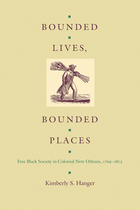 Bounded Lives, Bounded Places: Free Black Society in Colonial New Orleans, 1769–1803
Kimberly S. Hanger
Duke University Press, 1997 During Louisiana’s Spanish colonial period, economic, political, and military conditions combined with local cultural and legal traditions to favor the growth and development of a substantial group of free blacks. In Bounded Lives, Bounded Places, Kimberly S. Hanger explores the origin of antebellum New Orleans’ large, influential, and propertied free black—or libre—population, one that was unique in the South. Hanger examines the issues libres confronted as they individually and collectively contested their ambiguous status in a complexly stratified society.
Drawing on rare archives in Louisiana and Spain, Hanger reconstructs the world of late-eighteenth-century New Orleans from the perspective of its free black residents, and documents the common experiences and enterprises that helped solidify libres’ sense of group identity. Over the course of three and a half decades of Spanish rule, free people of African descent in New Orleans made their greatest advances in terms of legal rights and privileges, demographic expansion, vocational responsibilities, and social standing. Although not all blacks in Spanish New Orleans yearned for expanded opportunity, Hanger shows that those who did were more likely to succeed under Spain’s dominion than under the governance of France, Great Britain, or the United States.
The advent of U.S. rule brought restrictions to both manumission and free black activities in New Orleans. Nonetheless, the colonial libre population became the foundation for the city’s prosperous and much acclaimed Creoles of Color during the antebellum era.
 Bounded People, Boundless Lands: Envisioning A New Land Ethic
Eric T. Freyfogle
Island Press, 1998 What right do humans have to claim sovereignty over the land, to build fences and set boundaries when nature itself recognizes no such boundaries? Is there hope for a new land ethic that is less destructive toward the land, that views nature as something to be valued and nurtured rather than exploited and "developed"?One of the main challenges of contemporary environmentalism is to find a lasting, more ethical way for people to live on the planet. In Bounded People, Boundless Lands, legal scholar Eric T. Freyfogle asks a series of pointed and challenging questions about the human quest for ecological harmony. Deftly interweaving moral and ethical considerations with case studies and real-life situations, Freyfogle provides a deep philosophical examination of personal responsibility and the dominion of human beings over the earth. He raises provocative questions about private property rights, responsible land ownership, the rights of wildlife, and ecological health. Although the questions that Freyfogle asks are not new, they are presented in the context of contemporary events, often connected to legal cases, which allows him to bring age-old issues up to date, and to make direct connections between abstract concepts and our own lives.Throughout, Freyfogle questions the way human beings envision the land, thinking they can claim nature as their own, and criticizes market approaches to valuing and using nature. As an introduction to land ethics, but one that embraces environmental, legal, and philosophical arguments, Bounded People, Boundless Lands is a unique contribution to the environmental literature.
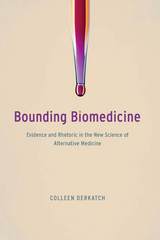 Bounding Biomedicine: Evidence and Rhetoric in the New Science of Alternative Medicine
Colleen Derkatch
University of Chicago Press, 2016 During the 1990s, an unprecedented number of Americans turned to complementary and alternative medicine (CAM), an umbrella term encompassing chiropractic, energy healing, herbal medicine, homeopathy, meditation, naturopathy, and traditional Chinese medicine. By 1997, nearly half the US population was seeking CAM, spending at least $27 billion out of pocket.
Bounding Biomedicine centers on this boundary-changing era, looking at how consumer demand shook the health care hierarchy. Drawing on scholarship in rhetoric and science and technology studies, the book examines how the medical profession scrambled to maintain its position of privilege and prestige, even as its foothold appeared to be crumbling. Colleen Derkatch analyzes CAM-themed medical journals and related discourse to illustrate how members of the medical establishment applied Western standards of evaluation and peer review to test health practices that did not fit easily (or at all) within standard frameworks of medical research. And she shows that, despite many practitioners’ efforts to eliminate the boundaries between “regular” and “alternative,” this research on CAM and the forms of communication that surrounded it ultimately ended up creating an even greater division between what counts as safe, effective health care and what does not.
At a time when debates over treatment choices have flared up again, Bounding Biomedicine gives us a possible blueprint for understanding how the medical establishment will react to this new era of therapeutic change.
 A Boundless Field: American Poetry at Large
Stephen Yenser
University of Michigan Press, 2002 This collection of essays by esteemed poet and scholar Stephen Yenser contends that poetry thrives in these United States, that revelatory work is being done in quite different and seemingly oppositional camps, and that in view of its abundance and variety there is no need for the critic to debunk or deride. Like W. H. Auden, Yenser believes that mediocre poetry withers away quickly and that even good poetry dies if not attended to.
A Boundless Field takes its title from Walt Whitman's sanguine view of the future of American poetry as he expressed it in "Democratic Vistas," a view that seems all the more pertinent today. During the later twentieth century, poetry in the United States branched out in many directions, ranging from a formalism influenced by New Criticism and a subsequent Neo-Formalism through the New York School and Language Poetry to a postmodern maximalism too diverse to categorize. The essays and reviews collected in this volume take up the work of poets writing in these different areas and writing into the twenty-first century.
Yenser's constant criteria for worthiness of attention include an alertness to the long tradition of English and American poetry, a consistent awareness of the integrity of the poetic line, a simultaneous commitment to verbal play and verbal work, and an implicit acknowledgment of two of Wallace Stevens's declarations: first that all admirable poetry is experimental poetry, and second that at first blush all good poems put up a certain resistance to the reader. Hence the usefulness of "criticism."
Stephen Yenser is Professor of English, University of California, Los Angeles. His poetry has appeared in many publications and to wide acclaim, including the Walt Whitman Award of the American Academy of Poets for his book The Fire in All Things. He is also author of The Consuming Myth: The Work of James Merrill and Circle to Circle: The Poetry of Robert Lowell.
 Boundless: Native American Abundance in Art and Literature
Lisa A. Crossman and Heid E. Erdrich
Amherst College Press, 2025 Boundless expands conversations on Native and Indigenous art and literature by presenting words and images in kinship. Starting in the collections of the Mead Art Museum and the Collection of Native American Literature at Amherst College and centered on the creative production of Native peoples of the Northeast, the project follows relationships between Indigenous authors and artists across the United States and beyond borders. Boundless presents an engagement of Indigenous curatorial methods as practiced by guest curator Heid E. Erdrich (Ojibwe) in an exhibition in two iterations hosted by the Mead in 2023 and 2024. Advisors to Boundless include Mohegan, Nipmuc, Shinnecock, and Wampanoag artists and scholars, along with others, who supported Erdrich in her urge to center the project in the Northeast. Advisors contributed both visual art and writing to the exhibition and publication. Collaborative co-creation between artists, students, faculty, Mead staff Lisa Crossman and Emily Potter-Ndiaye and the guest curator are also explored in this illustrated volume.
Amherst College’s Collection of Native American Literature contains thousands of Indigenous-authored works spanning centuries. The Collection’s abundance of books, prints, music, ephemera, and artist-made works, all by Native people, provide rich selections for Boundless. Crosscurrents of Indigenous visual art and literature are considered in this broad and interdisciplinary project. Boundless crosses generations to explore relatedness, kinship, and collegiality.
Boundless brings artists and writers together across generations, often drawing together works by members of the same tribe or even the same family to show the history, presence, and futurity of Native American creative and intellectual production.
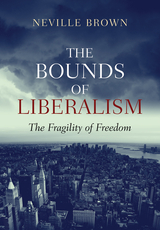 The Bounds of Liberalism: The Fragility of Freedom
Neville Brown
Sussex Academic Press, 2022 The Bounds of Liberalism: The Fragility of Freedom is the third contribution to an informal trilogy which seeks to reconnoitre the salient issues involved in building a durable world peace. The first was the well-received Engaging the Cosmos: Astronomy, Philosophy and Faith (2006) and the second the highly commended The Geography of Human Conflict: Approaches to Survival (2009). The core issue of the present work is how far the West may need to modify or extend the liberal philosophy informing its responses to the multiple world crisis it is now attempting to deal with. It provides a review of the strengths and weaknesses of Social Liberalism that, broadly speaking, occupies the ground between moderate Right and moderate Left. The work is informed by the conviction that the world, half a century hence, will be either considerably better than now (freer, more peaceable, more enriching …) or else a good deal worse.
Those concerned to effect the former outcome should promote the spread among emergent states of well-founded democracy. But they must also look stringently at how well democratic institutions may function in the mass societies of the West. History indicates that pell-mell cultural change, constant ecological impoverishment, and endless leap forwards in applied science may not augur well for stability and peace. The author's accepted expertise in History, International Security, Planetary Development and Applied Geophysics means he can address a variety of issues such as: climate change and resource depletion; community decay, data saturation, the future of universities, democratic devolution, leaders and led, and medical philosophy; and biowarfare, the management of Near Space, international political economy, and a planetary ethos.
It is contended that we are not approaching the "end of History" in any meaningful sense. Instead we are passing through, at accelerated pace, an evolutionary transition as impacting as that between the Old and New Stone Ages. Our perspectives on the immediate future may be honed by free-ranging speculation about what mankind can anticipate over the next few centuries.
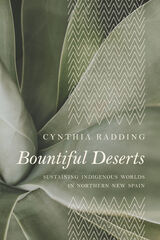 Bountiful Deserts: Sustaining Indigenous Worlds in Northern New Spain
Cynthia Radding
University of Arizona Press, 2022 Common understandings drawn from biblical references, literature, and art portray deserts as barren places that are far from God and spiritual sustenance. In our own time, attention focuses on the rigors of climate change in arid lands and the perils of the desert in the northern Mexican borderlands for migrants seeking shelter and a new life.
Bountiful Deserts foregrounds the knowledge of Indigenous peoples in the arid lands of northwestern Mexico, for whom the desert was anything but barren or empty. Instead, they nurtured and harvested the desert as a bountiful and sacred space. Drawing together historical texts and oral testimonies, archaeology, and natural history, author Cynthia Radding develops the relationships between people and plants and the ways that Indigenous people sustained their worlds before European contact through the changes set in motion by Spanish encounters, highlighting the long process of colonial conflicts and adaptations over more than two centuries. This work reveals the spiritual power of deserts by weaving together the cultural practices of historical peoples and contemporary living communities, centered especially on the Yaqui/Yoeme and Mayo/Yoreme.
Radding uses the tools of history, anthropology, geography, and ecology to paint an expansive picture of Indigenous worlds before and during colonial encounters. She re-creates the Indigenous worlds in both their spiritual and material realms, bringing together the analytical dimension of scientific research and the wisdom of oral traditions in its exploration of different kinds of knowledge about the natural world. Published in cooperation with the William P. Clements Center for Southwest Studies, Southern Methodist University
Bourbon Democracy in Alabama, 1874–1890
Allen Johnston Going
University of Alabama Press, 1951 Analyzes and describes the state government of Alabama during the Bourbon Period as it operated under the Democratic and Conservative party
Hailed as the definitive study of the subject when it appeared in 1951, Bourbon Democracy in Alabama analyzes and describes the state government of Alabama during the Bourbon Period as it operated under the Democratic and Conservative party. For this edition, the author has prepared a new foreword in which he surveys recent scholarship. The term Bourbon originated during the Reconstruction Era and was used by the Radicals to label their Democratic opponents as anti-progressive and ultraconservative. The term has been adopted generally to describe the period following the overthrow of Radical Reconstruction.
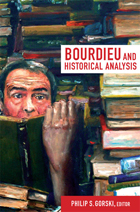 Bourdieu and Historical Analysis
Philip S. Gorski, ed.
Duke University Press, 2012 The French sociologist Pierre Bourdieu had a broader theoretical agenda than is generally acknowledged. Introducing this innovative collection of essays, Philip S. Gorski argues that Bourdieu's reputation as a theorist of social reproduction is the misleading result of his work's initial reception among Anglophone readers, who focused primarily on his mid-career thought. A broader view of his entire body of work reveals Bourdieu as a theorist of social transformation as well. Gorski maintains that Bourdieu was initially engaged with the question of social transformation and that the question of historical change not only never disappeared from his view, but re-emerged with great force at the end of his career. The contributors to Bourdieu and Historical Analysis explore this expanded understanding of Bourdieu's thought and its potential contributions to analyses of large-scale social change and historical crisis. Their essays offer a primer on his concepts and methods and relate them to alternative approaches, including rational choice, Lacanian psychoanalysis, pragmatism, Latour's actor-network theory, and the "new" sociology of ideas. Several contributors examine Bourdieu's work on literature and sports. Others extend his thinking in new directions, applying it to nationalism and social policy. Taken together, the essays initiate an important conversation about Bourdieu's approach to sociohistorical change.
Contributors. Craig Calhoun, Charles Camic, Christophe Charle, Jacques Defrance, Mustafa Emirbayer, Ivan Ermakoff, Gil Eyal, Chad Alan Goldberg, Philip S. Gorski, Robert A. Nye, Erik Schneiderhan, Gisele Shapiro, George Steinmetz, David Swartz
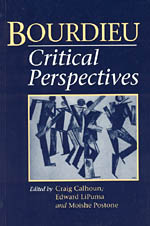 Bourdieu: Critical Perspectives
Edited by Craig Calhoun, Edward LiPuma, and Moishe Postone
University of Chicago Press, 1993 Long a dominant figure in the French human sciences, Pierre Bourdieu has become internationally influential in the fields of sociology, anthropology, and cultural studies. A major figure in the development of "practice" as an organizing concept in social research, Bourdieu has emerged as the foremost advocate of reflexive social science; his work combines an astonishing range of empirical work with highly sophisticated theory.
American reception of his works, however, has lacked a full understanding of their place within the broad context of French human science. His individual works separated by distinct boundaries between social science fields in American academia, Bourdieu's cohesive thought has come to this country in fragments.
Bourdieu: Critical Perspectives provides a unified and balanced appraisal of Bourdieu's varied works by both proponents and skeptics. The essays are written from the varied viewpoints of cultural anthropology, ethnomethodology and other varieties of sociology, existential and Wittgensteinian philosophies, linguistics, media studies, and feminism. They work around three main themes: Bourdieu's effort to transcend gaps between practical knowledge and universal structures, his central concept of "reflexivity," and the relations between social structure, systems of classification, and language.
Ultimately, the contributors raise a variety of crucial theoretical questions and address problems that are important not only to understanding Bourdieu but to advancing empirical work of the kind he has pioneered. In an essay written especially for this volume, Bourdieu describes his own "mode of intellectual production" and the reasons he sees for its common misunderstanding.
The contributors are Hubert Dreyfus, Paul Rabinow, Charles Taylor, Aaron Cicourel, James Collins, William Hanks, Beate Krais, Nicholas Garnham, Scott Lash, Roger Brubaker, and Loic Wacquant, and the editors.
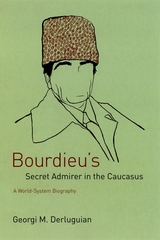 Bourdieu's Secret Admirer in the Caucasus: A World-System Biography
Georgi M. Derluguian
University of Chicago Press, 2005 Bourdieu's Secret Admirer in the Caucasus is a gripping account of the developmental dynamics involved in the collapse of Soviet socialism. Fusing a narrative of human agency to his critical discussion of structural forces, Georgi M. Derluguian reconstructs from firsthand accounts the life story of Musa Shanib—who from a small town in the Caucasus grew to be a prominent leader in the Chechen revolution. In his examination of Shanib and his keen interest in the sociology of Pierre Bourdieu, Derluguian discerns how and why this dissident intellectual became a nationalist warlord.
Exploring globalization, democratization, ethnic identity, and international terrorism, Derluguian contextualizes Shanib's personal trajectory from de-Stalinization through the nationalist rebellions of the 1990s, to the recent rise in Islamic militancy. He masterfully reveals not only how external economic and political forces affect the former Soviet republics but how those forces are in turn shaped by the individuals, institutions, ethnicities, and social networks that make up those societies. Drawing on the work of Charles Tilly, Immanuel Wallerstein, and, of course, Bourdieu, Derluguian's explanation of the recent ethnic wars and terrorist acts in Russia succeeds in illuminating the role of human agency in shaping history.
Bourgeois and Aristocratic Cultural Encounters in Garden Art, 1550-1850
Michel Conan
Harvard University Press, 2002 Bourgeois and Aristocratic Cultural Encounters in Garden Art, 1550–1850 offers an unparalleled opportunity to discover how complex relationships between bourgeois and aristocrats have led to developments in garden art from the Renaissance into the Industrial Revolution, irrespective of stylistic differences. These essays show how garden creation has contributed to blurring social boundaries and to the ongoing redefinition of the bourgeoisie and the aristocracy. Also illustrated is the aggressive use of gardens by bourgeois in more-or-less successful attempts at subverting existing social hierarchies in renaissance Genoa and eighteenth-century Bristol, England; as well as the opposite, as demonstrated by the king of France, Louis XIV, who claimed to rule the arts, but imitated the curieux fleuristes, a group of amateurs from diverse strata of French society.
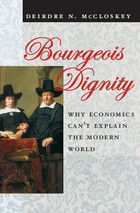 Bourgeois Dignity: Why Economics Can't Explain the Modern World
Deirdre Nansen McCloskey
University of Chicago Press, 2010 The big economic story of our times is not the Great Recession. It is how China and India began to embrace neoliberal ideas of economics and attributed a sense of dignity and liberty to the bourgeoisie they had denied for so long. The result was an explosion in economic growth and proof that economic change depends less on foreign trade, investment, or material causes, and a whole lot more on ideas and what people believe.
Or so says Deirdre N. McCloskey in Bourgeois Dignity, a fiercely contrarian history that wages a similar argument about economics in the West. Here she turns her attention to seventeenth- and eighteenth-century Europe to reconsider the birth of the industrial revolution and the rise of capitalism. According to McCloskey, our modern world was not the product of new markets and innovations, but rather the result of shifting opinions about them. During this time, talk of private property, commerce, and even the bourgeoisie itself radically altered, becoming far more approving and flying in the face of prejudices several millennia old. The wealth of nations, then, didn’t grow so dramatically because of economic factors: it grew because rhetoric about markets and free enterprise finally became enthusiastic and encouraging of their inherent dignity.
An utterly fascinating sequel to her critically acclaimed book The Bourgeois Virtues, Bourgeois Dignity is a feast of intellectual riches from one of our most spirited and ambitious historians—a work that will forever change our understanding of how the power of persuasion shapes our economic lives.
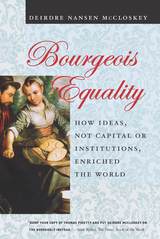 Bourgeois Equality: How Ideas, Not Capital or Institutions, Enriched the World
Deirdre Nansen McCloskey
University of Chicago Press, 2016 There’s little doubt that most humans today are better off than their forebears. Stunningly so, the economist and historian Deirdre McCloskey argues in the concluding volume of her trilogy celebrating the oft-derided virtues of the bourgeoisie. The poorest of humanity, McCloskey shows, will soon be joining the comparative riches of Japan and Sweden and Botswana.
Why? Most economists—from Adam Smith and Karl Marx to Thomas Piketty—say the Great Enrichment since 1800 came from accumulated capital. McCloskey disagrees, fiercely. “Our riches,” she argues, “were made not by piling brick on brick, bank balance on bank balance, but by piling idea on idea.” Capital was necessary, but so was the presence of oxygen. It was ideas, not matter, that drove “trade-tested betterment.” Nor were institutions the drivers. The World Bank orthodoxy of “add institutions and stir” doesn’t work, and didn’t. McCloskey builds a powerful case for the initiating role of ideas—ideas for electric motors and free elections, of course, but more deeply the bizarre and liberal ideas of equal liberty and dignity for ordinary folk. Liberalism arose from theological and political revolutions in northwest Europe, yielding a unique respect for betterment and its practitioners, and upending ancient hierarchies. Commoners were encouraged to have a go, and the bourgeoisie took up the Bourgeois Deal, and we were all enriched.
Few economists or historians write like McCloskey—her ability to invest the facts of economic history with the urgency of a novel, or of a leading case at law, is unmatched. She summarizes modern economics and modern economic history with verve and lucidity, yet sees through to the really big scientific conclusion. Not matter, but ideas. Big books don’t come any more ambitious, or captivating, than Bourgeois Equality.
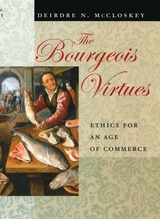 The Bourgeois Virtues: Ethics for an Age of Commerce
Deirdre Nansen McCloskey
University of Chicago Press, 2006 For a century and a half, the artists and intellectuals of Europe have scorned the bourgeoisie. And for a millennium and a half, the philosophers and theologians of Europe have scorned the marketplace. The bourgeois life, capitalism, Mencken’s “booboisie” and David Brooks’s “bobos”—all have been, and still are, framed as being responsible for everything from financial to moral poverty, world wars, and spiritual desuetude. Countering these centuries of assumptions and unexamined thinking is Deirdre McCloskey’s The Bourgeois Virtues, a magnum opus that offers a radical view: capitalism is good for us.
McCloskey’s sweeping, charming, and even humorous survey of ethical thought and economic realities—from Plato to Barbara Ehrenreich—overturns every assumption we have about being bourgeois. Can you be virtuous and bourgeois? Do markets improve ethics? Has capitalism made us better as well as richer? Yes, yes, and yes, argues McCloskey, who takes on centuries of capitalism’s critics with her erudition and sheer scope of knowledge. Applying a new tradition of “virtue ethics” to our lives in modern economies, she affirms American capitalism without ignoring its faults and celebrates the bourgeois lives we actually live, without supposing that they must be lives without ethical foundations.
High Noon, Kant, Bill Murray, the modern novel, van Gogh, and of course economics and the economy all come into play in a book that can only be described as a monumental project and a life’s work. The Bourgeois Virtues is nothing less than a dazzling reinterpretation of Western intellectual history, a dead-serious reply to the critics of capitalism—and a surprising page-turner.
Bouttios and Late Antique Antioch: Reconstructing a Lost Historian
Benjamin Garstad
Harvard University Press, 2022 Bouttios and Late Antique Antioch undertakes the exciting, if laborious, task of assembling clues and piecing back together a book that has disappeared from our library of Greek and Roman works. But it does not merely add another author to the bibliography of antiquity and place him in fourth-century Antioch. It shows how the gods could be reduced to historical characters, the powerful goddess of luck turned into a pitiful victim of virgin sacrifice, and respected emperors defamed as despots—and, in sum, how the writing of history could be exploited for partisan purposes. We see how people in what we consider the distant past thought about their own history, and how they discussed momentous political and social issues across a seemingly insurmountable divide in a period of existential crisis.
The Bow and the Lyre: The Poem, The Poetic Revelation, Poetry and History
By Octavio Paz
University of Texas Press, 1973 In The Bow and the Lyre Octavio Paz, one of the most important poets writing in Spanish, presents his sustained reflections on the poetic phenomenon and on the place of poetry in history and in our personal lives. It is written in the same prose style that distinguishes The Labyrinth of Solitude. The Bow and the Lyre will serve as an important complement to Paz's poetry. Paz's discussions of the different aspects of the poetic phenomenon are not limited to Spanish and Spanish American literature. He is almost as apt to choose an example from Homer, Vergil, Blake, Whitman, Rimbaud as he is from Lope de Vega, Jiménez, Darío, Neruda. In writing these essays, he draws on his vast storehouse of knowledge, revealing a world outlook of ample proportions. In reading these essays, we share the observations of a searching, original, highly cultivated mind.
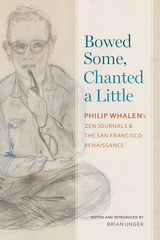 Bowed Some, Chanted a Little: Philip Whalen's Zen Journals and the San Francisco Renaissance
Edited and Introduced by Brian Unger
University of Alabama Press, 2023 The literary journals of a key figure in both the Beat and San Francisco Renaissance movements of the New American Poetry, and an ordained Zen Buddhist priest
Philip Whalen (1923–2002) authored twenty collections of verse, more than twenty broadsides, two novels, a huge assemblage of autobiographical literary journals, nine or ten experimental prose works, and dozens of critical essays, lectures, commentaries, introductions, prefaces, and interviews. But he came to regard his literary journals as his most important prose legacy.
Whalen’s literary work represents a significant turn in American letters, as he and his closest colleagues immersed themselves in East Asian literature and religion, reinvigorating strikingly new linguistic and aesthetic paths for North American writers and artists. However, until now Whalen’s forty-plus years of journals—sixty small eight-by-six-inch notebooks—have been largely inaccessible, archived in the rare book and manuscript library at the University of California, Berkeley, undigitized and unavailable online. Thus, the publication of a critical scholarly edition of Whalen’s journals and notebooks constitutes an important literary event and an invaluable resource for scholars, teachers, poets, and lay readers who follow twentieth-century North American poetry.
The Bower
Connie Voisine
University of Chicago Press, 2019 How can a person come to understand wars and hatreds well enough to explain them truthfully to a child? The Bower engages this timeless and thorny question through a recounting of the poet-speaker’s year in Belfast, Northern Ireland, with her young daughter. The speaker immerses herself in the history of Irish politics—including the sectarian conflict known as The Troubles—and gathers stories of a painful, divisive past from museum exhibits, newspapers, neighbors, friends, local musicians, and cabbies. Quietly meditative, brooding, and heart-wrenching, these poems place intimate moments between mother and daughter alongside images of nationalistic violence and the angers that underlie our daily interactions. A deep dive into sectarianism and forgiveness, this timely and nuanced book examines the many ways we are all implicated in the impulse to “protect our own” and asks how we manage the histories that divide us.
Bowers Mansion: The Legacy of a Comstock Family
Tamera J. Buzick
University of Nevada Press, 2026 Few estates born from the discovery of the Comstock Lode still survive. Among the grandest, Bowers Mansion, dates to the height of the Civil War. The property has a tragic history shrouded in legend, laid bare within these pages: from the mansion’s construction; to Eilley Bowers’s fight to maintain the property after her husband’s death, running it as a resort and telling fortunes; to the mansion’s restoration in the sixties with aid of a handful of determined women. Bowers Mansion: The Legacy of a Comstock Family is a tale of wealth and poverty, of decay and revival, offering up a powerful story from Nevada’s history for readers of all kinds to enjoy.
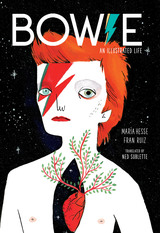 Bowie: An Illustrated Life
By María Hesse and Fran Ruiz; translated by Ned Sublette
University of Texas Press, 2019 David Bowie was a master of artifice and reinvention. In that same spirit, illustrator María Hesse and writer Fran Ruiz have created a vivid retelling of the life of David Robert Jones, from his working-class childhood to glam rock success to superstardom, concluding with the final recording sessions after his cancer diagnosis. Narrated from the rock star’s point of view, Bowie colorfully renders both the personal and the professional turning points in a life marked by evolution and innovation. We see Bowie facing the sorrow of his brother’s mental illness, kicking a cocaine habit while other musicians succumbed to deadly overdoses, contending with a tumultuous love life, and radiating joy as a father. Along the way, he describes how he shattered the boundaries of song and society with a counterculture cast that included Iggy Pop, Brian Eno, and Freddie Mercury—as well as his own creations, Ziggy Stardust and the Thin White Duke. Evocatively illustrated from start to finish, Bowie is a stellar tribute to an inimitable star.
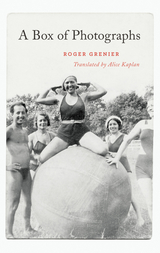 A Box of Photographs
Roger Grenier
University of Chicago Press, 2013 Most attempts to generalize about photography as a medium run up against our experience of the photographs themselves. We live with photos and cameras every day, and philosophies of the photographic image do little to shake our intimate sense of how we produce photographs and what they mean to us. In this book that is equal parts memoir and intellectual and cultural history, French writer Roger Grenier contemplates the ways that photography can change the course of a life, reflecting along the way on the history of photography and its practitioners.
Unfolding in brief, charming vignettes, A Box of Photographs evokes Grenier’s childhood in Pau, his war years, and his working life at the Gallimard publishing house in Paris. Throughout these personal stories, Grenier subtly weaves the story of a lifetime of practicing and thinking about photography and its heroes—Henri Cartier-Bresson, Weegee, Alfred Eisenstaedt, George Brassaï, Inge Morath, and others. Adding their own insights about photography to the narrative are a striking range of writers, thinkers, and artists, from Lewis Carroll, Albert Camus, and Arthur Schopenhauer to Susan Sontag, Edgar Degas, and Eugène Delacroix. Even cameras themselves come to life and take on personalities: an Agfa accompanies Grenier on grueling military duty in Algeria, a Voigtlander almost gets him killed by German soldiers during the liberation of Paris, and an ill-fated Olympus drowns in a boating accident. Throughout, Grenier draws us into the private life of photographs, seeking the secrets they hold for him and for us.
A valedictory salute to a lost world of darkrooms, proofs, and the gummed paper corners of old photo albums, A Box of Photographs is a warm look at the most honest of life’s mirrors.
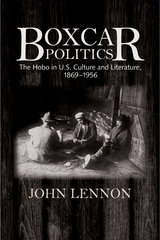 Boxcar Politics: The Hobo in U.S. Culture and Literature, 1869-1956
John Lennon
University of Massachusetts Press, 2014 The hobo is a figure ensconced in the cultural fabric of the United States. Once categorized as a member of a homeless army who ought to be jailed or killed, the hobo has evolved into a safe, grandfatherly exemplar of Americana. Boxcar Politics reestablishes the hobo's political thorns.
John Lennon maps the rise and demise of the political hobo from the nineteenth-century introduction of the transcontinental railroad to the Federal Aid Highway Act of 1956. Intertwining literary, historical, and theoretical representations of the hobo, he explores how riders and writers imagined alternative ways that working-class people could use mobility to create powerful dissenting voices outside of fixed hierarchal political organizations. Placing portrayals of hobos in the works of Jack London, Jim Tully, John Dos Passos, and Jack Kerouac alongside the lived reality of people hopping trains (including hobos of the IWW, the Scottsboro Boys, and those found in numerous long-forgotten memoirs), Lennon investigates how these marginalized individuals exerted collective political voices through subcultural practices.
Boxed In: The Culture of TV
Mark Crispin Miller
Northwestern University Press, 1988 Informed, controversial, ranging from a melancholy study of rock and roll's descent into show business to a hilarious look at the spectacle that is the Jerry Lewis Telethon, these twenty essays offer an unusual and (ironically) entertaining study of American media by one of its foremost critics.
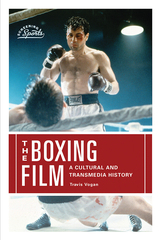 The Boxing Film: A Cultural and Transmedia History
Travis Vogan
Rutgers University Press, 2021 As one of popular culture’s most popular arenas, sports are often the subject of cinematic storytelling. But boxing films are special. There are more movies about boxing, by a healthy margin, than any other sport, and boxing accompanied and aided the medium’s late nineteenth-century emergence as a popular mass entertainment. Many of cinema’s most celebrated directors—from Oscar Micheaux to Martin Scorsese—made boxing films. And while the production of other types of sports movies generally corresponds with the current popularity of their subject, boxing films continue to be made regularly even after the sport has wilted from its once-prominent position in the sports hierarchy of the United States. From Edison’s Leonard-Cushing Fight to The Joe Louis Story, Rocky, and beyond, this book explores why boxing has so consistently fascinated cinema and popular media culture by tracing how boxing movies inform the sport’s meanings and uses from the late nineteenth century to the early twenty-first century.
Boxing Is . . .: Reflections on the Sweet Science
Thomas Hauser
University of Arkansas Press, 2010 Thomas Hauser has become “must reading” in the boxing community, and his latest book demonstrates why. Boxing Is . . . brings together all of Hauser’s 2009 articles. In them, Hauser illuminates the behind-the-scenes stories of the year’s most memorable personalities and events. He takes us from Manny Pacquiao’s dressing room in the tense moments before 2009’s biggest fight to an in-depth portrait of the incomparable Sugar Ray Robinson, all the while continuing to show why his annual collections, avidly anticipated by fans and critics alike, have become, according to columnist Bart Barry, “an essential part of boxing’s official record and the chronicles of this era most likely to endure.”
The Boxing Scene
Thomas Hauser
Temple University Press, 2008 Thomas Hauser has been called “one of boxing’s greatest writers. The Boxing Scene, Hauser’s provocative new anthology, contains all of his trademark insights and candor as he peels away layers of hypocrisy to reveal the men who make up the contemporary boxing landscape. Hauser exposes the inner workings of HBO Sports; examines the phenomenon of mixed martial arts as it relates to boxing; and records the amusing encounter between his 81-year-old mother and larger-than-life boxing impresario Don King. The Boxing Scene also updates Hauser’s personal and professional thoughts on superstars like Oscar De La Hoya, Floyd Mayweather Jr., Ricky Hatton, Miguel Cotto, and Bernard Hopkins as well as fight promoter Bob Arum, announcer Bob Sheridan and a host of others. The Boxing Scene recreates another year in professional boxing and adds to Hauser’s definitive record of the sport.
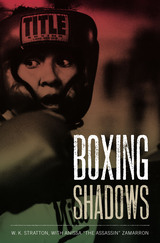 Boxing Shadows
By W. K. Stratton, with Anissa "The Assassin" Zamarron
University of Texas Press, 2009 Reaching the top in any sport requires a long, hard climb. But when you start with the baggage of years of family dysfunction and incarceration in a hellish mental hospital, the climb is especially steep. Yet even with such weights to carry, Anissa Zamarron won not one, but two, world championships in women's boxing. Her story, as dramatically intense as the Clint Eastwood film Million Dollar Baby, is one of tremendous courage and determination to overcome the odds against her as a Latina and as a woman working through mental illness and addiction—a fight in which Zamarron has been as powerful and successful as she has been in the boxing ring. In this compelling biography, acclaimed author W. K. "Kip" Stratton collaborates with Zamarron to tell the story of her unlikely rise to the pinnacle of women's boxing. With searing honesty, Zamarron describes how the chaotic breakup of her childhood family caused her to develop "demons" that drove her to aggressive behavior in school, an addiction to self-destructive habits, including cutting, and eventually to a corrupt for-profit mental hospital in which she spent eighteen months tied to a bed. She explains how boxing became her salvation as an adult; she learned how to turn her anger and aggression into motivation to train hard and excel at her sport, not only becoming the first woman to fight as a professional in a sanctioned fight in New York, but also fighting more ten-round fights than any other woman in history. A gripping account of Zamarron's 2005 upset win over Maribel Zurita to claim her second world championship caps the book.
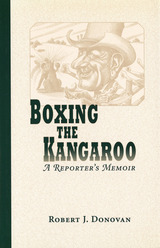 Boxing the Kangaroo: A Reporter's Memoir
Robert J. Donovan
University of Missouri Press, 2000 "The host had brought out a pair of boxing gloves and asked the president if any of his friends would like to indulge in the Australian sport of boxing kangaroos. Once the president of the United States had selected me, there was almost no way out, unless I ran home to tell my mother." In Boxing the Kangaroo: A Reporter's Memoir, Robert J. Donovan shares many exciting events that highlighted his stellar journalistic career. As an investigative reporter during five presidential administrations, Donovan has had many "insider" experiences. His memoir delightfully humanizes each of the five presidents he reported on: Truman, Eisenhower, Kennedy, Johnson, and Nixon. Donovan began his career working as a night copyboy for the Buffalo Courier-Express, earning seven dollars a week. In 1937, he got a job as a reporter for the New York Herald Tribune, where he worked for many years. By 1942 the Herald Tribune had assigned Donovan to cover City Hall and the lively activities of Fiorello La Guardia. After his service in World War II he returned to the Herald Tribune to cover the man from Missouri who followed FDR. Ultimately, Donovan served as chief of the New York Herald Tribune Washington bureau and the Los Angeles Times Washington bureau. Donovan traveled across the country with Harry S. Truman during his "Give 'Em Hell, Harry" campaign. He covered Dwight D. Eisenhower's election, about which he says there was never a doubt--Ike, the war hero, mesmerized the country. He was a personal friend of John F. Kennedy, having written about the President's PT-109 heroics in World War II, and was on the scene the day Kennedy was assassinated: "The drama in the second press bus, in which I rode in the presidential motorcade in Dallas, is unforgettable. `Why has the motorcade stopped?' a reporter asked as we drew near the Texas School Book Depository. . . . `I heard a shot,' another said. A voice in the rear contradicted him. `That was a motorcycle backfiring.'" Donovan would find out shortly before the rest of the world that, in fact, it was not a motorcycle backfiring, but the firing of an assassin's bullet that killed the nation's thirty-fifth president. Boxing the Kangaroo is one of the best "I was there" accounts of American history. This fascinating book will appeal to journalists, American history buffs, and the general reader alike.
Boy
Tracy Youngblom
CavanKerry Press, 2023 A poetry collection focused on grief and the many ways it can impact a family.
The death of a youngest child. An alcoholic and distant father. A grief-stricken family. A tentative faith. These are the building blocks of Boy, a sequence of poems that explores how death and loss color memory and influence the ways family members relate to each other and to their shared history.
Inspired by the death of her own younger brother, Tracy Youngblom has written a poetry collection that serves as a companion to grief. This book is for those who love poetry and those who are intimidated by it, those interested in the way childhood experience shapes life, and those interested in the psychology of addiction.
boy
Consuelo Wise
Omnidawn, 2024 A hybrid book-length poem in which the protagonist grapples with a great loss.
In this hybrid of lyric poetry and essay, Consuelo Wise utilizes repetition, fragmentation, and syntax to construct a form that repeatedly falls apart. Breaks in lines and fragmented stanzas are followed by accumulative rushes, slashes, brackets, and words pushed together.
Throughout this book-length poem, Wise composes a meditation and an investigation into loss and identity. Moving between sound and image, aggression and subtlety, b o y pries open memories that resist understanding but also refuse to be forgotten. Wise peels back layers of mourning, considering how it can be experienced as a personal, inherited, environmental, social, and historical phenomenon. Throughout, the protagonist in b o y reenvisions ways to process a great loss, listening closely and searching for words while “the earth is shaking and the silence pressing down.”
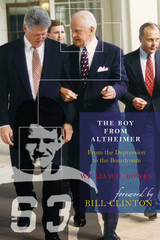 The Boy from Altheimer: From the Depression to the Boardroom
William H. Bowen
University of Arkansas Press, 2006 Bill Bowen’s memoir deals with many of the most important events and years in Arkansas history in the twentieth century. Bowen was born and raised in Altheimer, in the Arkansas Delta, a section of the country that was among the most impoverished in the nation during the Depression. His adolescence was shaped by the Depression, and as a young adult he enlisted in the U.S. Navy during World War II, and served in the U.S. Naval Reserve until 1963. After the war, Bowen became a tax attorney. He used his unique skills to refine the legal aspects of investment banking in Arkansas and became so proficient at it that he moved into the banking field to serve first as president then board chairman of one of Arkansas’s largest banks. Legal and banking experience led naturally to politics, and he became chief of staff for Gov. Bill Clinton. After Clinton announced his candidacy for president, it became Bowen’s task to protect the interests and programs of Governor Clinton in the face of intense pressure from then Lt. Gov. Jim Guy Tucker to become de facto governor. Even in retirement he continued to lead an energetic, productive life as he prepared himself for yet another career, this one in education, serving two years as dean of the University of Arkansas, Little Rock, Law School, which now bears his name.
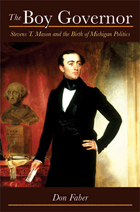 The Boy Governor: Stevens T. Mason and the Birth of Michigan Politics
Don Faber
University of Michigan Press, 2012 In 1831, Stevens T. Mason was named Secretary of the Michigan Territory at the tender age of 19, two years before he could even vote. The youngest presidential appointee in American history, Mason quickly stamped his persona on Michigan life in large letters. After championing the territory's successful push for statehood without congressional authorization, he would defend his new state's border in open defiance of the country's political elite and then orchestrate its expansion through the annexation of the Upper Peninsula---all before his official election as Michigan's first governor at age 24, the youngest chief executive in any state's history. The Boy Governor tells the complete story of this dominant political figure in Michigan's early development. Capturing Mason's youthful idealism and visionary accomplishments, including his advocacy for a strong state university and legislating for the creation of the Soo Locks, this biography renders a vivid portrait of Michigan's first governor---his conflicts, his desires, and his sense of patriotism. This book will appeal to anyone with a love of American history and interest in the many, larger-than-life personalities that battled on the political stage during the Jacksonian era.
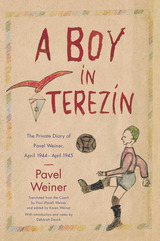 A Boy in Terezín: The Private Diary of Pavel Weiner, April 1944–April 1945
Pavel Weiner
Northwestern University Press, 2011 Written by a Czech Jewish boy, A Boy in Terezín covers a year of Pavel Weiner's life in the Theresienstadt transit camp in the Czech town of Terezín from April 1944 until liberation in April 1945.
The Germans claimed that Theresienstadt was "the town the Führer gave the Jews," and they temporarily transformed it into a Potemkin village for an International Red Cross visit in June 1944, the only Nazi camp opened to outsiders. But the Germans lied. Theresienstadt was a holding pen for Jews to be shipped east to annihilation camps.
While famous and infamous figures and historical events flit across the pages, they form the background for Pavel's life. Assigned to the now-famous Czech boys' home, L417, Pavel served as editor of the magazine Ne?ar. Relationships, sports, the quest for food, and a determination to continue their education dominate the boys' lives. Pavel's father and brother were deported in September 1944; he turned thirteen (the age for his bar mitzvah) in November of that year, and he grew in his ability to express his observations and reflect on them. A Boy in Terezín registers the young boy's insights, hopes, and fears and recounts a passage into maturity during the most horrifying of times.
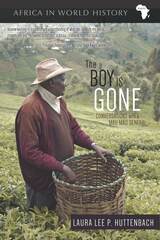 The Boy Is Gone: Conversations with a Mau Mau General
Laura Lee P. Huttenbach
Ohio University Press, 2015 A story with the power to change how people view the last years of colonialism in East Africa, The Boy Is Gone portrays the struggle for Kenyan independence in the words of a freedom fighter whose life spanned the twentieth century’s most dramatic transformations. Born into an impoverished farm family in the Meru Highlands, Japhlet Thambu grew up wearing goatskins and lived to stand before his community dressed for business in a pressed suit, crisp tie, and freshly polished shoes. For most of the last four decades, however, he dressed for work in the primary school classroom and on his lush tea farm. The General, as he came to be called from his leadership of the Mau Mau uprising sixty years ago, narrates his life story in conversation with Laura Lee Huttenbach, a young American who met him while backpacking in Kenya in 2006. A gifted storyteller with a keen appreciation for language and a sense of responsibility as a repository of his people’s history, the General talks of his childhood in the voice of a young boy, his fight against the British in the voice of a soldier, and his long life in the voice of shrewd elder. While his life experiences are his alone, his story adds immeasurably to the long history of decolonization as it played out across Africa, Asia, and the Americas.
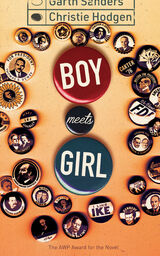 Boy Meets Girl
Christie Hodgen
New Issues Poetry and Prose, 2022 Told in two alternating timelines, this novel follows a friendship over twenty-five years.
Boy Meets Girl is the story of a twenty-five-year friendship between Sammy Browne (young, idealistic, and broke) and Ben Eisenberg (older, jaded, and almost unimaginably rich)—two characters drawn together, and ultimately torn apart, by their differences. This novel tells the story of their relationship over the decades—from youthful flirtation to unrequited love, to long-term friendship that flourishes in middle age, to estrangement and then reunion. The novel unfolds in alternating chapters, toggling back and forth between Ben and Sammy as young people and in middle age, showing everything the characters hoped to become and how things turned out for them. Boy Meets Girl unfolds against the political and social backdrop of the last three decades, with Bill Clinton’s election, the events of September 11, the wars in Iraq and Afghanistan, and even the Trump era providing context and contrast for the personal stories of the main characters.
The Boy Next Door: My Sixty Year Friendship with Bill Clinton
Carolyn Yedell Staley
Parkhurst Brothers, Inc., 2025 The life of President Bill Clinton as seen through the lens of one who was his next-door neighbor during high school and who has maintained a close and uninterrupted friendship ever since, by maintaining a near-constant correspondence, serving roles in both his gubernatorial and presidential administrations, and having shared personal interests, especially music.
The Boy of Battle Ford and the Man
W. S. Blackman
Southern Illinois University Press, 2012 A classic story of a young man’s journey to adulthood, The Boy of Battle Ford covers Blackman’s years growing up in early post-settlement Illinois, where he gave in to temptations such as drinking, gambling, and the lure of prostitutes before joining the army, finding God and becoming a preacher. Blackman, who notes that he is determined to “write facts” in this book, peppers his story with the sordid details of the sinful times of his life as well as with discussions of faith and of struggling to understand his God and his beliefs.
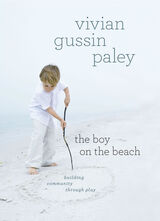 The Boy on the Beach: Building Community through Play
Vivian Gussin Paley
University of Chicago Press, 2010 Four-year-old Eli plays alone at the shore, inventing dramas out of sand and water. He is Builder, Fireman, Protector, and Scout, overcoming waves and conquering monsters. Enter Marianne and doll, Mother and Baby, eager to redefine Eli as a good father and homesteader. Their separate visions intertwine in a search for a common ground on which howling wolves and butterfly sisters can learn to understand and need one another. What can the richly imagined, impressively adaptable fantasy world of these children tell us about childhood, development, education, and even life itself? For fifty years, teacher and writer Vivian Gussin Paley has been exploring the imagery, language, and lore of young children, asking the questions they ask of themselves. In The Boy on the Beach she continues to do so, going deeper into the mystery of play as she follows Eli and Marianne through the kindergarten year, finding more answers and more questions. How does their teacher, Mrs. Olson, manage to honor and utilize the genius of play to create an all-inclusive community in which boys and girls like each other and listen to each other’s stories? Why is Paley’s fellow teacher Yu-ching in Taiwan certain that her children pretend to be kittens in order to become necessary to the group? And why do teachers in London see their childrens’ role-playing as the natural end to loneliness in the school community? Rich with the words of children and teachers themselves, The Boy on the Beach is vintage Paley, a wise and provocative appreciation of the importance of play and enduring curiosity about the nature of childhood and the imagination.
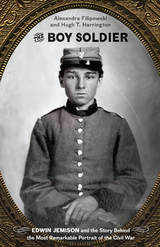 The Boy Soldier: Edwin Jemison and the Story Behind the Most Remarkable Portrait of the Civil War
Alexandra Filipowski and Hugh T. Harrington
Westholme Publishing, 2016 A Haunting Photograph and the Search to Uncover the Life and Family of a Young Man Lost to War
Since its first publication over fifty years ago, the haunting image of Private Edwin F. Jemison has attracted widespread attention from those interested in the Civil War and other wars. His likeness has been compared to that of the Mona Lisa, and it rivals Abraham Lincoln as being one of the Civil War’s most recognized photographs. And yet, his name is not widely known. Some believe that there is something about the mouth that is special, or his hands. Others, perhaps the majority, find his eyes to be powerful and thought provoking. Some wonder if they are looking into the future: Eddie’s own future or the future of all soldiers. Is there a sense of fear or a resignation to fate? He is, foremost, strikingly boyish.
Despite the great interest in the photograph almost nothing has been known of the young man himself, and misinformation about him has circulated since he was properly identified twenty years ago. The authors have spent decades researching the story behind the photograph seeking primary sources for accurate details of Jemison’s life. The result is The Boy Soldier: Edwin Jemison and the Story Behind the Most Remarkable Portrait of the Civil War, the only biography of this young Confederate soldier. We first encounter Eddie as he travels from Louisiana in 1857 to stay with relatives and attend school in Georgia. In the spring of 1861, after Louisiana had seceded from the Union, Eddie enlists in the Confederate army. A little over a week after enlistment, and with minimal training, he is sent to Virginia to fight in the greatest struggle this nation has ever endured. Over 150 years later the intrigue around his photograph is matched by the very peculiar accounts of his death, as well as the controversy of his burial location. The authors examine both issues to complete the story of the young soldier’s life and death.
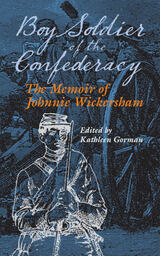 Boy Soldier of the Confederacy: The Memoir of Johnnie Wickersham
Edited by Kathleen Gorman
Southern Illinois University Press, 2006 Johnnie Wickersham was fourteen when he ran away from his Missouri home to fight for the Confederacy. Fifty years after the war, he wrote his memoir at the request of family and friends and distributed it privately in 1915. Boy Soldier of the Confederacy: The Memoir of Johnnie Wickersham offers not only a rare look into the Civil War through the eyes of a child but also a coming-of-age story. Edited by Kathleen Gorman, the volume presents a new introduction and annotations that explain how the war was glorified over time, the harsh realities suppressed in the nation’s collective memory. Gorman describes a man who nostalgically remembers the boy he once was. She maintains that the older Wickersham who put pen to paper decades later likely glorified and embellished the experience, accepting a polished interpretation of his own past. Wickersham recounts that during his first skirmish he was "wild with the ecstasy of it all" and notes that he was "too young to appreciate the danger." The memoir traces his participation in an October 1861 Confederate charge against Springfield, Missouri; his fight at the battle of Pea Ridge in March 1862; his stay at a plantation he calls Fairyland; and the battle of Corinth. The volume details Wickersham’s assignment as an orderly for General Sterling Price, his capture at Vicksburg in 1863, his parole, and later his service with General John Bell Hood for the 1864 fighting around Atlanta. Wickersham also describes the Confederate surrender in New Orleans, the reconciliation of the North and the South, and his own return and reunification with his family. While Gorman’s incisive introduction and annotations allow readers to consider how memories can be affected by the passage of time, Wickersham’s boy-turned-soldier tale offers readers an engaging narrative, detailing the perceptions of a child on the cusp of adulthood during a turbulent period in our nation’s history.
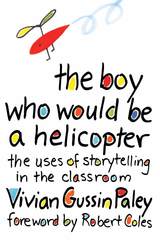 The Boy Who Would Be a Helicopter
Vivian Gussin Paley
Harvard University Press, 1991 How does a teacher begin to appreciate and tap the rich creative resources of the fantasy world of children? What social functions do story playing and storytelling serve in the preschool classroom? And how can the child who is trapped in private fantasies be brought into the richly imaginative social play that surrounds him?
The Boy Who Would Be a Helicopter focuses on the challenge posed by the isolated child to teachers and classmates alike in the unique community of the classroom. It is the dramatic story of Jason—the loner and outsider—and of his ultimate triumph and homecoming into the society of his classmates. As we follow Jason’s struggle, we see that the classroom is indeed the crucible within which the young discover themselves and learn to confront new problems in their daily experience.
Vivian Paley recreates the stage upon which children emerge as natural and ingenious storytellers. She supplements these real-life vignettes with brilliant insights into the teaching process, offering detailed discussions about control, authority, and the misuse of punishment in the preschool classroom. She shows a more effective and natural dynamic of limit-setting that emerges in the control children exert over their own fantasies. And here for the first time the author introduces a triumvirate of teachers (Paley herself and two apprentices) who reflect on the meaning of events unfolding before them.
Boy with Thorn
Rickey Laurentiis
University of Pittsburgh Press, 2015 Winner of the 2016 Levis Reading Prize
Winner of the 2014 Cave Canem Poetry Prize
Finalist for the 2017 Kate Tufts Discovery Award
Rickey Luarentiis is a winner of a 2018 Whiting Writers Prize
In a landscape at once the brutal American South as it is the brutal mind, Boy with Thorn interrogates the genesis of all poetic creation—the imagination itself, questioning what role it plays in both our fascinations with and repulsion from a national history of racial and sexual violence. The personal and political crash into one language here, gothic as it is supple, meditating on visual art and myth, to desire, the practice of lynching and Hurricane Katrina. Always at its center, though, is the poet himself—confessing a double song of pleasure and inevitable pain.
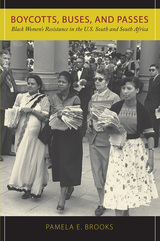 Boycotts, Buses, and Passes: Black Women's Resistance in the U.S. South and South Africa
Pamela E. Brooks
University of Massachusetts Press, 2008 In the mid-1950s, as many developing nations sought independence from colonial rule, black women in the American South and in South Africa launched parallel campaigns to end racial injustice within their respective communities. Just as the dignified obstinacy of Mrs. Rosa Parks sparked the Montgomery bus boycott in 1955, the 20,000 South African women who marched in Pretoria a year later to protest the pass laws signaled a new wave of resistance to the system of apartheid. In both places women who had previously been consigned to subordinate roles brought fresh leadership to the struggle for political freedom and social equality. In this book, Pamela E. Brooks tells their story, documenting the extraordinary achievements of otherwise ordinary women.In comparing the experiences of black women activists in two different parts of the African diaspora, Brooks draws heavily on oral histories that provide clear, and often painful, insight into their backgrounds, their motives, their hopes, and their fears. We learn how black women from all walks of life—domestic and factory workers, householders, teachers, union organizers, churchwomen, clubwomen, rural and urban dwellers alike—had to overcome their class differences and work through the often difficult gender relations within their families and communities. Yet eventually they came together to forge their own political organizations, such as the Women's Political Council and the Federation of South African Women, or joined orga-nizations of women and men, such as the Montgomery Improvement Association and the African National Congress, to advance the common agenda of black liberation.By tracing the dual rise of political consciousness and activism among the black women of the U.S. South and South Africa, Brooks not only illuminates patterns that have long been overlooked but places that shared history within the context of a larger global struggle to bring an end to the vestiges of European colonialism.
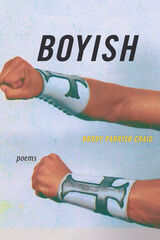 Boyish: Poems
Brody Parrish Craig
Omnidawn, 2021 The poems in Boyish reveal a reconciliation of southern and queer identities, following the poet from a Louisiana Baptist upbringing into transgender liberation. With a sense of rebellion and the revival of the hollered voice, this is an urgent narrative propelled by the necessity of upheaval, imagining what happens when we break through barriers of systemic violence and communal oppression to reconsider what could be. Boyish looks back at the status quo in order to move beyond, into a dream of a nonbinary utopia. A reckoning, this collection brings the reader along for revolution—a deep belief in possibility.
Each page builds tension that then shatters, bringing us into the interior of a story. Brody Parrish Craig invites us to carve out a space and to find ourselves carried over the gravel along the creek. Moving through the subconscious and embodied desire, these poems are rich with formal play, twisting language in dense sonnets. Landscapes of the city’s dystopia meet the queer pastoral, where conservation often means knowing what must be burned down.
 Boys Abducted: The Homoerotics of Empire and Race in Early Modernity
Abdulhamit Arvas
Duke University Press, 2025 In Boys Abducted, Abdulhamit Arvas explores the history of abducted boys in English and Ottoman literary and visual culture to examine the relationships between homoeroticism, race, and empire in the early modern period. The popular literary trope of the abducted beautiful boy—often eroticized as an exotic object of desire—intersects with the historical phenomenon of vulnerable youths who were captured and exchanged within the global traffic in bodies. Arvas offers a queer-historicist analysis of a wide array of Ottoman and English texts and genres ranging from poetry, drama, and travelogue to chronicles, maps, and visual arts. He shows how the boy in these representations crosses boundaries between nations and empires, embodying the tensions and dissonances between the aestheticized eroticism of literary and cultural representations and the violent history of abductions, conversions, and enslavements. In so doing, Arvas presents complex parallels and connections between the two societies, highlighting the circulation of sexual and racial discourses in imperial imaginings to uncover discursive formations and formulations of sexuality, race, and empire.
Boys and Girls: Superheroes in the Doll Corner
Vivian Gussin Paley
University of Chicago Press, 1984 "Paley has a sharp ear for the rhythm and inflections of childhood. Her vignettes give us a revealing glimpse into children's inner lives, and her discussion of her own discomfort with boy's play and approval of that of girls raises and important issue."—Carole Wade, Psychology Today
"I will admit my biases up front: having a three-year old daughter of my own made it impossible for this book to be anything but fun to read. I dare anyone who enjoys children not to enjoy this story about stories, this narrative about narratives."—Jerry Powell, Winterthur Portfolio
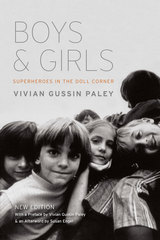 Boys and Girls: Superheroes in the Doll Corner
Vivian Gussin Paley
University of Chicago Press, 2014 The classic work that revealed the complicated world of children's play, and what we can learn from it for education
For more than forty years, Boys and Girls has a classic account of the little-known world that young children create together when they play. Vivian Gussin Paley takes readers inside a kindergarten classroom to show them in detail how boys and girls play—and how, by playing and fantasizing in different ways, they work through complicated notions of gender roles and identity. The children’s own conversations, stories, playacting, and scuffles are interwoven with Paley’s observations and accounts of her vain attempts to alter their stereotyped play. In the decades since the book's original publication, play in kindergarten and early years of school has lost ground to structured teaching and even testing, which makes Paley's book, updated for a new era, more important than ever. To teach kids successfully, we must make space for play.
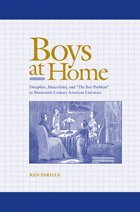 Boys at Home: Discipline, Masculinity, and “The Boy-Problem” in Nineteenth-Century American Literature
Ken Parille
University of Tennessee Press, 2011
In this groundbreaking book, Ken Parille seeks to do for nineteenth-century boys what the past three decades of scholarship have done for girls: show how the complexities of the fiction and educational materials written about them reflect the lives they lived. While most studies of nineteenth-century boyhood have focused on post-Civil War male novelists, Parille explores a broader archive of writings by male and female authors, extending from 1830-1885.
Boys at Home offers a series of arguments about five pedagogical modes: play-adventure, corporal punishment, sympathy, shame, and reading. The first chapter demonstrates that, rather than encouraging boys to escape the bonds of domesticity, scenes of play in boys’ novels reproduce values associated with the home. Chapter 2 argues that debates about corporal punishment are crucial sources for the culture’s ideas about gender difference and pedagogical practice. In chapter 3, “The Medicine of Sympathy,” Parille examines the affective nature of mother-daughter and mother-son bonds, emphasizing the special difficulties that “boy-nature” posed for women. The fourth chapter uses boys’ conduct literature and Louisa May Alcott’s Little Women – the preeminent chronicle of girlhood in the century – to investigate not only Alcott’s fictional representations of shame-centered discipline but also pervasive cultural narratives about what it means to “be a man.” Focusing on works by Lydia Sigourney and Francis Forrester, the final chapter considers arguments about the effects that fictional, historical, and biographical narratives had on a boy’s sense of himself and his masculinity.
Boys at Home is an important contribution to the emerging field of masculinity studies. In addition, this provocative volume brings new insight to the study of childhood, women’s writing, and American culture.
Ken Parille is assistant professor of English at East Carolina University. His articles have appeared in Children’s Literature, Tulsa Studies in Women’s Literature, Papers on Language and Literature, and Children’s Literature Association Quarterly.
Boys From Grover Avenue: Ed Mcbain's 87th Precinct Novels
George N. Dove
University of Wisconsin Press, 1985 Ed McBain is a master of tone. He turns his material just a little off-axis. George Dove’s study of McBain’s imaginary city is both insightful and realistic. He gets at the heart of this major writer of police procedurals by examining the geography, the day-to-day happenings, and literary quality.
The Boys from Possum Grape: A novella
Judson N. Hout
Parkhurst Brothers, Inc., 2013 Set in the days of small, local banks when embarrassing entrepreneurs were the one family in town who bought a new car every year—those cars everyone else called ‘gunboats—and the bad guys came with black hats, this rollicking send-up of stupid criminals who even Barnie Fife could have outwitted makes for belly-laughs while reading and memories that will bring smiles to readers’ faces.
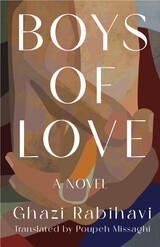 Boys of Love
Ghazi Rabihavi
University of Wisconsin Press, 2024 During a wedding celebration, Jamil, the sole heir of a rich landowner, meets Naji, who sells hay for a living. The novel follows the boys’ escape from their village in the hopes of finding a place where they can be together freely. Even as their love evolves, their strong connection remains, which helps see them through the upheavals of the Islamic Revolution and the Iran–Iraq War.
In Boys of Love, Ghazi Rabihavi offers both a universal story about the ups and downs of all relationships and a clear-eyed portrait of same-sex desire in Iran, where homosexuality remains punishable by death. Banned in Iran, the novel was initially published in Farsi in the UK, then translated into French and shortlisted for the Prix Médicis étranger. Rabihavi avoids both lasciviousness and exoticism in depicting a deep love between male characters living through the Iranian Cultural Revolution. Ultimately, this story challenges preconceived notions about marginalized communities in the Middle East.
The Boys of Winter: Life and Death in the U.S. Ski Troops During the Second World War
Charles J. Sanders
University Press of Colorado, 2005 The Boys of Winter tells the true story of three young American ski champions and their brutal, heroic, and fateful transformation from athletes to infantrymen with the 10th Mountain Division. Charles J. Sanders's fast-paced narrative draws on dozens of interviews and extensive research to trace these boys' lives from childhood to championships and from training at Mount Rainier and in the Colorado Rockies to battling against the Nazis.
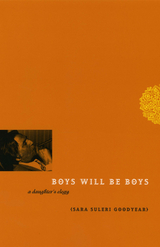 Boys Will Be Boys: A Daughter's Elegy
Sara Suleri Goodyear
University of Chicago Press, 2003 Sara Suleri Goodyear's Meatless Days, recognized now as a classic of postcolonial literature, is a finely wrought memoir of her girlhood in Pakistan after the 1947 partition. Set around the women of her family, Meatless Days intertwines the violent history of Pakistan's independence with Suleri Goodyear's most intimate memories of her grandmother, mother, and sisters. In Boys Will Be Boys, she returns—with the same treasury of language, humor, and passion—to her childhood and early adulthood to pay tribute to her father, the political journalist Z. A. Suleri (known as Pip, for his "patriotic and preposterous" disposition).
Taking its title from that jokingly chosen by her father for his unwritten autobiography, Boys Will Be Boys dips in and out of Suleri Goodyear's upbringing in Pakistan and her life in the United States, moving between public and private history and addressing questions of loss and cultural displacement through a resolutely comic lens. In this rich portrait, Pip emerges as a prodigious figure: an ardent agitator against British rule in the 1930s and 1940s, a founder of the Times of Karachi and the Evening Times, on-and-off editor of the Pakistan Times, for a brief time director of the Pakistan military intelligence service, and a frequently jailed antagonist of successive Pakistani leaders. To the author, though, he was also "preposterous . . . counting himself king of infinite space," a man who imposed outrageously on his children. As Suleri Goodyear chronicles, Pip demanded their loyalty yet banished them easily from his favor; contrary and absurdly unfair, he read their diaries, interfered in their relationships, and believed in a father's inalienable right to oppress his children.
Suleri Goodyear invites the reader into an intimacy shaped equally by history and intensely personal detail, creating an elegant elegy for a man of force and contradiction. And perhaps Pip was not so preposterous after all: "On Judgment Day," he told his daughter, "I will say to God, 'Be merciful, for I have already been judged by my child.'"
Boysgirls
Katie Farris
Tupelo Press, 2019 Farris warns us, “These are not stories one can hand to another and afterward ask: did your soul move like the peristalsis inside your gut?” Instead of capitalizing on the satisfying and familiar conventions of narrative, she uses the unclassifiable text, the monstrous text, and unruly prose to explore the ways language, as we know it, limits what is possible in our thinking about sexuality. For Farris, genre – with its established conventions, its repertoire of restrictions – and gender are inexorably linked. Indeed, she shows us that our most familiar categories of identity are embedded within the very texture of language itself. She reveals form, genre, and even grammar as the foundation of the social order, that alterity which speaks through us, and at the same time, defines us.
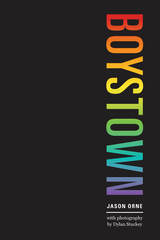 Boystown: Sex and Community in Chicago
Jason Orne
University of Chicago Press, 2017 From neighborhoods as large as Chelsea or the Castro, to locales limited to a single club, like The Shamrock in Madison or Sidewinders in Albuquerque, gay areas are becoming normal. Straight people flood in. Gay people flee out. Scholars call this transformation assimilation, and some argue that we—gay and straight alike—are becoming “post-gay.” Jason Orne argues that rather than post-gay, America is becoming “post-queer,” losing the radical lessons of sex.
In Boystown, Orne takes readers on a detailed, lively journey through Chicago’s Boystown, which serves as a model for gayborhoods around the country. The neighborhood, he argues, has become an entertainment district—a gay Disneyland—where people get lost in the magic of the night and where straight white women can “go on safari.” In their original form, though, gayborhoods like this one don’t celebrate differences; they create them. By fostering a space outside the mainstream, gay spaces allow people to develop an alternative culture—a queer culture that celebrates sex.
Orne spent three years doing fieldwork in Boystown, searching for ways to ask new questions about the connective power of sex and about what it means to be not just gay, but queer. The result is the striking Boystown, illustrated throughout with street photography by Dylan Stuckey. In the dark backrooms of raunchy clubs where bachelorettes wouldn’t dare tread, people are hooking up and forging “naked intimacy.” Orne is your tour guide to the real Boystown, then, where sex functions as a vital center and an antidote to assimilation.
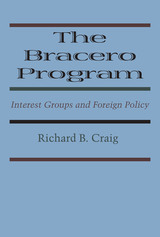 The Bracero Program: Interest Groups and Foreign Policy
By Richard B. Craig
University of Texas Press, 1971 Long before “Cesar Chávez” and “Chicano” became commonly known, the word “bracero” had established itself in the language of American politics. The Mexican Farm Labor Program—or bracero program as it came to be known—was from its inception in 1942 a highly controversial issue. At international, national, and subnational levels, it remained the focal point of an intense interest-group struggle. This struggle and its group combatants provide the central concern of this study. In the early 1940’s agribusiness interests had sought to contract Mexican laborers (“braceros”) for work on United States farms. With the entry of the United States into World War II, legislation was passed for contracting braceros on a large scale. What was originally a wartime measure soon became an institution. During twenty-two years, 4.2 million braceros were contracted. The United States, at the insistence of the Mexican government, became a partner in the program, ensuring that the braceros were provided housing, set wages, and other benefits. The program was, however, detrimental to one group in the United States: the native farmworker. Not only was the bracero provided guarantees that the native could not demand, but the bracero also got the native’s job. During the late forties and fifties, organized labor gathered its forces in Congress to oppose the program. Finally, an administration favorable to the native farmworker threw its support behind the native laborer, and through the Department of labor measures were passed that made it less attractive to hire foreign labor. In the end, the anti-bracero forces won out in Congress and defeated extension of the Mexican Farm Labor program. At the same time, the United States government, by setting the working standards for foreign workers, brought about an improvement in the working conditions and wages of native farm laborers. Besides the conflicts between domestic interests, Craig examines the international conflicts and issues involved, as well as the international agreements that were the basis of bracero contracting. He discusses with perception the program’s immediate and long-range effects on Mexico. His study analyzes and clarifies one of the most controversial domestic and international programs of the twentieth century.
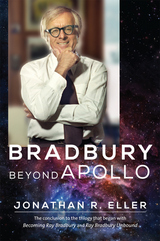 Bradbury Beyond Apollo
Jonathan R. Eller
University of Illinois Press, 2020 Celebrated storyteller, cultural commentator, friend of astronauts, prophet of the Space Age—by the end of the 1960s, Ray Bradbury had attained a level of fame and success rarely achieved by authors, let alone authors of science fiction and fantasy. He had also embarked on a phase of his career that found him exploring new creative outlets while reinterpreting his classic tales for generations of new fans. Drawing on numerous interviews with Bradbury and privileged access to personal papers and private collections, Jonathan R. Eller examines the often-overlooked second half of Bradbury's working life. As Bradbury's dreams took him into a wider range of nonfiction writing and public lectures, the diminishing time that remained for creative pursuits went toward Hollywood productions like the award-winning series Ray Bradbury Theater. Bradbury developed the Spaceship Earth narration at Disney's EPCOT Center; appeared everywhere from public television to NASA events to comic conventions; published poetry; and mined past triumphs for stage productions that enjoyed mixed success. Distracted from storytelling as he became more famous, Bradbury nonetheless published innovative experiments in autobiography masked as detective novels, the well-received fantasy The Halloween Tree and the masterful time travel story "The Toynbee Convector." Yet his embrace of celebrity was often at odds with his passion for writing, and the resulting tension continuously pulled at his sense of self. The revelatory conclusion to the acclaimed three-part biography, Bradbury Beyond Apollo tells the story of an inexhaustible creative force seeking new frontiers.
Braddock At The Monongahela
Paul E. Kopperman
University of Pittsburgh Press, 2003
On July 9, 1755, an army of British and American soldiers commanded by Major General Edward Braddock marched toward a major western outpost held by the French, confident of an easy victory. Suddenly, they were attacked by a much smaller force of French and Indian fighters-Braddock's army was destroyed, its commander fatally wounded, and supplies and secret papers were lost to the enemy. Paul E. Kopperman has used all of the known eyewitness reports of Braddock's defeat-some never before printed-to present an exciting critical account of this definitive battle in the French and Indian War. Braddock at the Monongahela is a synthesis of in-depth analysis of primary source materials, thoughtful evaluation of previous studies on the subject, and Kopperman's own persuasive interpretation.
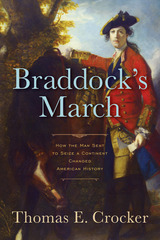 Braddock's March: How the Man Sent to Seize a Continent Changed American History
Thomas E. Crocker
Westholme Publishing, 2009 Winner of the 2011 New York Society of Colonial Wars Distinguished Book Award
“The strength of this book lies in Crocker’s presentation of the battle and the complicated logistics involved.”—Times Literary Supplement “Braddock’s March is arguably the first truly comprehensive history devoted exclusively to the calamitous march that remade North America. . . . Braddock’s story is superb history.”—Weekly Standard “Drawing on original sources, Crocker grittily reconstructs the advance of Edward Braddock’s army on Fort Duquesne. . . . Attentive to detail, Crocker will engage colonial-history readers in this well illustrated book.”—Booklist “Both Braddock’s epic march and subsequent destruction are brought to life by Thomas E. Crocker in Braddock’s March, his impeccably researched account of an important but largely forgotten chapter in American history. . . . It all adds up to a stirring tale.”—Washington Times “Before we parted, the General told me he should never see me more; for he was going with a handful of men to conquer whole nations; and to do this they must cut their way through unknown woods. He produced a map of the country, saying at the same time, ‘Dear Pop, we are sent like sacrifices to the altar.’” - George Anne Bellamy on General Edward Braddock’s departure In January 1755, Major General Edward Braddock was sent by Great Britain on a mission to drive France once and for all from the New World. Accompanied by the largest armed expeditionary force ever sent to North America, Braddock’s primary target was the Forks of the Ohio, where he planned to seize Fort Duquesne (at present-day Pittsburgh, Pennsylvania), and then march north into Canada. After landing in Alexandria, Virginia, and organizing his troops and supply chain, Braddock and his expedition began its nearly 250-mile trek, heroically cutting through uncharted wilderness, fording rivers, and scaling the Appalachian mountains, all while hauling baggage and heavy artillery. Braddock was joined on this epic mission by a young Virginia colonel, George Washington, and others who would later play major roles in the American Revolution, including Horatio Gates, Thomas Gage, and Charles Lee; among those driving the expedition’s wagons were Daniel Boone and Daniel Morgan. Having withstood the harsh frontier and finally marching upon Fort Duquesne on a hot July morning, Braddock’s exhausted column was ambushed by a combined French and Indian force. Over two-thirds of Braddock’s British and colonial troops were killed or wounded, including Braddock himself, struck by a bullet in the chest while attempting to rally his disoriented troops. George Washington miraculously escaped harm despite four bullet holes through his clothing. With this battle, North America became the greatest stake in the global war between France and Great Britain. In Braddock’s March: How the Man Sent to Seize a Continent Changed American History, Thomas E. Crocker tells the riveting story of one of the most important events in colonial America. Not only did Braddock’s expedition have a profound impact on American political and military developments, this fateful march laid the foundation for the “National Pike,” the major road for westward expansion, launched the career of George Washington, and sowed the seeds of dissent between England and its colonies that would ultimately lead to the American Revolution.
Brahmanical Theories of the Gift: A Critical Edition and Annotated Translation of the Dānakānda of the Krtyakalpataru
David Brick
Harvard University Press This volume constitutes the first critical edition and translation into any modern language of a dānanibandha, a classical Hindu legal digest devoted to the culturally and religiously important topic of gifting. Specifically, it is a critical edition—based upon all identifiable manuscripts—and complete, annotated translation of the Dānakānda (“Book on Gifting”), the fifth section of the encyclopedic Krtyakalpataru (c. 1114–1154) of Laksmīdhara and the earliest extant dānanibandha. David Brick has included an extensive historical introduction to the text and its subject matter.
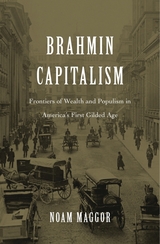 Brahmin Capitalism: Frontiers of Wealth and Populism in America’s First Gilded Age
Noam Maggor
Harvard University Press, 2017 Tracking the movement of finance capital toward far-flung investment frontiers, Noam Maggor reconceives the emergence of modern capitalism in the United States. Brahmin Capitalism reveals the decisive role of established wealth in the transformation of the American economy in the decades after the Civil War, leading the way to the nationally integrated corporate capitalism of the twentieth century.
Maggor’s provocative history of the Gilded Age explores how the moneyed elite in Boston—the quintessential East Coast establishment—leveraged their wealth to forge transcontinental networks of commodities, labor, and transportation. With the decline of cotton-based textile manufacturing in New England and the abolition of slavery, these gentleman bankers traveled far and wide in search of new business opportunities and found them in the mines, railroads, and industries of the Great West. Their investments spawned new political and social conflict, in both the urbanizing East and the expanding West. In contests that had lasting implications for wealth, government, and inequality, financial power collided with more democratic visions of economic progress.
Rather than being driven inexorably by technologies like the railroad and telegraph, the new capitalist geography was a grand and highly contentious undertaking, Maggor shows, one that proved pivotal for the rise of the United States as the world’s leading industrial nation.
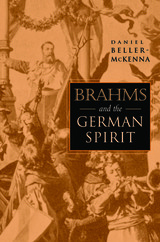 Brahms and the German Spirit
Daniel Beller-McKenna
Harvard University Press, 2004 The music of Johannes Brahms is deeply colored, Daniel Beller-McKenna shows, by nineteenth-century German nationalism and by Lutheran religion. Focusing on the composer's choral works, the author offers new insight on the cultural grounding for Brahms's music.
Music historians have been reluctant to address Brahms's Germanness, wary perhaps of fascist implications. Beller-McKenna counters this tendency; by giving an account of the intertwining of nationalism, politics, and religion that underlies major works, he restores Brahms to his place in nineteenth-century German culture. The author explores Brahms's interest in the folk element in old church music; the intense national pride expressed in works such as the Triumphlied; the ways Luther's Bible and Lutheranism are reflected in Brahms's music; and the composer's ideas about nation building. The final chapter looks at Brahms's nationalistic image as employed by the National Socialists, 1933-1945, and as witnessed earlier in the century (including the complication of rumors that Brahms was Jewish).
In comparison to the overtly nationalist element in Wagner's music, the German elements in Brahms's style have been easy to overlook. This nuanced study uncovers those nationalistic elements, enriching our understanding both of Brahms's art and of German culture.
A Braided Heart: Essays on Writing and Form
Brenda Miller
University of Michigan Press, 2021 A Braided Heart provides a friendly, personal, and smart guide to the writing life. It also offers clear and original instruction on craft elements at the forefront of today’s emerging forms in creative nonfiction: from the short-short, to the braided form, to the hermit crab essay. An acknowledged expert in these forms, Brenda Miller gives writers practical advice on how to sustain and invigorate their writing practice, while also encouraging readers to explore their own writing lives.
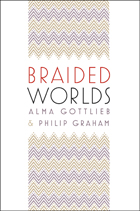 Braided Worlds
Alma Gottlieb and Philip Graham
University of Chicago Press, 2012 In a compelling mix of literary narrative and ethnography, anthropologist Alma Gottlieb and writer Philip Graham continue the long journey of cultural engagement with the Beng people of Côte d’Ivoire that they first recounted in their award-winning memoir Parallel Worlds. Their commitment over the span of several decades has lent them a rare insight. Braiding their own stories with those of the villagers of Asagbé and Kosangbé, Gottlieb and Graham take turns recounting a host of unexpected dramas with these West African villages, prompting serious questions about the fraught nature of cultural contact. Through events such as a religious leader’s declaration that the authors’ six-year-old son, Nathaniel, is the reincarnation of a revered ancestor, or Graham’s late father being accepted into the Beng afterlife, or the increasing, sometimes dangerous madness of a villager, the authors are forced to reconcile their anthropological and literary gaze with the deepest parts of their personal lives. Along with these intimate dramas, they follow the Beng from times of peace through the times of tragedy that led to Côte d’Ivoire’s recent civil conflicts. From these and many other interweaving narratives—and with the combined strengths of an anthropologist and a literary writer—Braided Worlds examines the impact of postcolonialism, race, and global inequity at the same time that it chronicles a living, breathing village community where two very different worlds meet.
 Brain Arousal and Information Theory: Neural and Genetic Mechanisms
Donald Pfaff
Harvard University Press, 2006 Arousal is fundamental to all cognition. It is intuitively obvious, absolutely necessary, but what exactly is it? In Brain Arousal and Information Theory, Donald Pfaff presents a daring perspective on this long-standing puzzle. Pfaff argues that, beneath our mental functions and emotional dispositions, a primitive neuronal system governs arousal. Employing the simple but powerful framework of information theory, Pfaff revolutionizes our understanding of arousal systems in the brain.
Starting with a review of the neuroanatomical, neurophysiological, and neurochemical components of arousal, Pfaff asks us to look at the gene networks and neural pathways underlying the brain’s arousal systems much as a design engineer would contemplate information systems. This allows Pfaff to postulate that there is a bilaterally symmetric, bipolar system universal among mammals that readies the animal or the human being to respond to stimuli, initiate voluntary locomotion, and react to emotional challenges. Applying his hypothesis to heightened states of arousal—sex and fear—Pfaff shows us how his theory opens new scientific approaches to understanding the structure of brain arousal.
A major synthesis of disparate data by a preeminent neuroscientist, Brain Arousal and Information Theory challenges current thinking about cognition and behavior. Whether you subscribe to Pfaff’s theory or not, this book will stimulate debate about the nature of arousal itself.
Brain Camp
Charles Harper Webb
University of Pittsburgh Press, 2015 Powered by a fierce, compassionate intelligence, Brain Camp explores with clarity and vividness a wide spectrum of emotions—love to hate, tenderness to brutality—all from a perspective both universal yet distinctly Webb's. Metaphors of startling aptness and originality, a voice at once endearing and provocative, high musicality, propulsive energy, wild imaginative leaps, as well as a mastery of diction from lyricism to street-speak, create a reading experience of the first order. These poems go down easy, but pack a wallop. As Robert Frost said poetry should do, Brain Camp "begins in delight and ends in wisdom."
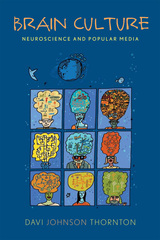 Brain Culture: Neuroscience and Popular Media
Davi Johnson Thornton
Rutgers University Press, 2011 Brain Culture investigates the American obsession with the health of the brain. The brain has become more than a bodily organ, acquiring a near-mystical status. The message that this organ is the key to everything is everywhere--in self-help books that tell us to work on our brains to achieve happiness and enlightenment, in drug advertisements that promise a few tweaks to our brain chemistry will cure us of our discontents, and in politicians' speeches that tell us that our brains are national resources essential to our economic prosperity. Davi Johnson Thornton looks at these familiar messages, tracing the ways that brain science and colorful brain images produced by novel scientific technologies are taken up and distributed in popular media. She tracks the impact of the message that, "you are your brain" across multiple contemporary contexts, analyzing its influence on child development, family life, education, and public policy. Brain Culture shows that our fixation on the brain is not simply a reaction to scientific progress, but a cultural phenomenon deeply tied to social and political values of individualism and limitless achievement.
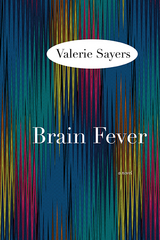 Brain Fever: A Novel
Valerie Sayers
Northwestern University Press, 2013 Something old and something new mark Sayers's fifth novel (after The Distance Between Us), which will, sadly, leave most readers blue. Here, Sayers takes leave of Due East, S.C., the setting of her previous novels, but revisits schizophrenic Tim Rooney, the aging philosophy professor of How I Got Him Back. When narrator Rooney's 27-year-old girlfriend, Baptist-turned-atheist Mary Faith Rapple, insists on marrying him in a Catholic church, Rooney panics and heads for New York City in search of his first wife. Driving his father's car and fighting for sanity, the fugitive encounters Angela, a blonde hitchhiker fleeing her own date at the altar. With Rooney in the throes of a nervous breakdown, the pair wind up in an upscale Soho loft, house guests of artsy S.C. expatriates. As he roams the city in a sometimes hallucinatory state, Rooney meets a former student, finds his ex-wife and suffers a succession of burlesque sexual failures. Meanwhile, at the insistence of Due East's aging Catholic priest, Mary Faith heads north to save her lover. Sayers's prose is bracing as always here.
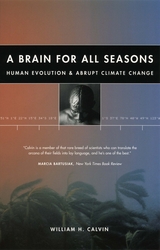 A Brain for All Seasons: Human Evolution and Abrupt Climate Change
William H. Calvin
University of Chicago Press, 2002 One of the most shocking realizations of all time has slowly been dawning on us: the earth's climate does great flip-flops every few thousand years, and with breathtaking speed. In just a few years, the climate suddenly cools worldwide. With only half the rainfall, severe dust storms whirl across vast areas. Lightning strikes ignite giant forest fires. For most mammals, including our ancestors, populations crash.
Our ancestors lived through hundreds of such abrupt episodes since the more gradual Ice Ages began two and a half million years ago—but abrupt cooling produced a population bottleneck each time, one that eliminated most of their relatives. We are the improbable descendants of those who survived—and later thrived.
William H. Calvin's marvelous A Brain for All Seasons argues that such cycles of cool, crash, and burn powered the pump for the enormous increase in brain size and complexity in human beings. Driven by the imperative to adapt within a generation to "whiplash" climate changes where only grass did well for a while, our ancestors learned to cooperate and innovate in hunting large grazing animals.
Calvin's book is structured as a travelogue that takes us around the globe and back in time. Beginning at Darwin's home in England, Calvin sits under an oak tree and muses on what controls the speed of evolutionary "progress." The Kalahari desert and the Sterkfontein caves in South Africa serve as the backdrop for a discussion of our ancestors' changing diets. A drought-shrunken lake in Kenya shows how grassy mudflats become great magnets for grazing animals. And in Copenhagen, we learn what ice cores have told us about abrupt jumps in past climates.
Perhaps the most dramatic discovery of all, though, awaits us as we fly with Calvin over the Gulf Stream and Greenland: global warming caused by human-made pollution could paradoxically trigger another sudden episode of global cooling. Because of the accumulation of greenhouse gases in the atmosphere, the oceanic "conveyor belt" that sends warmer waters into the North Atlantic could abruptly shut down. If that happens again, much of the Earth could be plunged into a deep chill within a few years. Europe would become as cold and dry as Siberia. Agriculture could not adapt quickly enough to avoid worldwide famines and wars over the dwindling food supplies—a crash from which it would take us many centuries to recover.
With this warning, Calvin connects us directly to evolution and the surprises it holds. Highly illustrated, conversational, and learned, A Brain for All Seasons is a fascinating view of where we came from, and where we're going.
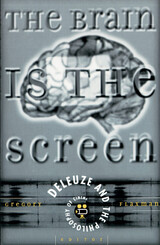 Brain Is The Screen: Deleuze and the Philosophy of Cinema
Gregory Flaxman
University of Minnesota Press, 2000 The first broad-ranging collection on Deleuze’s essential works on cinema. In the nearly twenty years since their publication, Gilles Deleuze’s books about cinema have proven as daunting as they are enticing—a new aesthetics of film, one equally at home with Henri Bergson and Wim Wenders, Friedrich Nietzsche and Orson Welles, that also takes its place in the philosopher’s immense and difficult oeuvre. With this collection, the first to focus solely and extensively on Deleuze’s cinematic work, the nature and reach of that work finally become clear. Composed of a substantial introduction, twelve original essays produced for this volume, and a new English translation of a personal, intriguing, and little-known interview with Deleuze on his cinema books, The Brain Is the Screen is a sustained engagement with Deleuze’s cinematic philosophy that leads to a new view of the larger confrontation of philosophy with cinematic images.Contributors: Éric Alliez, U of Vienna; Dudley Andrew, U of Iowa; Peter Canning; Tom Conley, Harvard U; András Bálint Kovács, ELTE U, Budapest; Gregg Lambert, Syracuse U; Laura U. Marks, Carleton U; Jean-Clet Martin, Collége International de Philosophie, Paris; Angelo Restivo; Martin Schwab, U of Michigan; François Zourabichvili, Collége International de Philosophie.Gregory Flaxman is a doctoral student in the Program of Comparative Literature and Literary Theory at the University of Pennsylvania.
 The Brain Machine: The Development of Neurophysiological Thought
Marc Jeannerod
Harvard University Press, 1985 Movement has long been considered the most obvious expression of brain activity and its correlative, mental activity. By studying movement, the neurophysiologist hopes to penetrate the interior of the living being and uncover the hidden source of action and its clues to the origin of life. We presume a role for the brain in movement—but should the brain be viewed simply as a machine that reacts to diverse stimuli, or is it an intelligent machine that organizes and controls not only itself but also the world around it?
Drawing upon the many disciplines that have contributed to brain research—anatomy, physiology, clinical neurology, psychology, psychiatry—Marc Jeannerod traces three centuries of ideas about movement and the brain. His critique of neural science takes into account the work of thinkers ranging from Descartes and Willis to Held, Hubel and Wiesel, Piaget and Chomsky. In his historical survey Jeannerod sees parallels between the influential neurological theories and dominating philosophical questions of the time: What is the nature of the soul? How does knowledge originate? What is the relation between the living organism and its milieu? Jeannerod's elegant arguments demonstrate that the “brain-movement problem” is the essential paradigm of the “brain-mind problem.” He advances a view of the neural organization of movement that has far-reaching implications for psychology and all neural sciences.
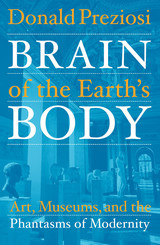 Brain of the Earth’s Body: Art, Museums, and the Phantasms of Modernity
Donald Preziosi
University of Minnesota Press, 2003 A major scholar considers the role of the museum in art history.
What begins as a meditation on "the museum" by one of the world's leading art historians becomes, in this book, a far-reaching critical examination of how art history and museums have guided and controlled not only the way we look at art but the ways in which we understand modernity itself.
Originally delivered as the 2001 Slade Lectures in the Fine Arts at Oxford University, the book makes its deeply complex argument remarkably accessible and powerfully clear. Concentrating on a period from the beginning of the nineteenth century to the beginning of the twentieth, Donald Preziosi presents case studies of major institutions that, he argues, have defined--and are still defining--the possible limits of museological and art historical theory and practice. These include Sir John Soane's Museum in London, preserved in its 1837 state; the Crystal Palace Exhibition of 1851; and four museums founded by Europeans in Egypt in the late nineteenth century, which divided up that country's history into "ethnically marked" aesthetic hierarchies and genealogies that accorded with Europe's construction of itself as the present of the world's past, and the "brain of the earth's body."
Through this epistemological and institutional archaeology, Preziosi unearths the outlines of the more radical Enlightenment project that academic art history, professional museology, and art criticism have rendered marginal or invisible. Finally, he sketches a new theory about art, artifice, and visual signification in the cracks and around the margins of the "secular theologisms" of the globalized imperial capital called modernity.
Addressed equally to the theoretical and philosophical foundations of art history, museology, history, and anthropology, this book goes to the heart of recent debates about race, ethnicity, nationality, colonialism, and multiculturalisms-and to the very foundations of modernity and modern modes of knowledge production.
Donald Preziosi is professor of art history at the University of California, Los Angeles, and research associate in art history and visual culture at Oxford University. He is the author and editor of numerous books, including The Art of Art History (1998).
 Brain Policy: How the New Neuroscience Will Change Our Lives and Our Politics
Robert H. Blank
Georgetown University Press, 1999 Neural grafting, virtual reality, gene therapy, psychotropic drugs As startling new treatments emerge for disorders of the brain, new concerns are arising along with them. In the first book to examine the implications of the full range of revolutionary interventions now possible in the human brain, Robert H. Blank warns that while these new techniques may promise medical wonders, they also raise profound political questions. Our rapidly unfolding knowledge about the brain and the accompanying applications have three main policy dimensions: funding research initiatives, controlling individual use, and assessing social consequences. But underlying these aspects, Blank argues, are more disturbing issues that pose fundamental challenges to our conceptions of equality, autonomy, freedom, responsibility, and human nature itself. Brain Policy makes the key facts from the technical literature readily accessible to social scientists and general readers and points out the implications for our society. Blank first explains the structure and function of the nervous system and current theories of brain operation; he then assesses the uses and potential abuses of various intervention techniques. He identifies the public policy issues raised by discoveries in the neurosciences and calls for intensified scrutiny of the advantages and disadvantages of new technologies. Warning that the risks and dangers of the dramatic developments in neuroscience are potentially large, Blank offers a means of understanding these scientific advances and the philosophical and political issues they entail. This book will be of interest to social scientists, policy analysts, policy makers, bioethicists, scientists who want to see the bigger picture, and the informed reader with an interest in the implications of neuroscience for themselves and society.
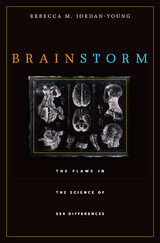 Brain Storm: The Flaws in the Science of Sex Differences
Rebecca M. Jordan-Young
Harvard University Press, 2011 Female and male brains are different, thanks to hormones coursing through the brain before birth. That’s taught as fact in psychology textbooks, academic journals, and bestselling books. And these hardwired differences explain everything from sexual orientation to gender identity, to why there aren’t more women physicists or more stay-at-home dads.
In this compelling book, Rebecca Jordan-Young takes on the evidence that sex differences are hardwired into the brain. Analyzing virtually all published research that supports the claims of “human brain organization theory,” Jordan-Young reveals how often these studies fail the standards of science. Even if careful researchers point out the limits of their own studies, other researchers and journalists can easily ignore them because brain organization theory just sounds so right. But if a series of methodological weaknesses, questionable assumptions, inconsistent definitions, and enormous gaps between ambiguous findings and grand conclusions have accumulated through the years, then science isn’t scientific at all.
Elegantly written, this book argues passionately that the analysis of gender differences deserves far more rigorous, biologically sophisticated science. “The evidence for hormonal sex differentiation of the human brain better resembles a hodge-podge pile than a solid structure…Once we have cleared the rubble, we can begin to build newer, more scientific stories about human development.”
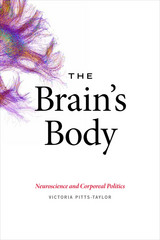 The Brain's Body: Neuroscience and Corporeal Politics
Victoria Pitts-Taylor
Duke University Press, 2016 In The Brain's Body Victoria Pitts-Taylor brings feminist and critical theory to bear on new development in neuroscience to demonstrate how power and inequality are materially and symbolically entangled with neurobiological bodies. Pitts-Taylor is interested in how the brain interacts with and is impacted by social structures, especially in regard to race, class, gender, sexuality, and disability, as well as how those social structures shape neuroscientific knowledge. Pointing out that some brain scientists have not fully abandoned reductionist or determinist explanations of neurobiology, Pitts-Taylor moves beyond debates over nature and nurture to address the politics of plastic, biosocial brains. She highlights the potential of research into poverty's effects on the brain to reinforce certain notions of poor subjects and to justify particular forms of governance, while her queer critique of kinship research demonstrates the limitations of hypotheses based on heteronormative assumptions. In her exploration of the embodied mind and the "embrained" body, Pitts-Taylor highlights the inextricability of nature and culture and shows why using feminist and queer thought is essential to understanding the biosociality of the brain.
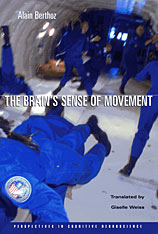 The Brain’s Sense of Movement
Alain Berthoz
Harvard University Press, 2000 The neuroscientist Alain Berthoz experimented on Russian astronauts in space to answer these questions: How does weightlessness affect motion? How are motion and three-dimensional space perceived? In this erudite and witty book, Berthoz describes how human beings on earth perceive and control bodily movement. Reviewing a wealth of research in neurophysiology and experimental psychology, he argues for a rethinking of the traditional separation between action and perception, and for the division of perception into five senses.
In Berthoz’s view, perception and cognition are inherently predictive, functioning to allow us to anticipate the consequences of current or potential actions. The brain acts like a simulator that is constantly inventing models to project onto the changing world, models that are corrected by steady, minute feedback from the world. We move in the direction we are looking, anticipate the trajectory of a falling ball, recover when we stumble, and continually update our own physical position, all thanks to this sense of movement.
This interpretation of perception and action allows Berthoz, in The Brain’s Sense of Movement, to focus on psychological phenomena largely ignored in standard texts: proprioception and kinaesthesis, the mechanisms that maintain balance and coordinate actions, and basic perceptual and memory processes involved in navigation.
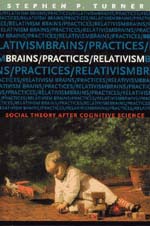 Brains/Practices/Relativism: Social Theory after Cognitive Science
Stephen Turner
University of Chicago Press, 2002 Brains/Practices/Relativism presents the first major rethinking of social theory in light of cognitive science. Stephen P. Turner focuses especially on connectionism, which views learning as a process of adaptation to input that, in turn, leads to patterns of response distinct to each individual. This means that there is no common "server" from which people download shared frameworks that enable them to cooperate or communicate. Therefore, argues Turner, "practices"—in the sense that the term is widely used in the social sciences and humanities—is a myth, and so are the "cultures" that are central to anthropological and sociological thought.
In a series of tightly argued essays, Turner traces out the implications that discarding the notion of shared frameworks has for relativism, social constructionism, normativity, and a number of other concepts. He suggests ways in which these ideas might be reformulated more productively, in part through extended critiques of the work of scholars such as Ian Hacking, Andrew Pickering, Pierre Bourdieu, Quentin Skinner, Robert Brandom, Clifford Geertz, and Edward Shils.
 Brainstorming: The Science and Politics of Opiate Research
Solomon Snyder
Harvard University Press, 1989 The discovery of how opiates such as morphine and heroin relieve pain and produce euphoria is one of the most dramatic tales of modern science. It begins in 1971 when, at the height of the undeclared war in Vietnam, Richard Nixon officially announced a war on drugs. Heroin addiction--no longer confined to urban ghettos--was causing bad public relations for the White House. The specter of young American soldiers demoralized, drugged, and committing atrocities was not the image President Nixon wished to convey as he argued for further bombings of North Vietnam.
In this book Solomon Snyder describes the political maneuverings and scientific sleuthing that led him and Candace Pert, then a graduate student in his lab, to a critical breakthrough in the effort to understand addiction. Their discovery--the so-called opiate receptor--is a structure on the surface of certain nerve cells that attracts opiates. Heroin or morphine molecules fit into opiate receptors much as a key fits into the ignition switch of a car--thus turning on the engine of the cell. Snyder and his students were able to show that nerve cells which possess opiate receptors are found in precisely those parts of the brain that control emotion and pain.
Dr. Snyder describes the friendly yet intense competition from other researchers to expand upon this initial discovery. From the work of two Scottish investigators, Hans Kosterlitz and John Hughes, neuroscientists now know not only where opiate receptors are found in the brain but also why they are there: to serve as binding sites for an opiate-like substance produced by the brain itself--the brain's own morphine. This substance, called enkephalin, regulates pain, mood, and a host of other physiological functions.
From this very human chronicle of scientific battles in the ongoing war against pain and addiction, we gain an appreciation of the extraordinary intellectual processes of an eminent scientist. But Dr. Snyder's story of scientific brainstorming also affords us rare glimpses into the fruitful, sometimes frustrating, relationships among scientists which enrich and complicate creative work. We are reminded of the delicate political alliances that are forged at every level of organization, from the lab bench to the Oval Office, as the scientific community attempts to fit its needs to those of the larger society.
 Braking the Special Interests: Trucking Deregulation and the Politics of Policy Reform
Dorothy Robyn
University of Chicago Press, 1987 In 1980 Congress voted to eliminate the federal system of protective regulation over the powerful trucking industry, despite fierce opposition. This upset marked a rare example in American politics of diffuse public interests winning out over powerful economic lobbies. In Braking the Special Interests Dorothy Robyn draws upon firsthand observations of formal proceedings and behind-the-scenes maneuverings to illuminate the role of political strategy in the landmark trucking battle.
Robyn focuses her analysis on four elements of strategy responsible for the deregulator's victory—elements that are essential, she argues, to any successful policy battle against entrenched special interests: the effective use of economic data and analysis to make a strong case for the merits of reform; the formation and management of a diverse lobbying coalition of firms and interest groups; presidential bargaining to gain political leverage; and transition schemes to reduce uncertainty and cushion the blow to losers.
Drawing on political and economic theory, Braking the Special Interests is an immensely rich and readable study of political strategy and skill, with general insights relevant to current political battles surrounding trade, agriculture, and tax policies. Robyn's interdisciplinary work will be of great value to scholars and practitioners of politics, economics, and public policy.
 Bramble
Susan Stewart
University of Chicago Press This seventh collection by acclaimed poet Susan Stewart offers a meditation on difficulty and the powers of nature.
In the Biblical book of Judges, the bramble is a figure of destructive leadership, thwarting the lives of trees. In ballads and fairy tales, roses grow “‘round the briar” in tragic contrast to heroines who are enveloped by the thorns. One of the oldest English words and an even older symbol, “bramble” reminds us of the entangled and unending struggle that comes with living in time and searching beyond appearances. The rough thicket presents impediments, yet it also bears fruit and delicate flowers.
With Bramble, Susan Stewart has composed a book of many forms, including satires, elegies, meditations, and songs. Bramble is also an exploration of the act of making such forms. The book’s three sections—“Mirror,” “Briar,” and “Channel”—link lyric time to our lives as they are situated in history and nature. Reflecting upon illness, grief, and change, the poems follow the progress of day and night, the movement of the seasons, and the path of water from springs to the sea.
Branches of Heaven: A History of the Imperial Clan of Sung China
John W. Chaffee
Harvard University Press, 1999 By the end of the Sung dynasty (960-1279), known descendants of the three Chao brothers who had founded the dynasty numbered over 20,000. Unlike the rulers of many other Chinese dynasties, however, the Sung emperors were not plagued by challenges to their rule from their relatives. How the Sung created a social and political asset in the imperial clan while neutralizing it as a potential threat is the story of this book. In this, the first full-length study of the imperial clan as an institution, John Chaffee analyzes its history, its political role, and the lifestyle of its members, focussing on their residence patterns, marriages, and occupations.
 Branching Out, Digging In: Environmental Advocacy and Agenda Setting
Sarah B. Pralle
Georgetown University Press, 2006 Sarah B. Pralle takes an in-depth look at why some environmental conflicts expand to attract a lot of attention and participation, while others generate little interest or action. Branching Out, Digging In examines the expansion and containment of political conflict around forest policies in the United States and Canada. Late in 1993 citizens from around the world mobilized on behalf of saving old-growth forests in Clayoquot Sound. Yet, at the same time only a very few took note of an even larger reserve of public land at risk in northern California. Both cases, the Clayoquot Sound controversy in British Columbia and the Quincy Library Group case in the Sierra Nevada mountains of northern California, centered around conflicts between environmentalists seeking to preserve old-growth forests and timber companies fighting to preserve their logging privileges. Both marked important episodes in the history of forest politics in their respective countries but with dramatically different results. The Clayoquot Sound controversy spawned the largest civil disobedience in Canadian history; international demonstrations in Japan, England, Germany, Austria, and the United States; and the most significant changes in British Columbia's forest policy in decades. On the other hand, the California case, with four times as many acres at stake, became the poster child for the "collaborative conservation" approach, using stakeholder collaboration and negotiation to achieve a compromise that ultimately broke down and ended up in the courts. Pralle analyzes how the various political actors—local and national environmental organizations, local residents, timber companies, and different levels of government—defined the issues in both words and images, created and reconfigured alliances, and drew in different governmental institutions to attempt to achieve their goals. She develops a dynamic new model of conflict management by advocacy groups that puts a premium on nimble timing, flexibility, targeting, and tactics to gain the advantage and shows that how political actors go about exploiting these opportunities and overcoming constraints is a critical part of the policy process.
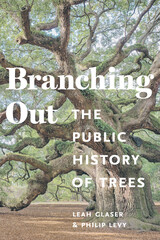 Branching Out: The Public History of Trees
Edited by Leah S. Glaser and Philip Levy
University of Massachusetts Press, 2025 Trees are not just natural resources; they are also cultural ones that present unique challenges and opportunities for public historians. Trees can serve as important objects of memory, recalling past triumphs or tragedies. They can be the last living witness to important events or community stories. Trees can also be objects of preservation, sometimes as individuals, other times as stands or even forests, all of which can take on historical significance for people, sites, and institutions. But as living entities they defy the kind of permanent legal preservation applicable to buildings and other non-living historical objects. Furthermore, their organic fragility can actually make them significant problems for historical sites and local preservation activities. For example, communities have had to cope with extensive tree loss from storm and fire damage, and dying trees can drop limbs or topple over, creating considerable danger to people and resources. Climate-change-driven increasing storm intensity has also highlighted the ways that trees—however historical or beloved—can become considerable threats.
The fourteen new essays in this volume explore the many ways that trees are an integral part of public history practice and sites. The authors draw on a range of approaches and historiographies to look at how memories of race-based hate, patriotic stories, community identities, and changed places have all centered on trees. In addition to contributions from the volume editors, this collection features scholarship by Sonja Dümpelmann Andrew Hurley, Carolyn M. Barske Crawford, Brian Dempsey, Liz Sargent, Sasha Coles, Mariaelena DiBenigno, Evan Haefeli, Krista McCracken, Alena Pirok, Christian Kosmas Mayer Alaina Scapicchio, and David Glassberg.
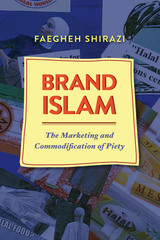 Brand Islam: The Marketing and Commodification of Piety
By Faegheh Shirazi
University of Texas Press, 2016 From food products to fashions and cosmetics to children’s toys, a wide range of commodities today are being marketed as “halal” (permitted, lawful) or “Islamic” to Muslim consumers both in the West and in Muslim-majority nations. However, many of these products are not authentically Islamic or halal, and their producers have not necessarily created them to honor religious practice or sentiment. Instead, most “halal” commodities are profit-driven, and they exploit the rise of a new Islamic economic paradigm, “Brand Islam,” as a clever marketing tool. Brand Islam investigates the rise of this highly lucrative marketing strategy and the resulting growth in consumer loyalty to goods and services identified as Islamic. Faegheh Shirazi explores the reasons why consumers buy Islam-branded products, including conspicuous piety or a longing to identify with a larger Muslim community, especially for those Muslims who live in Western countries, and how this phenomenon is affecting the religious, cultural, and economic lives of Muslim consumers. She demonstrates that Brand Islam has actually enabled a new type of global networking, joining product and service sectors together in a huge conglomerate that some are referring to as the Interland. A timely and original contribution to Muslim cultural studies, Brand Islam reveals how and why the growth of consumerism, global communications, and the Westernization of many Islamic countries are all driving the commercialization of Islam.
 Brand New China: Advertising, Media, and Commercial Culture
Jing Wang
Harvard University Press, 2010 One part riveting account of fieldwork and one part rigorous academic study, Brand New China offers a unique perspective on the advertising and marketing culture of China. Jing Wang’s experiences in the disparate worlds of Beijing advertising agencies and the U.S. academy allow her to share a unique perspective on China during its accelerated reintegration into the global market system.
Brand New China offers a detailed, penetrating, and up-to-date portrayal of branding and advertising in contemporary China. Wang takes us inside an advertising agency to show the influence of American branding theories and models. She also examines the impact of new media practices on Chinese advertising, deliberates on the convergence of grassroots creative culture and viral marketing strategies, samples successful advertising campaigns, provides practical insights about Chinese consumer segments, and offers methodological reflections on pop culture and advertising research.
This book unveils a “brand new” China that is under the sway of the ideology of global partnership while struggling not to become a mirror image of the United States. Wang takes on the task of showing where Western thinking works in China, where it does not, and, perhaps most important, where it creates opportunities for cross-fertilization.
Thanks to its combination of engaging vignettes from the advertising world and thorough research that contextualizes these vignettes, Brand New China will be of interest to industry participants, students of popular culture, and the general reading public interested in learning about a rapidly transforming Chinese society.
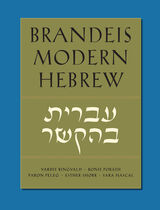 Brandeis Modern Hebrew
Vardit Ringvald, Bonit Porath, Yaron Peleg, Esther Shorr, and Sara Hascal
Brandeis University Press, 2015 Written by the core faculty of the Hebrew Program at Brandeis University, Brandeis Modern Hebrew is an accessible introduction to the Hebrew language for American undergraduates and high school students. Its functional and contextual elements are designed to bring students from the beginner level to the intermediate level, and to familiarize them with those linguistic aspects that will prepare them to function in advanced stages. This volume reflects some of the main principles that have shaped the Brandeis Hebrew curriculum during the past decade. These include: • an emphasis on the learner’s ability to use the target language in all four skills areas: speaking, listening, reading, and writing • an effort to contextualize each unit within a specific subject or theme • exposing the student to authentic and semi-authentic materials (texts written by native speakers) • exploring different elements from Israeli and Jewish culture in the language drills, reading passages, and in selections of sources from the Hebrew literary canon The text in this edition comprises a short introduction to the instructor, 11 units, supplementary Hebrew proficiency guidelines, and a vocabulary list. Audio-visual components for all reading passages are available online for download.
Brandeis Modern Hebrew, Intermediate to Advanced: Pilot Edition
Vardit Ringvald, Bonit Porath, Yaron Peleg, and Esther Shorr
Brandeis University Press, 2013 Written by the core faculty of the Hebrew program at Brandeis University, the pilot edition of Brandeis Modern Hebrew, Intermediate to Advanced serves as a sequel to the well-known volume for beginners. It contains the functional and contextual elements to bring users’ Hebrew language proficiency to the intermediate level and introduce students to skills they need to become advanced in their use of the language. This volume reflects key principles of the Brandeis University Hebrew curriculum. These include: • Placing emphasis on the learner’s ability to use Hebrew in four skill areas: listening, reading, speaking, and writing • Contextualizing each unit within a specific subject or theme • Exposing the student to authentic materials and exploring aspects of Israeli and Jewish culture through language drills and reading passages
 Brandeis of Boston
Allon Gal
Harvard University Press, 1980 This compelling biography of Louis D. Brandeis uncovers the social and psychological roots of his progressivism, ethnicity, and Zionism. Beginning with a detailed description of Brandeis's evolution as a Jew in the Puritan world of Boston and Harvard, Allon Gal lays the groundwork for understanding the conflicts of values and interests that marked Brandeis's career. He traces Brandeis's growing skepticism of Yankee ethics and cultural values. At the same time, Gal unfolds Brandeis's admiration of Jewish laborers and professionals because of their struggles and idealism. He found Jews to be in sharp contrast to his Yankee acquaintances, who first had separated him out socially and then had isolated him professionally. This estrangement culminated in the Brahmins' rejection of President Wilson's suggestion to make Brandeis attorney general.
Paradoxically, although Brandeis was viewed as an outsider by Bostonians, he was judged to be an unrepresentative Jew by the Jewish elite. Doubly alienated, Brandeis began to redirect his career toward a more militant course of social reform and an ideal of a Jewish state. Gal's book is thoughtful and scholarly and is an unusual contribution to the understanding of one of the major figures of Jewish and American history.
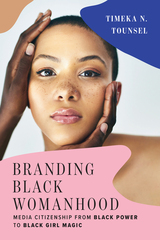 Branding Black Womanhood: Media Citizenship from Black Power to Black Girl Magic
Timeka N. Tounsel
Rutgers University Press, 2022 CaShawn Thompson crafted Black Girls Are Magic as a proclamation of Black women’s resilience in 2013. Less than five years later, it had been repurposed as a gateway to an attractive niche market. Branding Black Womanhood: Media Citizenship from Black Power to Black Girl Magic examines the commercial infrastructure that absorbed Thompson’s mantra. While the terminology may have changed over the years, mainstream brands and mass media companies have consistently sought to acknowledge Black women’s possession of a distinct magic or power when it suits their profit agendas.
Beginning with the inception of the Essence brand in the late 1960s, Timeka N. Tounsel examines the individuals and institutions that have reconfigured Black women’s empowerment as a business enterprise. Ultimately, these commercial gatekeepers have constructed an image economy that operates as both a sacred space for Black women and an easy hunting ground for their dollars.
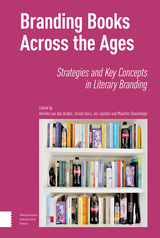 Branding Books Across the Ages: Strategies and Key Concepts in Literary Branding
Helleke van den Braber
Amsterdam University Press, 2021 For many, literature and marketing are considered opposite phenomena. This book discusses cases in which the two are closely connected. It argues that literature is subject to the same mechanisms as other commercial products: our experience of literary texts is prefigured by brands, trademarks that identify a product and differentiate it from its competitors. From the early modern period onwards, literary authors and their texts are constantly ‘branded’ and have been both the object and the trailblazer of a complex marketing process. The authors of this volume analyze this branding process throughout the centuries, focusing on the Netherlands. To what extent is our experience of Dutch literature prefigured by brands, and what role does branding play when introducing European authors in the Dutch literary field (or vice versa)? By answering these questions, Branding Books Across the Ages seeks to show how literary scholars understand branding – a phenomenon that has long been intertwined with literature.
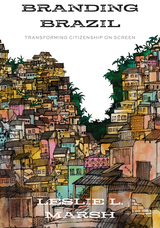 Branding Brazil: Transforming Citizenship on Screen
Leslie L. Marsh
Rutgers University Press, 2021 Branding Brazil examines a panorama of contemporary cultural productions including film, television, photography, and alternative media to explore the transformation of citizenship in Brazil from 2003 to 2014. A utopian impulse drove the reproduction of Brazilian cultural identity for local and global consumption; cultural production sought social and economic profits, especially greater inclusion of previously marginalized people and places. Marsh asserts that three communicative strategies from branding–promising progress, cultivating buy-in, and resolving contradictions–are the most salient and recurrent practices of nation branding during this historic period. More recent political crises can be understood partly in terms of backlash against marked social and political changes introduced during the branding period. Branding Brazil takes a multi-faceted approach, weaving media studies with politics and cinema studies to reveal that more than a marketing term or project emanating from the state, branding was a cultural phenomenon.
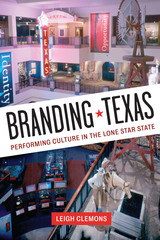 Branding Texas: Performing Culture in the Lone Star State
By Leigh Clemons
University of Texas Press, 2008 Ask anyone to name an archetypal Texan, and you're likely to get a larger-than-life character from film or television (say John Wayne's Davy Crockett or J. R. Ewing of TV's Dallas) or a politician with that certain swagger (think LBJ or George W. Bush). That all of these figures are white and male and bursting with self-confidence is no accident, asserts Leigh Clemons. In this thoughtful study of what makes a "Texan," she reveals how Texan identity grew out of the history—and, even more, the myth—of the heroic deeds performed by Anglo men during the Texas Revolution and the years of the Republic and how this identity is constructed and maintained by theatre and other representational practices. Clemons looks at a wide range of venues in which "Texanness" is performed, including historic sites such as the Alamo, the battlefield at Goliad, and the San Jacinto Monument; museums such as the Bob Bullock Texas State History Museum; seasonal outdoor dramas such as Texas! at Palo Duro Canyon; films such as John Wayne's The Alamo and the IMAX's Alamo: The Price of Freedom; plays and TV shows such as the Tuna trilogy, Dallas, and King of the Hill; and the Cavalcade of Texas performance at the 1936 Texas Centennial. She persuasively demonstrates that these performances have created a Texan identity that has become a brand, a commodity that can be sold to the public and even manipulated for political purposes.
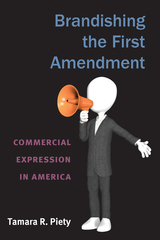 Brandishing the First Amendment: Commercial Expression in America
Tamara R. Piety
University of Michigan Press, 2013 Over the past two decades, corporations and other commercial entities have used strategic litigation to win more expansive First Amendment protections for commercial speech—from the regulation of advertising to the role corporate interests play in the political process, most recently debated in the Supreme Court case of Citizens United v. Federal Election Commission. Tamara R. Piety, a nationally known critic of commercial and corporate speech, argues that such an expansion of First Amendment speech rights imperils public health, safety, and welfare; the reliability of commercial and consumer information; the stability of financial markets; and the global environment.
Beginning with an evaluation of commonly evoked philosophical justifications for freedom of expression, Piety determines that, while these are appropriate for the protection of an individual’s rights, they should not be applied too literally to commercial expression because the corporate person is not the moral equivalent of the human person. She then gathers evidence from public relations and marketing, behavioral economics, psychology, and cognitive studies to show how overly permissive extensions of First Amendment protections to commercial expression limit governmental power to address some of the major social, economic, and environmental challenges of our time. “The timeliness of the topic and the provision of original positions are sure to make the book a valuable contribution that should draw much attention.”
—Kevin W. Saunders, Michigan State University
Brann and the Iconoclast
By Charles Carver
University of Texas Press, 1957 "They wouldn't let him rest—even in his grave." Thus Charles Carver opens his story of the climactic years of a journalist who had poured out such blazing prose that readers from England to Hawaii mourned his murder. The impact of William Cowper Brann's Iconoclast upon the town of Waco, Texas, in the 1890's was like a rocket burst in a quiet sky. Rebelling against Victorian hypocrisy, the newspaperman took aim at organized virtue, exemplified for him by Baylor University and other Baptist organizations. Dr. Roy Bedichek, noted author and naturalist, knew Brann, and after reading this book in manuscript said, "I am at once delighted and disappointed: disappointed to find my teen-age hero reduced to size... delighted with the art of the biographer.... It has genuine literary excellence... is a chapter in the history of the publishing business in Texas that needs to be put into print...."
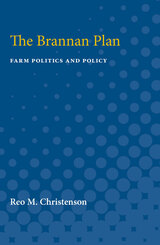 The Brannan Plan: Farm Politics and Policy
Reo M. Christenson
University of Michigan Press, 1959 "Prosperous farmers," says Harry Truman, "make for a prosperous nation, and when farmers are in trouble, the nation is in trouble." The Brannan Plan—a bid for a prosperous nation—was the boldest, most far-reaching agricultural program in recent American history.Farm policy is the cornerstone of our economy. Brannan's program to stabilize farm income not by price supports, but by direct federal payments to farmers, was the most hotly disputed proposal for dealing with the farm problem in our time. When it was first put forward in 1949, the Brannan Plan provoked vitriolic political battle, a first-class row in Congress, and a raging national debate.Reo M. Christenson's book is an appraisal of the Brannan Plan, its economic and political consequences, and its potential value. He examines past farm policy, the power of the farm organizations, and the partisan passions that destroyed the Plan. More broadly, he analyzes the roles of Congress, federal agencies, and political parties in making farm policy, and their responsibilities to the farmer and to the country at large.Despite the defeat of the Plan in 1950, proposals much like that of Secretary Brannan crop up in Congress and elsewhere with a persistence that pays tribute to the hardiness of his vision. In sum, Christenson says, "it seems a safe bet that the direct payment-free market system has more of a future than a past on the American farm legislative scene."
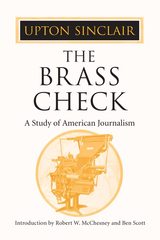 The Brass Check: A STUDY OF AMERICAN JOURNALISM
Upton Sinclair
University of Illinois Press, 2002 In this systematic critique of the structural basis of U.S. media -- arguably the first one ever published -- Upton Sinclair writes that “American journalism is a class institution serving the rich and spurning the poor.” Likening journalists to prostitutes, the title of the book refers to a chit that was issued to patrons of urban brothels of the era.
Fueled by mounting disdain for newspapers run by business tycoons and conservative editors, Sinclair self-published The Brass Check in the years after The Jungle had made him a household name. Despite Sinclair’s claim that this was his most important book, it was dismissed by critics and shunned by reviewers. Yet it sold over 150,000 copies and enjoyed numerous printings.
A substantial introduction to this paperback edition by Robert W. McChesney and Ben Scott asserts the book’s importance as a cornerstone critique of commercial journalism and a priceless resource for understanding the political turbulence of the Progressive Era.
 Brassai: Letters to My Parents
Brassaï
University of Chicago Press, 1997 Nicknamed the "Eye of Paris" by Henry Miller, Brassaï was one of the great European photographers of the twentieth century. This volume of letters and photographs, many published for the first time, chronicles the fascinating early years of Brassaï's life and artistic development in Paris and Berlin during the 1920s and 1930s.
"[Brassaï] is probably the only photographer—at least in France—to have acquired such a vast audience and mastered his material to such a degree that he can express himself with a flexibility and apparent ease that is almost literary in its nature."—Jean Gallien, Photo-Monde
"The letters that Brassaï wrote to his parents between 1920 and 1940 chronicle the sometimes painful stages by which this gifted man hauled himself from penury to celebrity."—Peter Hamilton, Times Literary Supplement
"In these proud, protective, occasionally conscience-stricken missives, the young man full of eager dreams emerges as one of the century's pioneering photographers, revered for his lushly atmospheric portraits of Paris after dark."—Elle
"A fascinating insight into how a bright individual slowly found his calling."—Christine Schwartz Hartley, New York Times Book Review
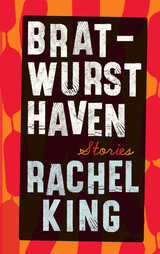 Bratwurst Haven: Stories
Rachel King
West Virginia University Press, 2022 2023 Colorado Book Award Winner, Literary Fiction
“An excellent collection that’s likely to appeal to fans of Alice Munro and Tobias Wolff.” —Kirkus Reviews
It’s almost a decade after the Great Recession, and in Colorado, St. Anthony Sausage has not recovered. Neither have its employees: a laid-off railway engineer, an exiled computer whiz, a young woman estranged from her infant daughter, an older man with cancer who lacks health care. As these low-wage workers interact under the supervision of the factory’s owner and his quietly rebellious daughter, they come to understand that in America’s postindustrial landscape, although they may help or comfort each other, they also have to do what’s best for themselves.
Over the course of these twelve interrelated stories, Rachel King gives life to diverse, complex, and authentic characters who are linked through the sausage factory and through their daily lives in a vividly rendered small town in Boulder County. The internal and external struggles of Bratwurst Haven’s population are immediately and intimately relatable and resonant: these people seek answers within the world they inhabit while questioning what it means to want more from their lives.
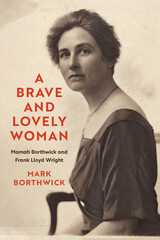 A Brave and Lovely Woman: Mamah Borthwick and Frank Lloyd Wright
Mark Borthwick
University of Wisconsin Press, 2025 Mamah Borthwick was an energetic, intelligent, and charismatic woman who earned a master’s degree at a time when few women even attended college, translated writings by a key figure of the early feminist movement, and taught at one of Germany’s best schools for boys. She is best known, however, as the mistress of the famous American architect Frank Lloyd Wright, and for her shocking murder at the renowned Wisconsin home he built for her, Taliesin. A Brave and Lovely Woman offers an important corrective to the narrative of Wright and Borthwick, a love story as American in character as it is Shakespearean in conclusion.
Little of Wright’s life and work has been left untouched by his many admirers, critics, and biographers. And yet the woman who stood at the center of his emotional life, Mamah Borthwick, has fallen into near obscurity. Mark Borthwick—a distant relative—recenters Mamah Borthwick in her own life, presenting a detailed portrait of a fascinating woman, a complicated figure who was at once a dedicated mother and a faithless spouse, a feminist and a member of a conservative sorority, a vivacious extrovert and a social pariah. Careful research and engaging prose at last give Borthwick, an obscure but crucial character in one of America’s most famous tragedies, center stage.
Brave Are My People: Indian Heroes Not Forgotten
Frank Waters
Ohio University Press, 1998 Pontiac, Sequoyah, Geronimo, Sitting Bull, Chief Joseph, and Chief Seattle. These legendary names are familiar even to the uninitiated in Native American history, yet the life stories of these great spiritual leaders have been largely unknown. In this, his last book, internationally celebrated author Frank Waters makes vivid the poignant, humorous, and tragic stories of these neglected and heroic Native Americans. From the brilliant tactical abilities of famed warriors to the eloquent oratory of indigenous philosophers, poets, and statesmen, the profiles in Brave Are My People help correct this error of omission. Now in paperback, Brave Are My People represents a major contribution to Water’s remarkable literary work.
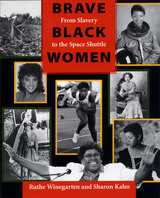 Brave Black Women: From Slavery to the Space Shuttle
By Ruthe Winegarten and Sharon Kahn
University of Texas Press, 1997 Brave black women have played important roles in American history. Before the Emancipation Proclamation in 1863, black women bore the bonds of slavery with courage and strength. Since Emancipation, black women have supported schools, churches, and civic organizations, entered many professions, and helped to build strong communities. This book dramatizes their impressive story and celebrates their achievements. Writing especially for students in grades four through eight, Ruthe Winegarten and Sharon Kahn trace the history of black women from slavery until today. Their story includes many heroines, from Emily Morgan, "the Yellow Rose of Texas," to pioneer aviator Bessie Coleman, astronaut Mae Jemison, opera singer Barbara Conrad, actresses Phylicia Rashad and Debbie Allen, and Congresswoman Barbara Jordan, whose life story forms the final chapter. In addition to these famous black women, the book also profiles teachers, businesswomen, civil rights leaders, community activists, doctors, nurses, athletes, musicians, artists, and political leaders. Adapted from the award-winning Black Texas Women: 150 Years of Trial and Triumph, it will be fascinating reading for children and their parents and grandparents, teachers, and librarians.
 Brave Humanism: Black Women Rewriting the Human in the Age of Jane Crow
Mollie Godfrey
Ohio State University Press, 2025 In Brave Humanism, Mollie Godfrey argues that long before the post-1960s critiques of Western humanism emerged, an earlier generation of Black women writers were committed to reclaiming and redefining the human on their own terms. For the writers under study here—Pauline Hopkins, Nella Larsen, Zora Neale Hurston, Ann Petry, Gwendolyn Brooks, and Lorraine Hansberry—narrative forms offered intellectual space to challenge the white supremacist and patriarchal logics of Western humanism that underwrote de jure segregation. Through these narratives, they worked toward their own visions of humanity and human freedom—visions that would come to inspire later generations of Black feminists. By recovering Jane Crow–era Black women writers’ undervalued intellectual work of critique and creation, Godfrey also intervenes in critical conversations about the relationships between Black creative work, Black women’s intellectual work, and our ideas about human agency and collectivity. In recovering this hidden intellectual genealogy, this book offers a more nuanced history of Black women’s engagement with the idea of the human and places a longer history of Black women’s writing at the heart of humanist and posthumanist study.
 Brave New Digital Classroom: Technology and Foreign Language Learning
Robert J. Blake. Foreword by Dorothy M. Chun
Georgetown University Press, 2008 Brave New Digital Classroom deftly interweaves results of pedagogical research and descriptions of the most successful computer-assisted language learning (CALL) projects to explore how technology can best be employed in the foreign-language curriculum to assist the second language acquisition process. Directed to all language teachers—whether at the school or the postsecondary level, with or without prior experience—this book focuses on how to use new technologies effectively. Blake urges teachers to move beyond a simple functional competence of knowing how to use the tools toward first a critical competence—realizing what the various tools are good for—and ultimately a rhetorical competence of knowing how the tools will help transform the learning environment. This book examines the effective use of a range of technologies, from Internet sites through computer-mediated communication such as synchronous chatting and blogs, to distance learning. At the end of each chapter questions and activities demonstrate the interactionist, learner-centered pedagogy Blake espouses. An invaluable reference for experienced researchers and CALL developers as well as those of limited experience, Brave New Digital Classroom is also ideal for graduate-level courses on second language pedagogy. It will also be of interest to department chairs and administrators seeking to develop and evaluate their own CALL programs.
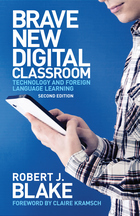 Brave New Digital Classroom: Technology and Foreign Language Learning, Second Edition
Robert J. Blake. Foreword by Claire Kramsch
Georgetown University Press, 2013 Brave New Digital Classroom examines the most effective ways to utilize technology in language learning. The author deftly interweaves the latest results of pedagogical research with descriptions of the most successful computer-assisted language learning (CALL) projects to show how to implement technology in the foreign language curriculum to assist the second language acquisition process. This fully updated second edition includes new chapters on the latest electronic resources, including gaming and social media, and discusses the realities and potential of distance learning for second language acquisition. The author examines the web, CALL applications, and computer-mediated communication (CMC), and suggests how the new technologically assisted curriculum will work for the foreign-language curriculum. Rather than advocating new technologies as a replacement for activities that can be done equally well with traditional processes, the author envisions a radical change as teachers rethink their strategies and develop their competence in the effective use of technology in language teaching and learning. Directed at all language teachers, from the elementary school to postsecondary levels, the book is ideal for graduate-level courses on second language pedagogy. It also serves as an invaluable reference for experienced researchers, CALL developers, department chairs, and administrators.
 Brave New Digital Classroom: Technology and Foreign Language Learning, Third Edition
Robert J. Blake and Gabriel Guillén. Foreword by Steven L. Thorne
Georgetown University Press, 2020 Robert Blake, now with Gabriel Guillén, updates his successful book (1st ed. 2008, 2nd ed. 2013) on how to teach foreign languages using technology. Brave New Digital Classroom touches on all of the key concepts and challenges of teaching with technology, focusing on issues specific to FLL or L2 learning and CALL. Originally referred to as computer-assisted language learning, CALL has come to encompass any kind of learning that uses digital tools for language learning. This edition reframes the conversation to account for how technology has been integrated into our lives. Blake and Guillén address the ways technology can help with L2, how to choose the right digital tools, how to use those tools effectively, and how technology can impact literacy and identity. The book is primed for use in graduate courses: terminology is in bold and a comprehensive glossary is included; each chapter finishes with a short list of references for further reading on the topic and discussion questions. The authors provide short interview videos (free via GUP website) to enhance discussions on each chapter’s topic.
|
|
